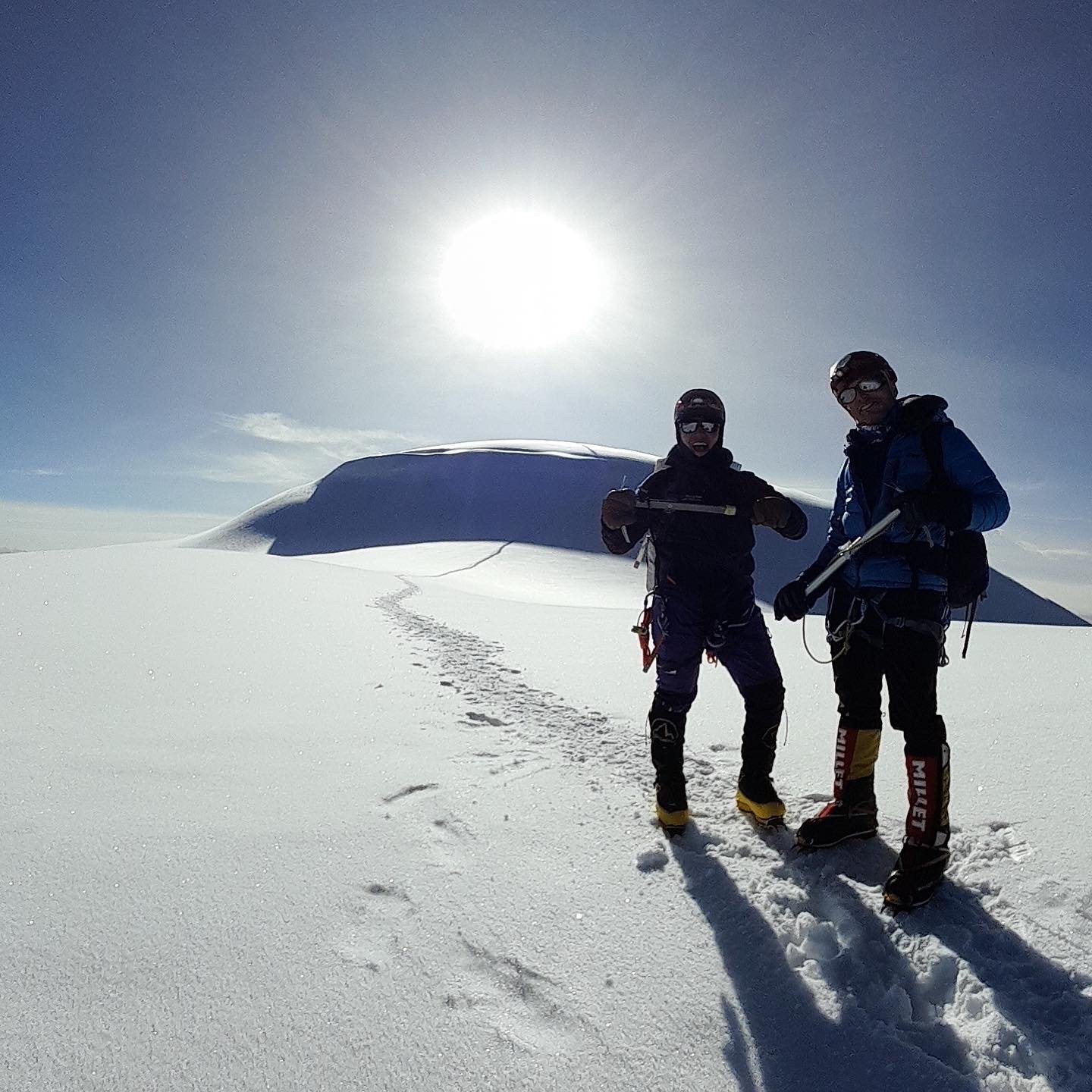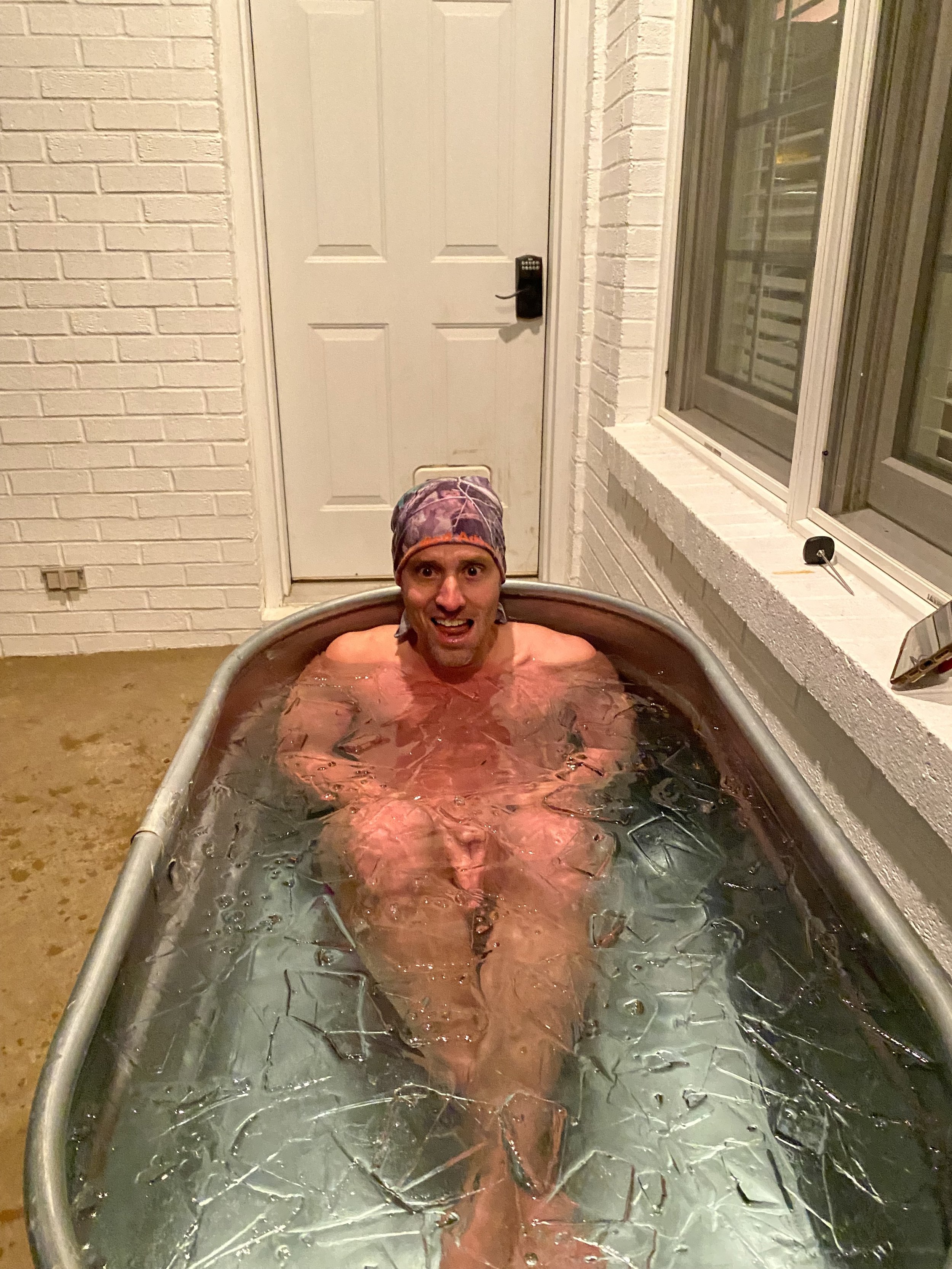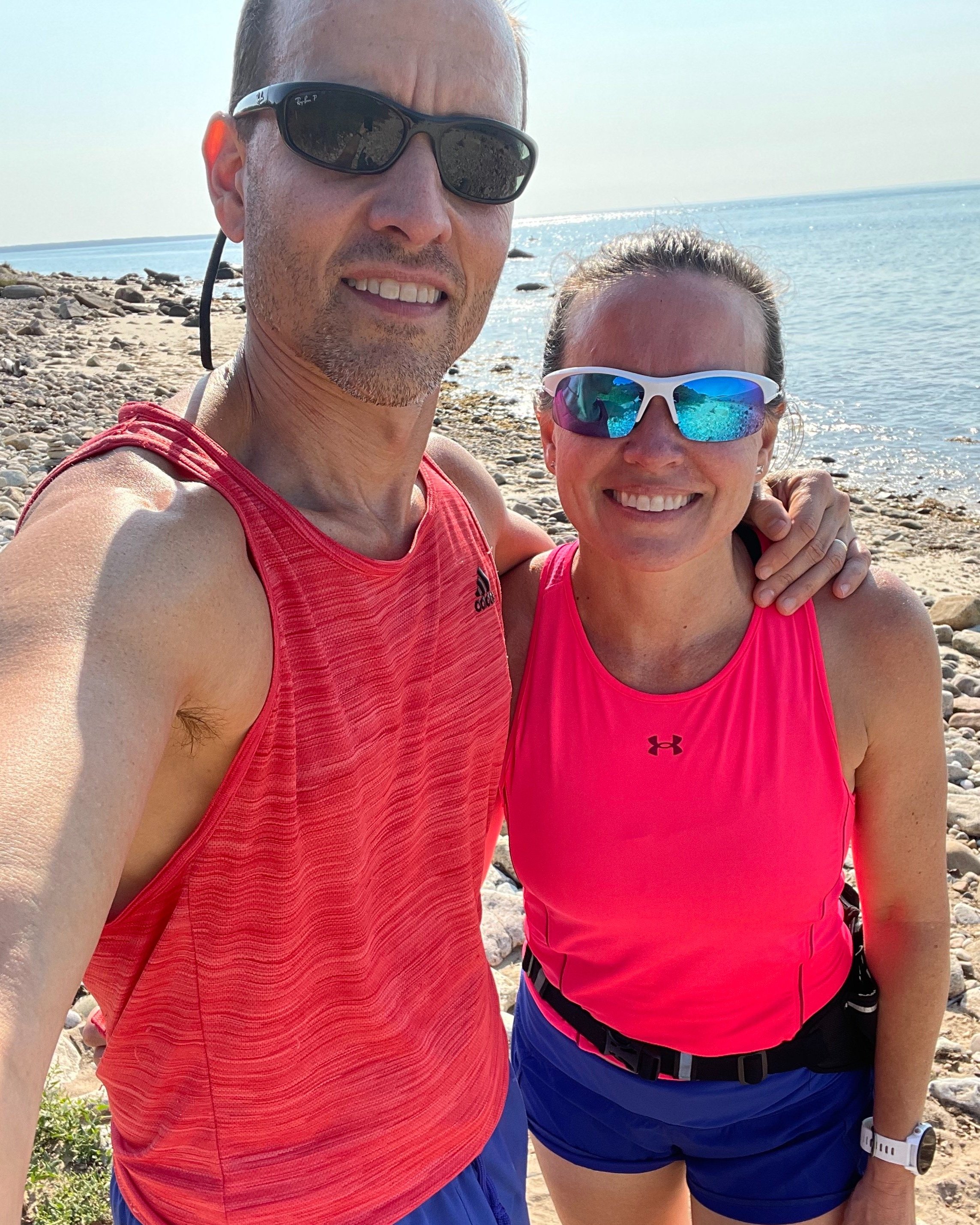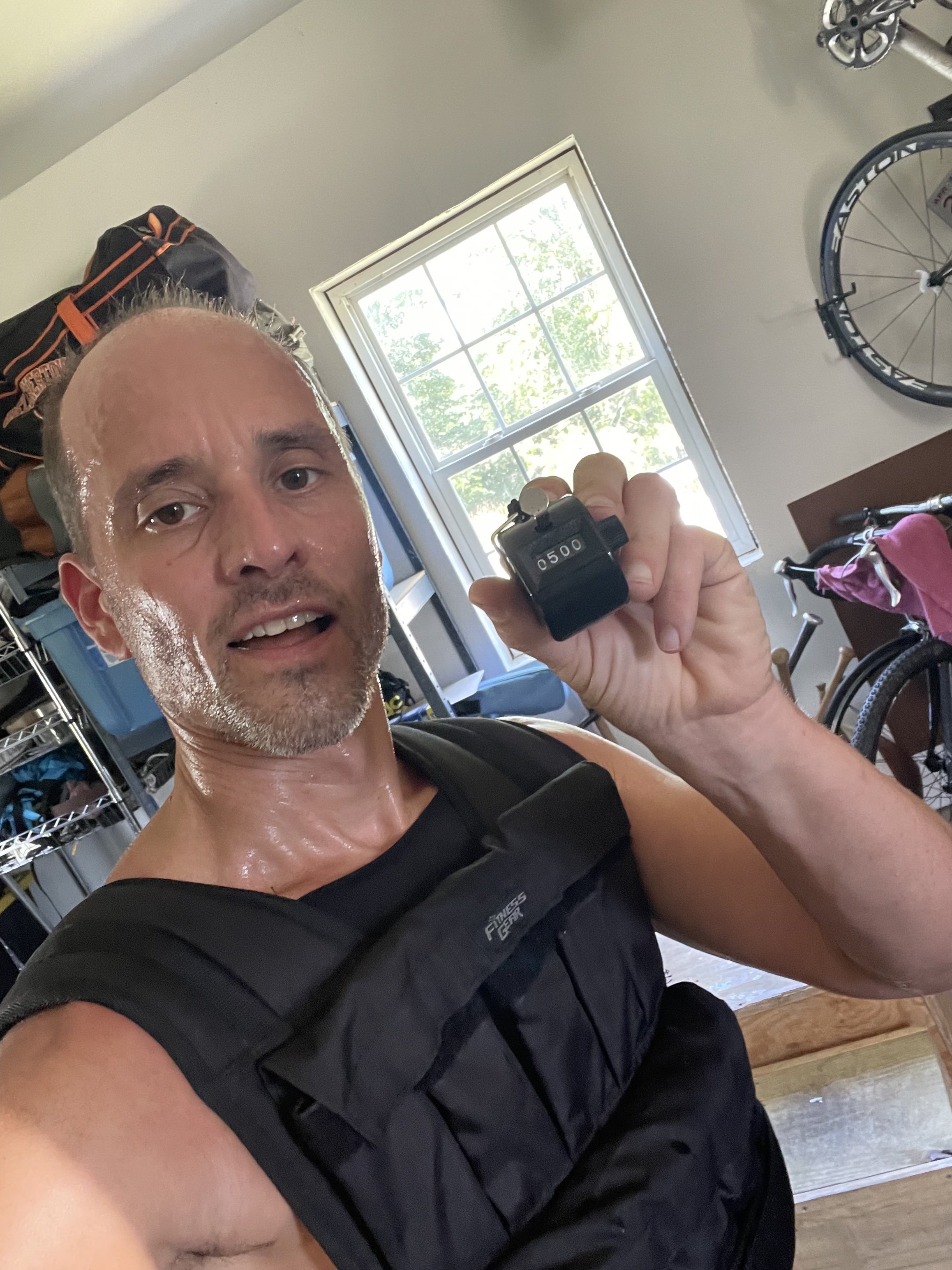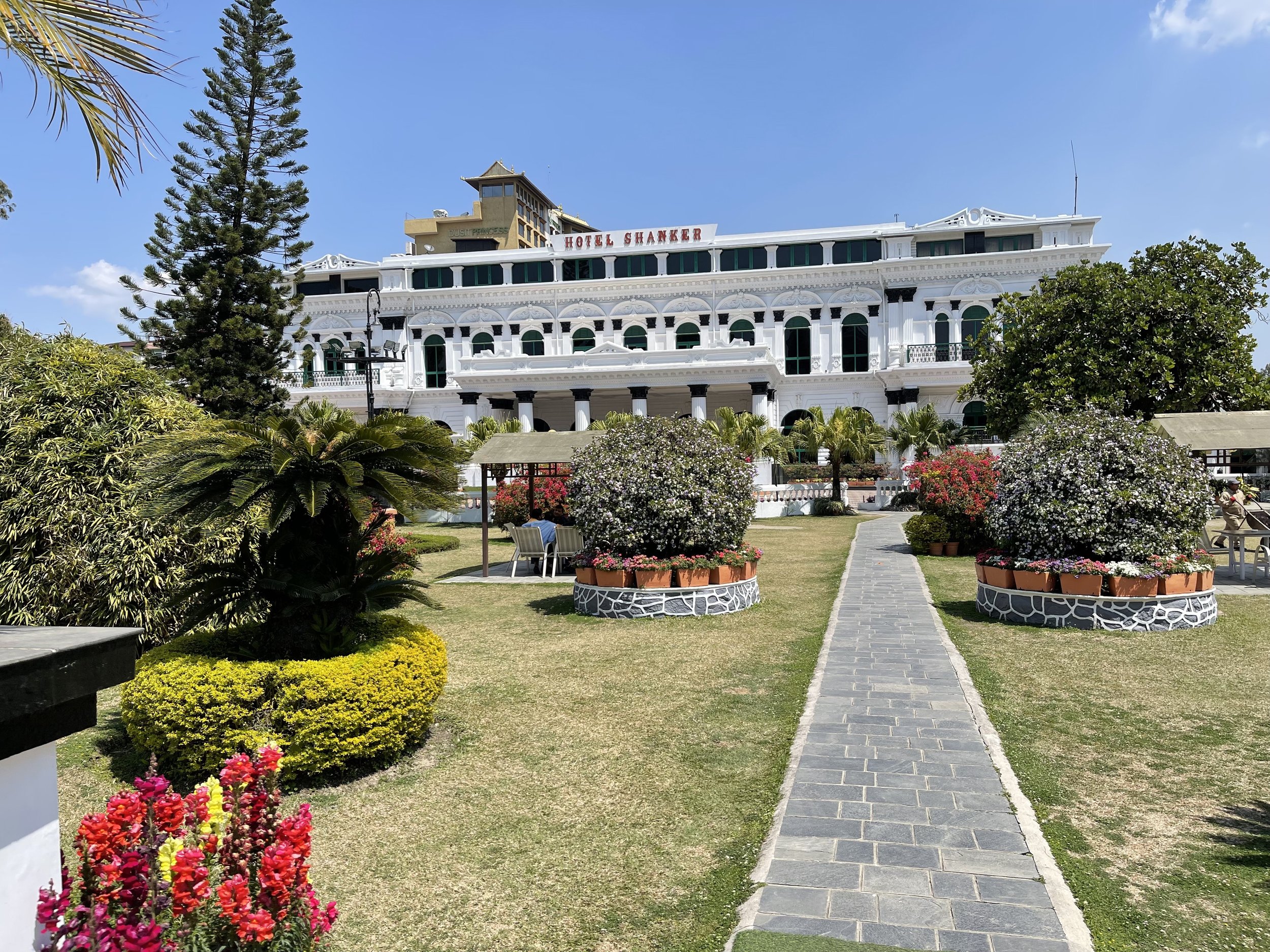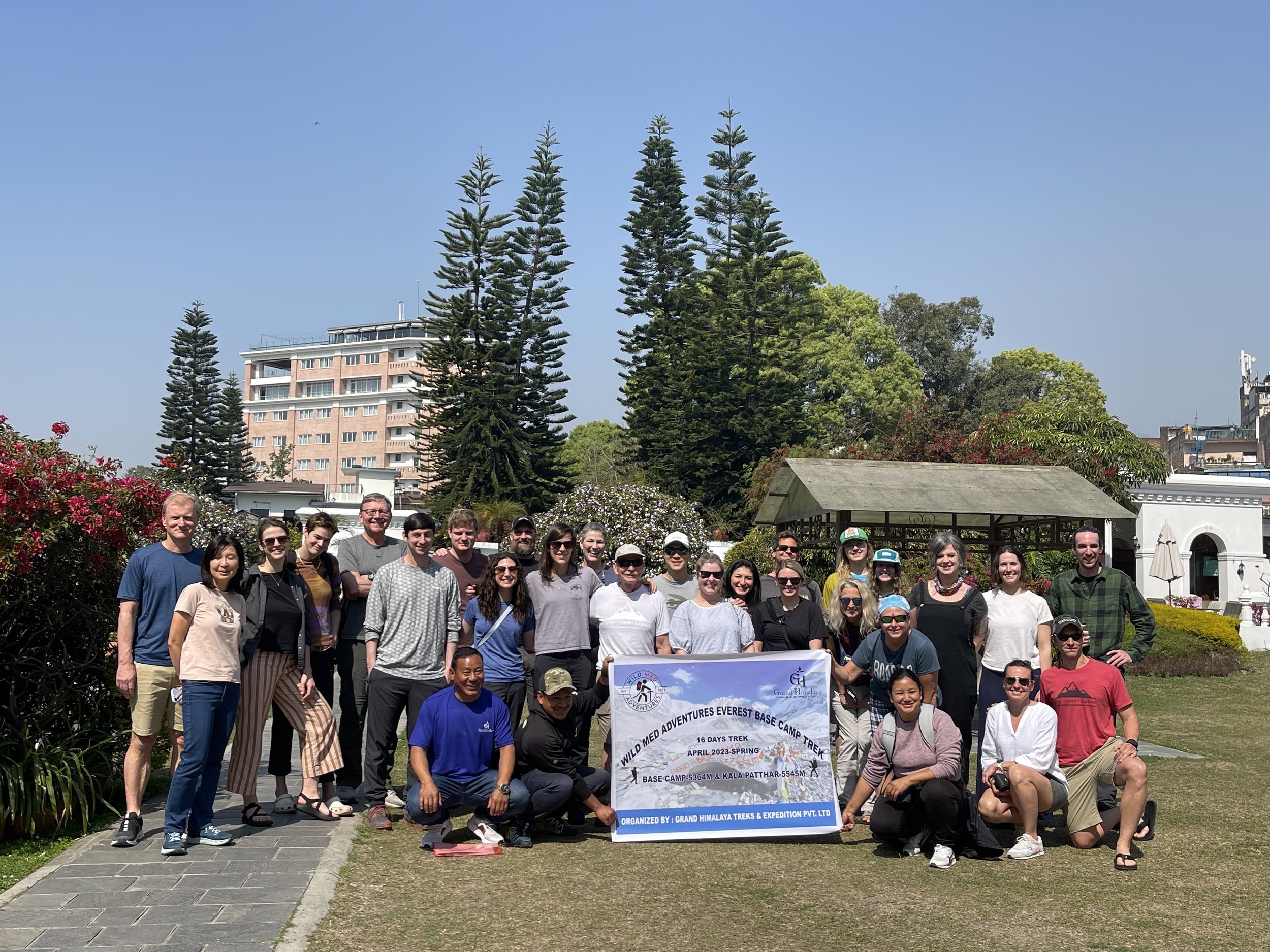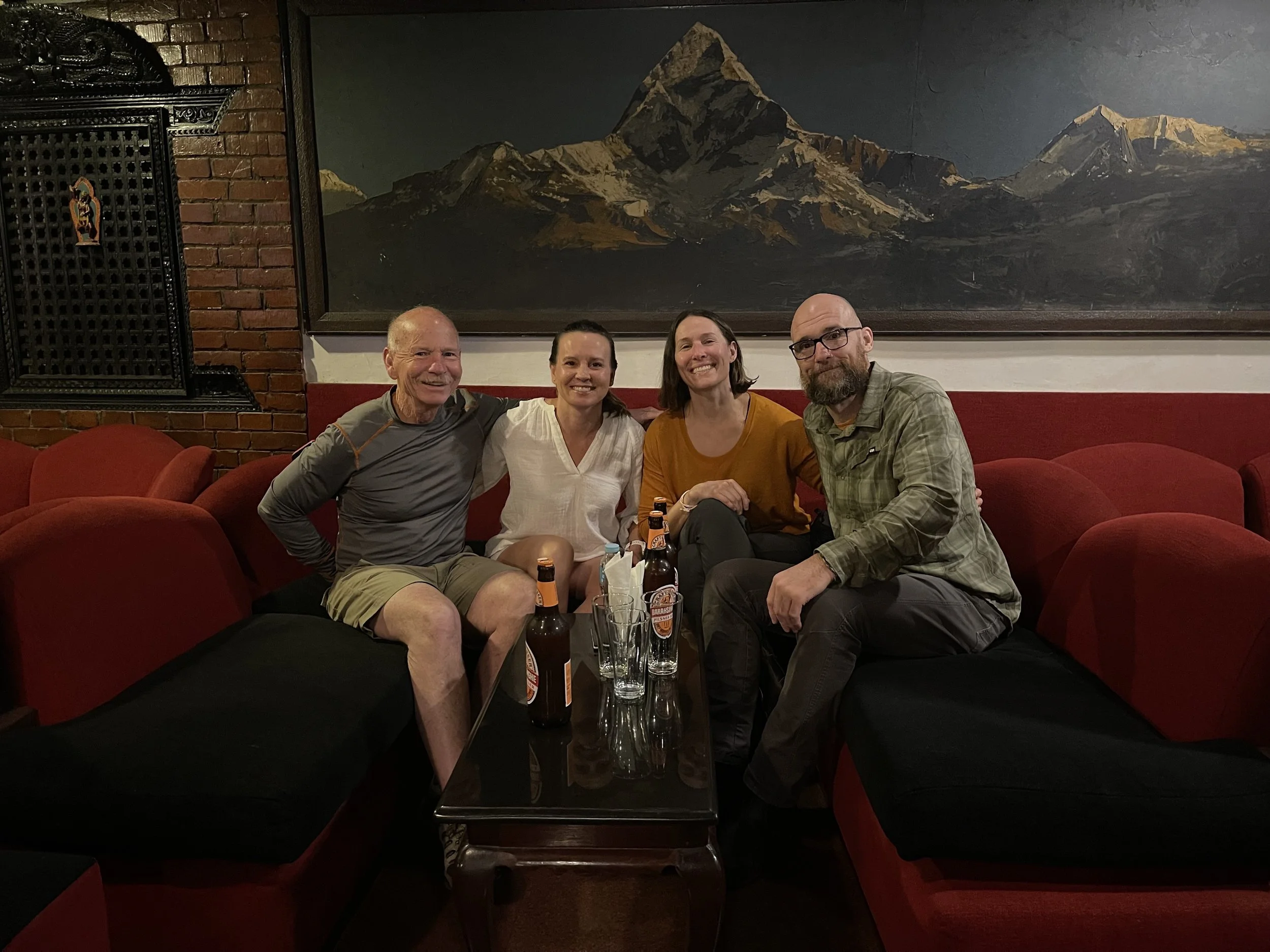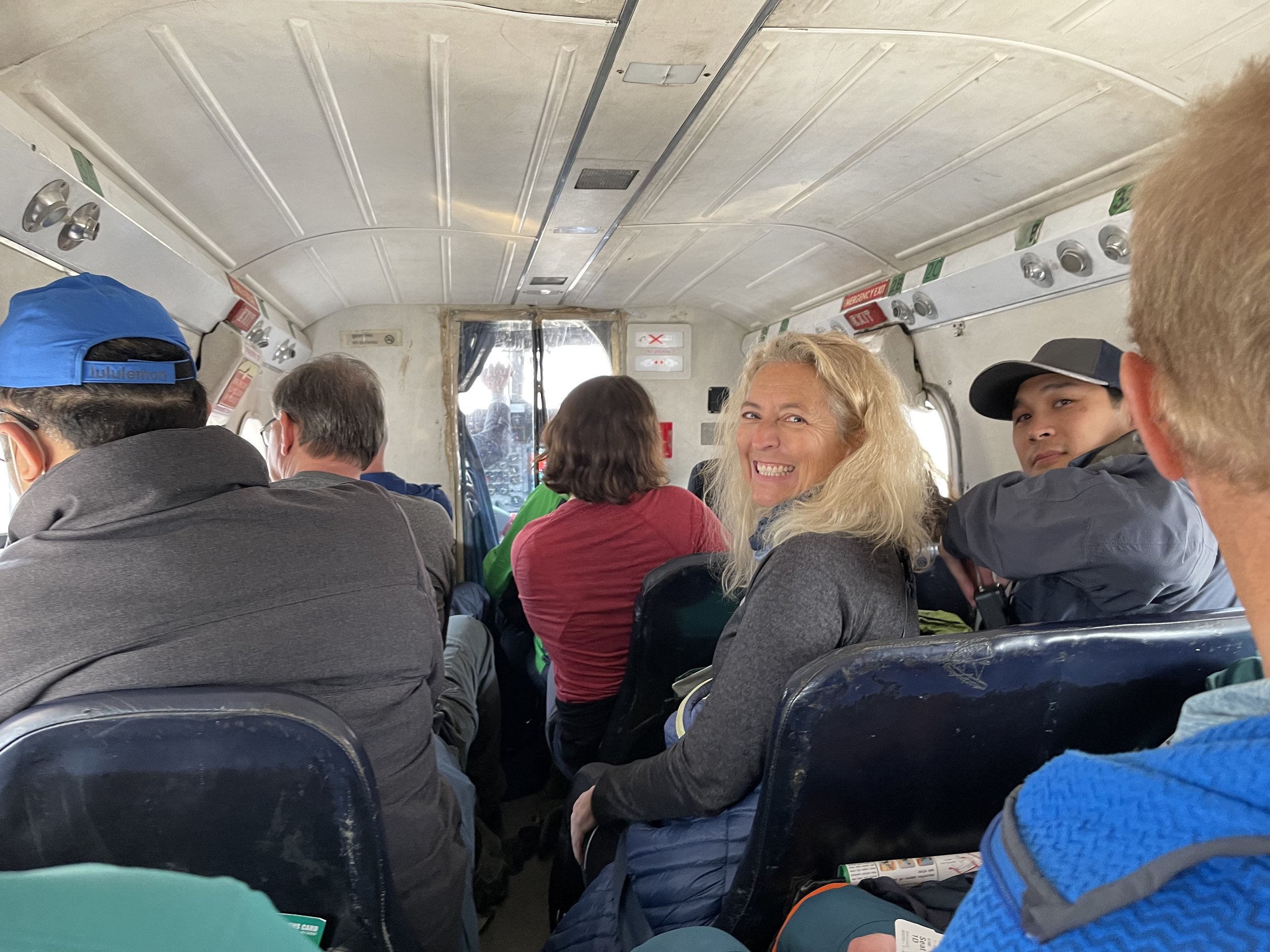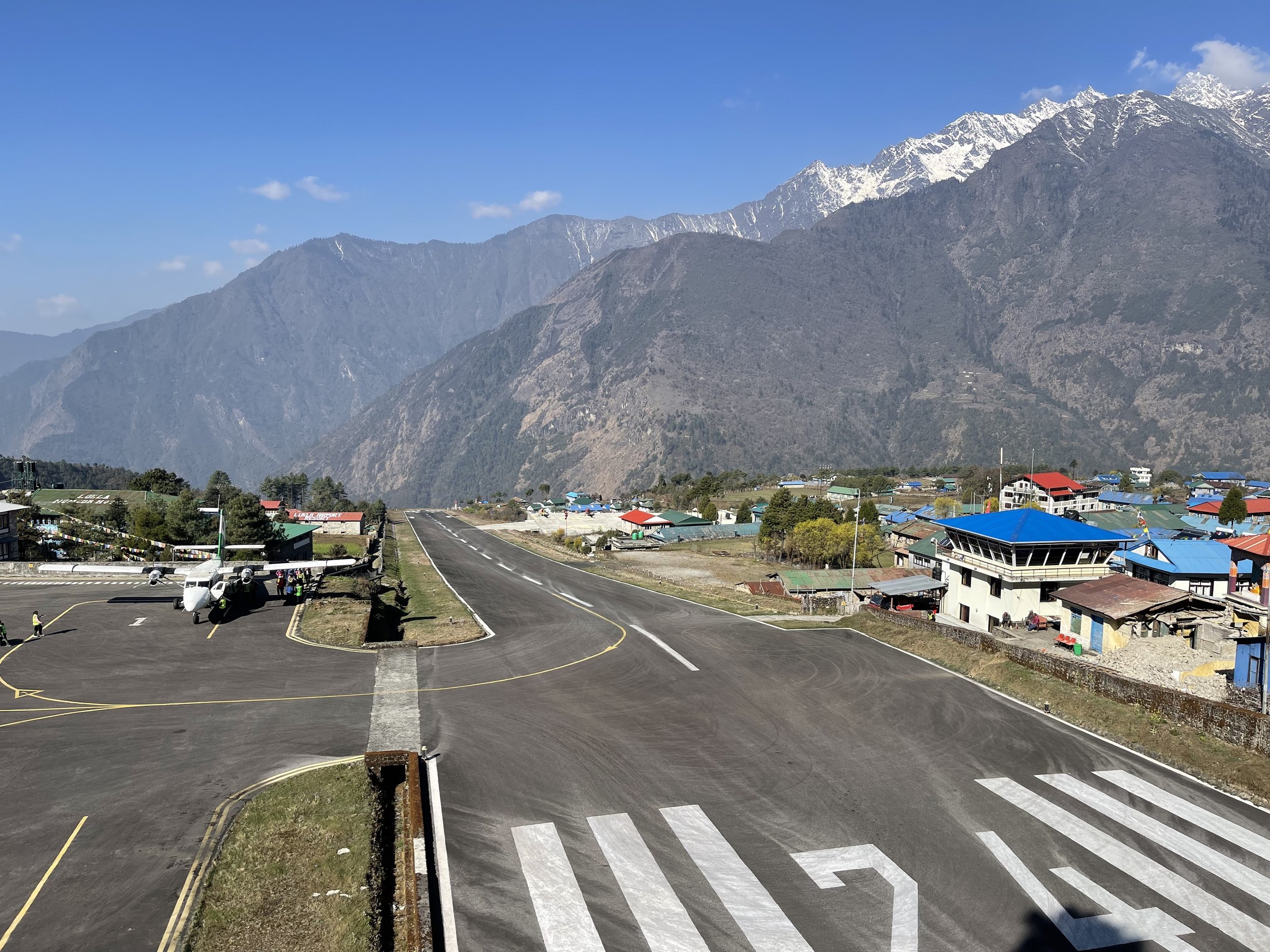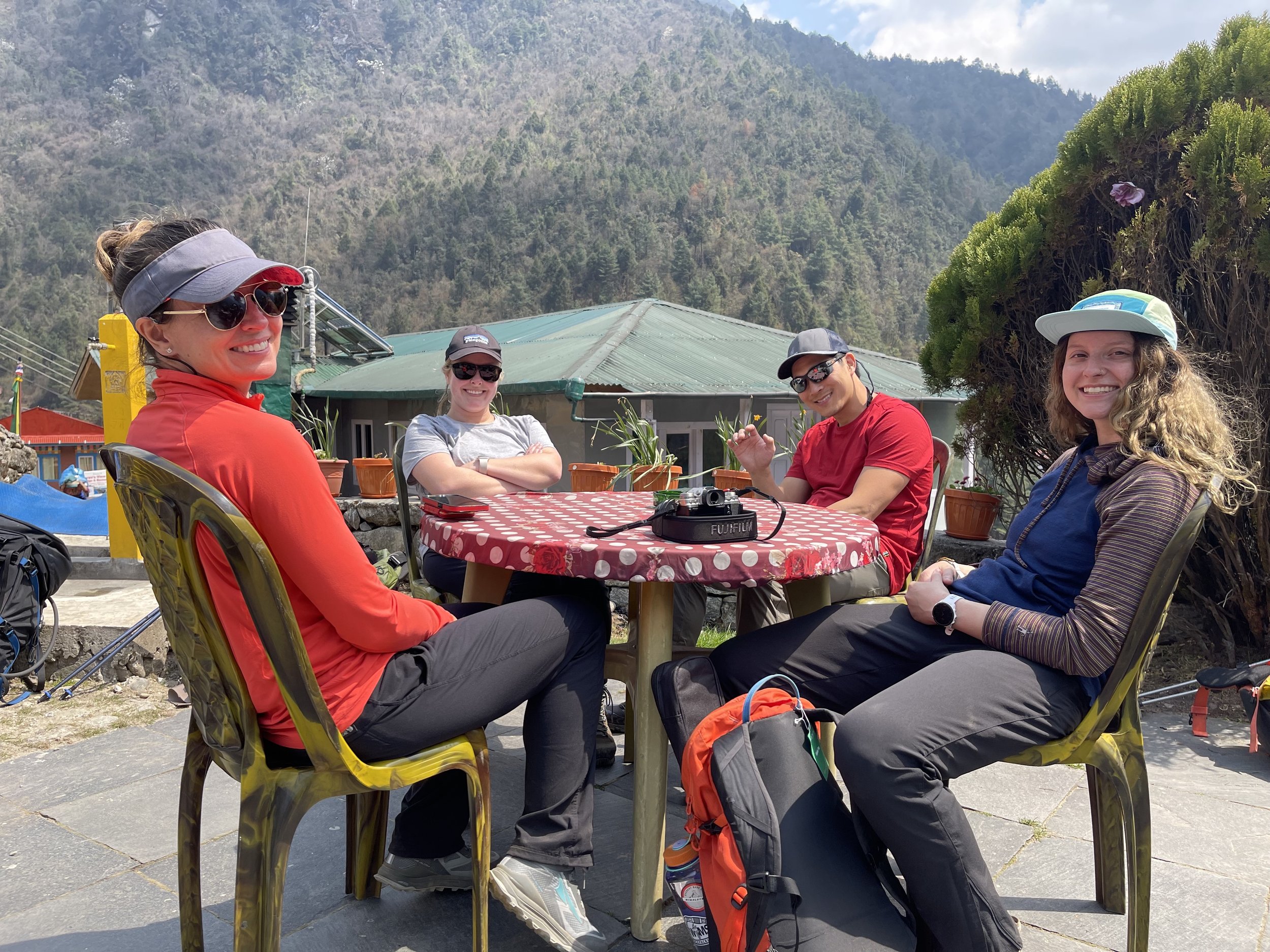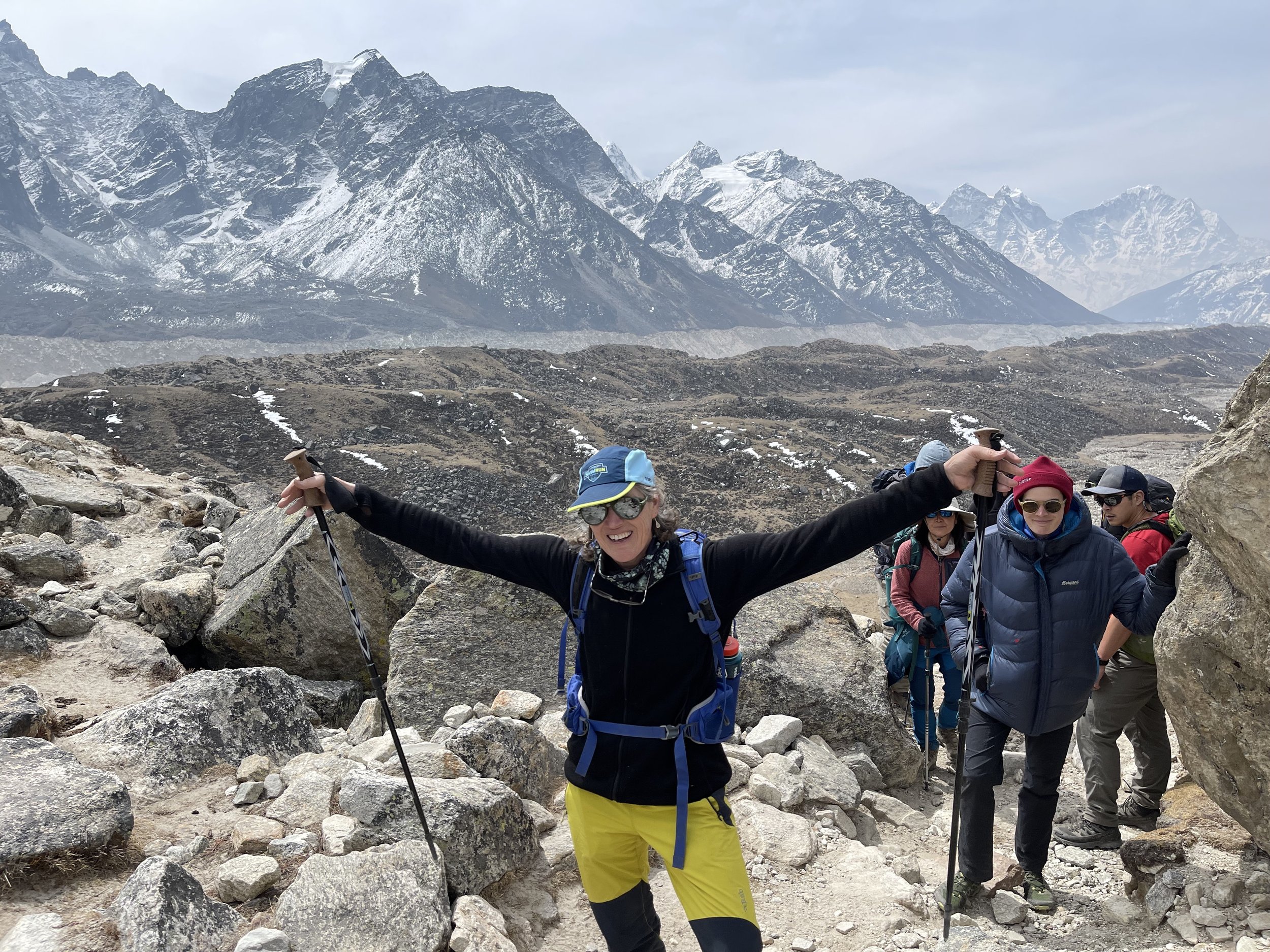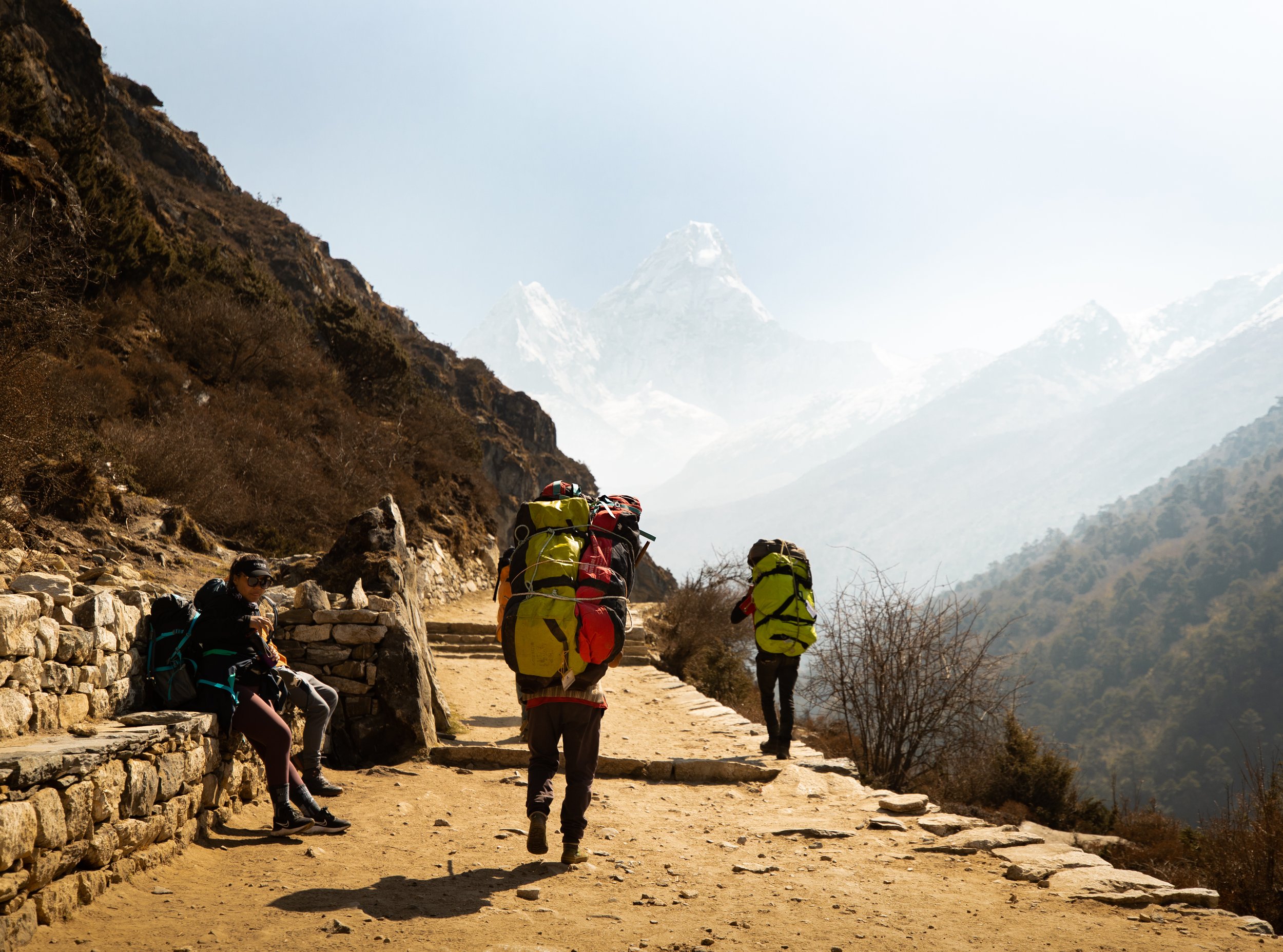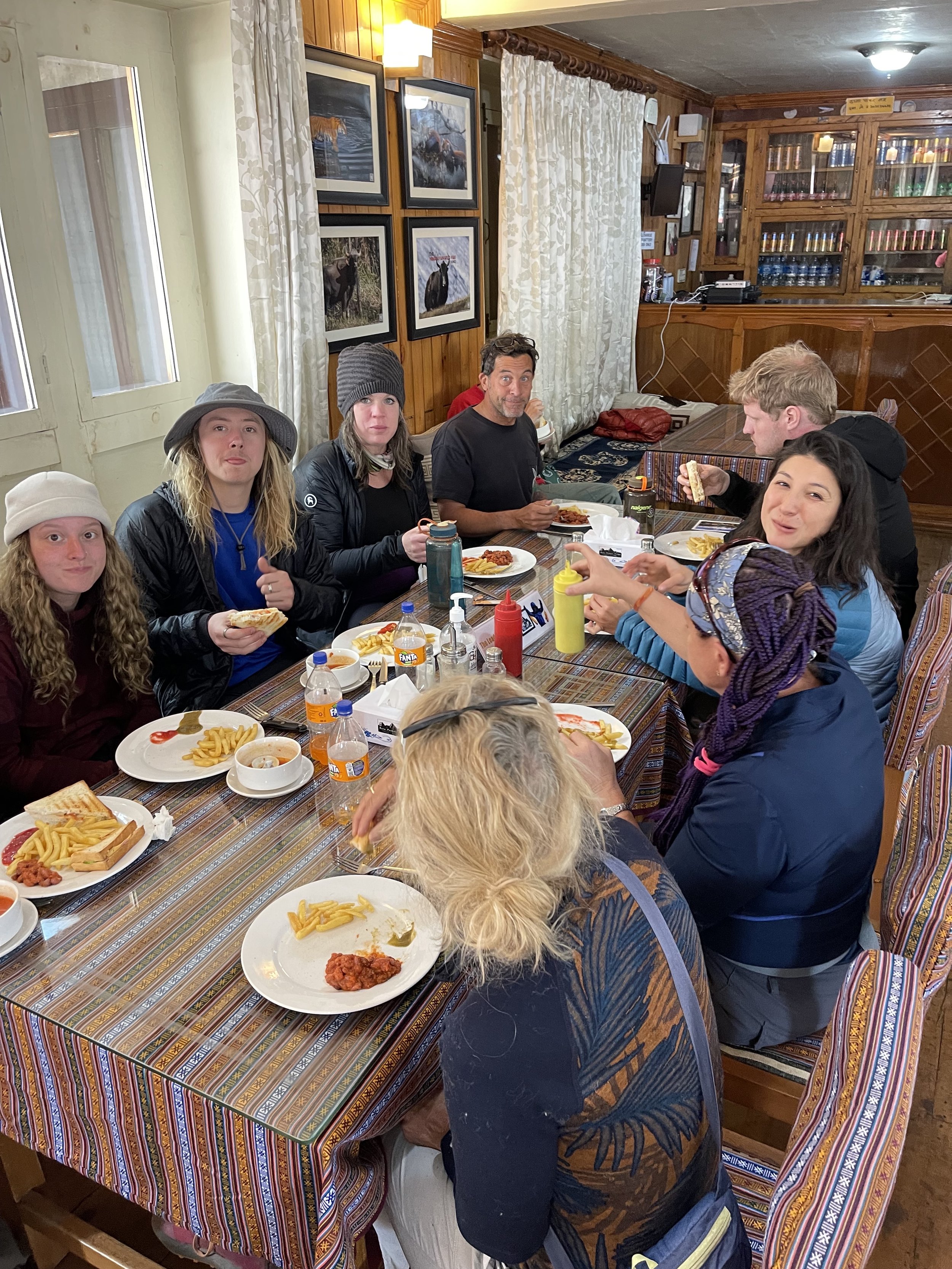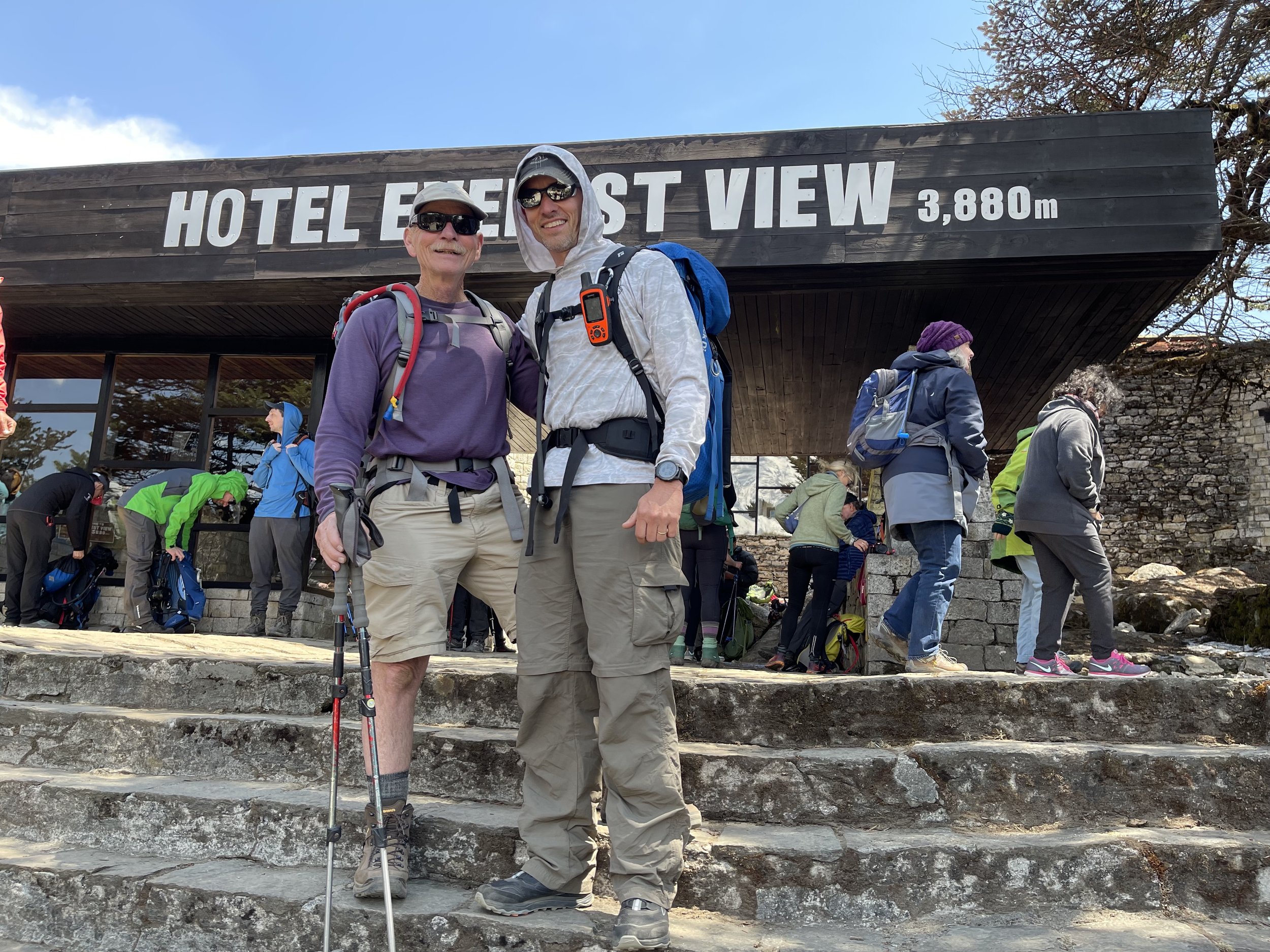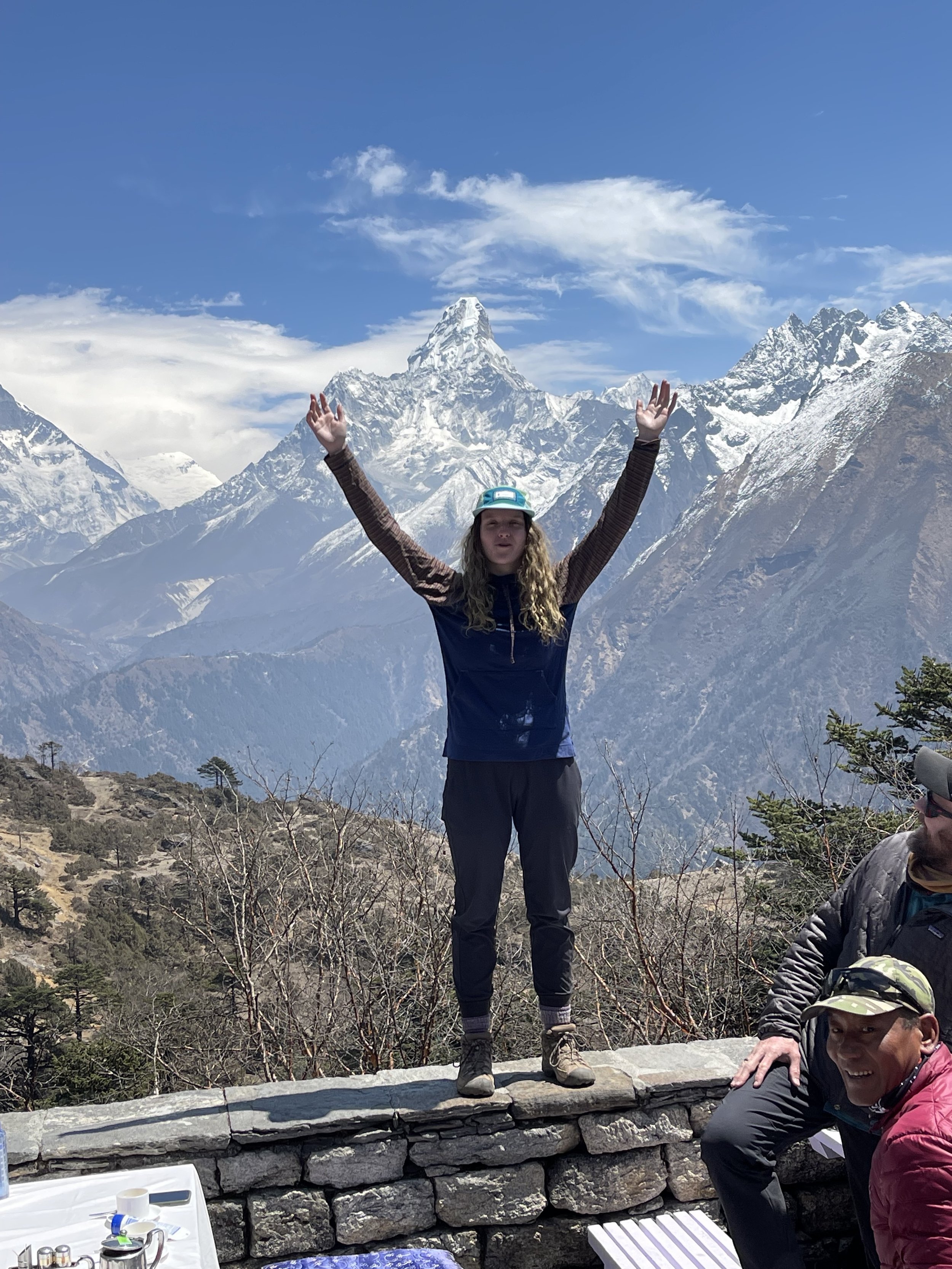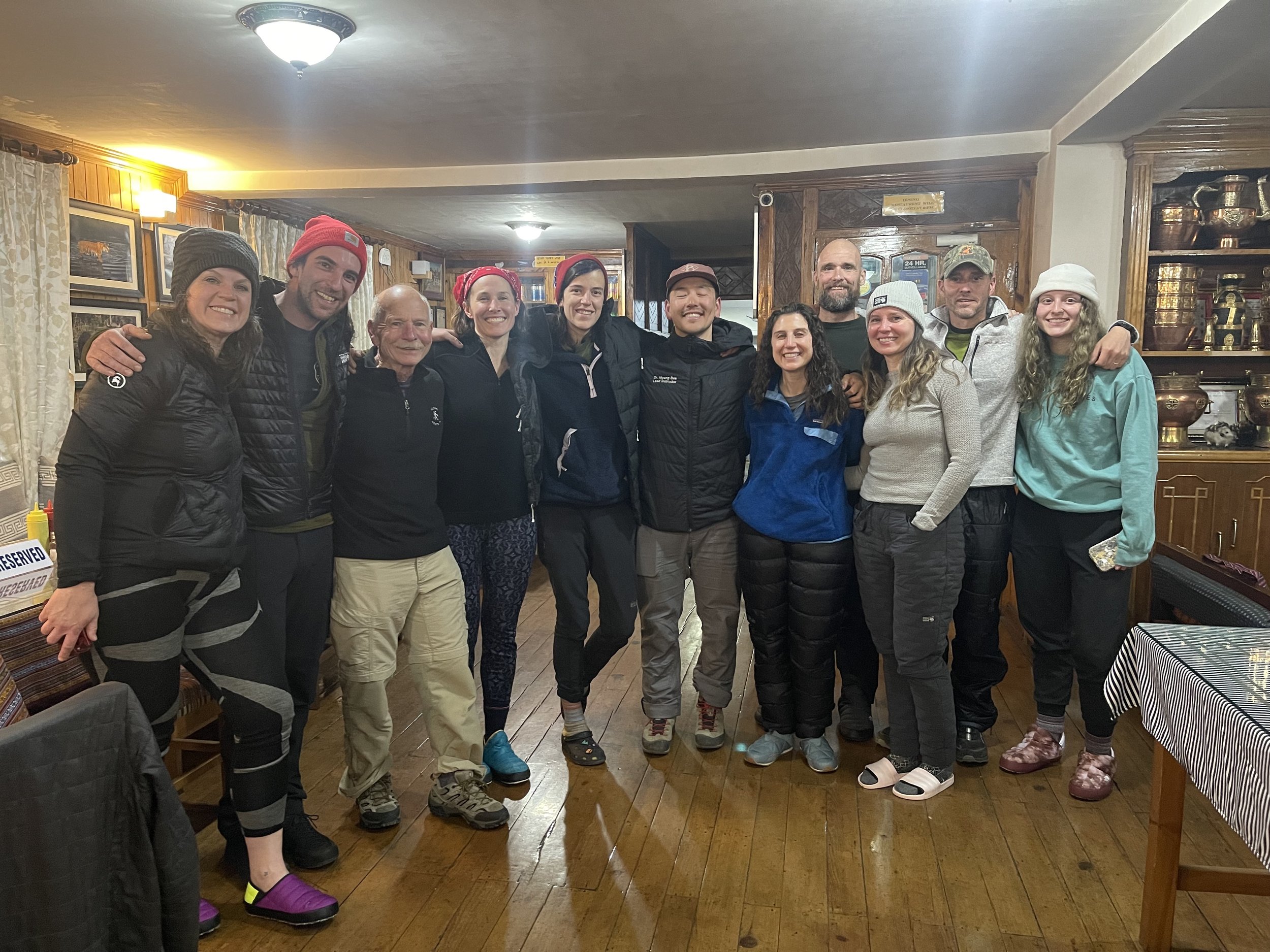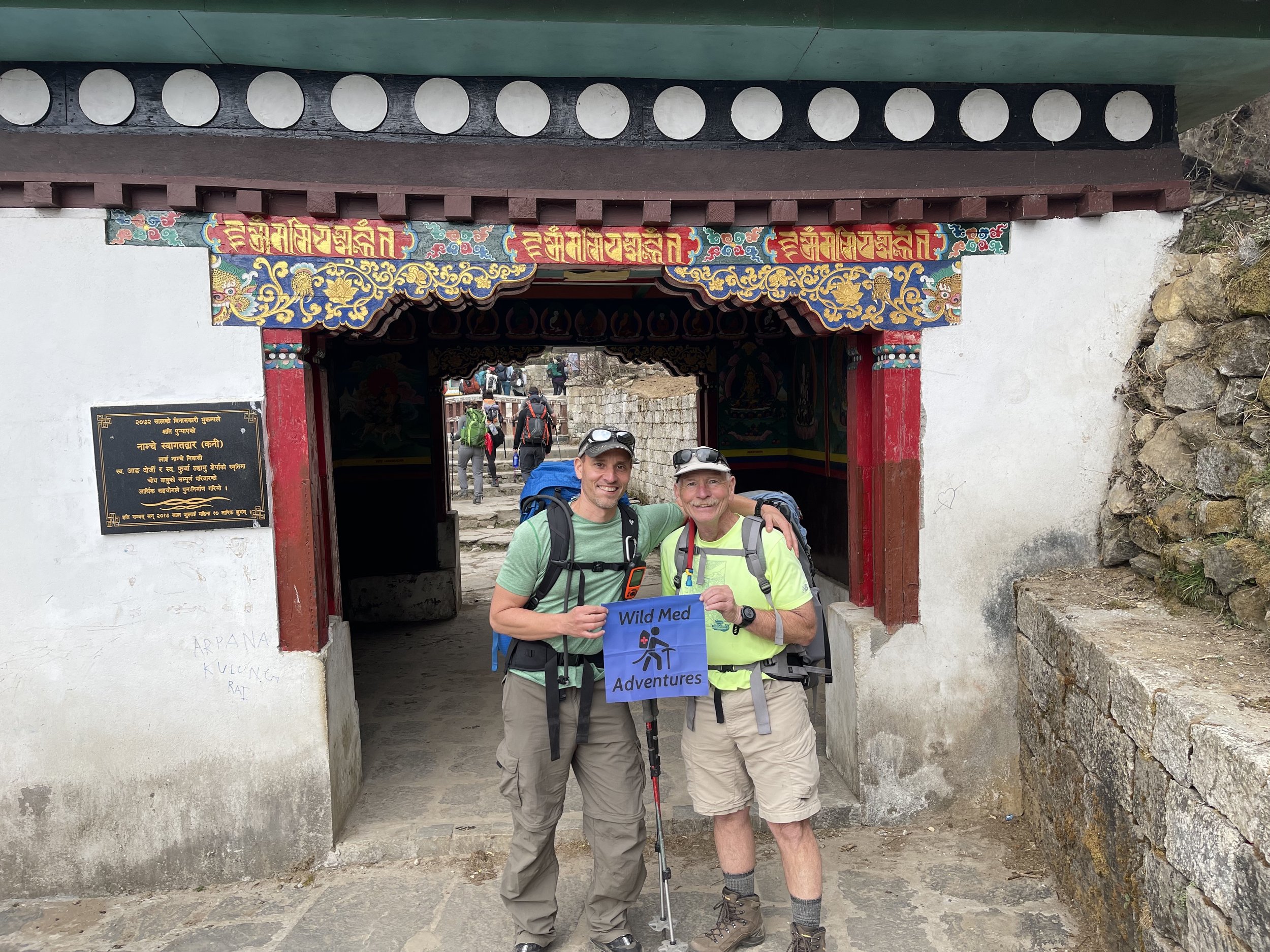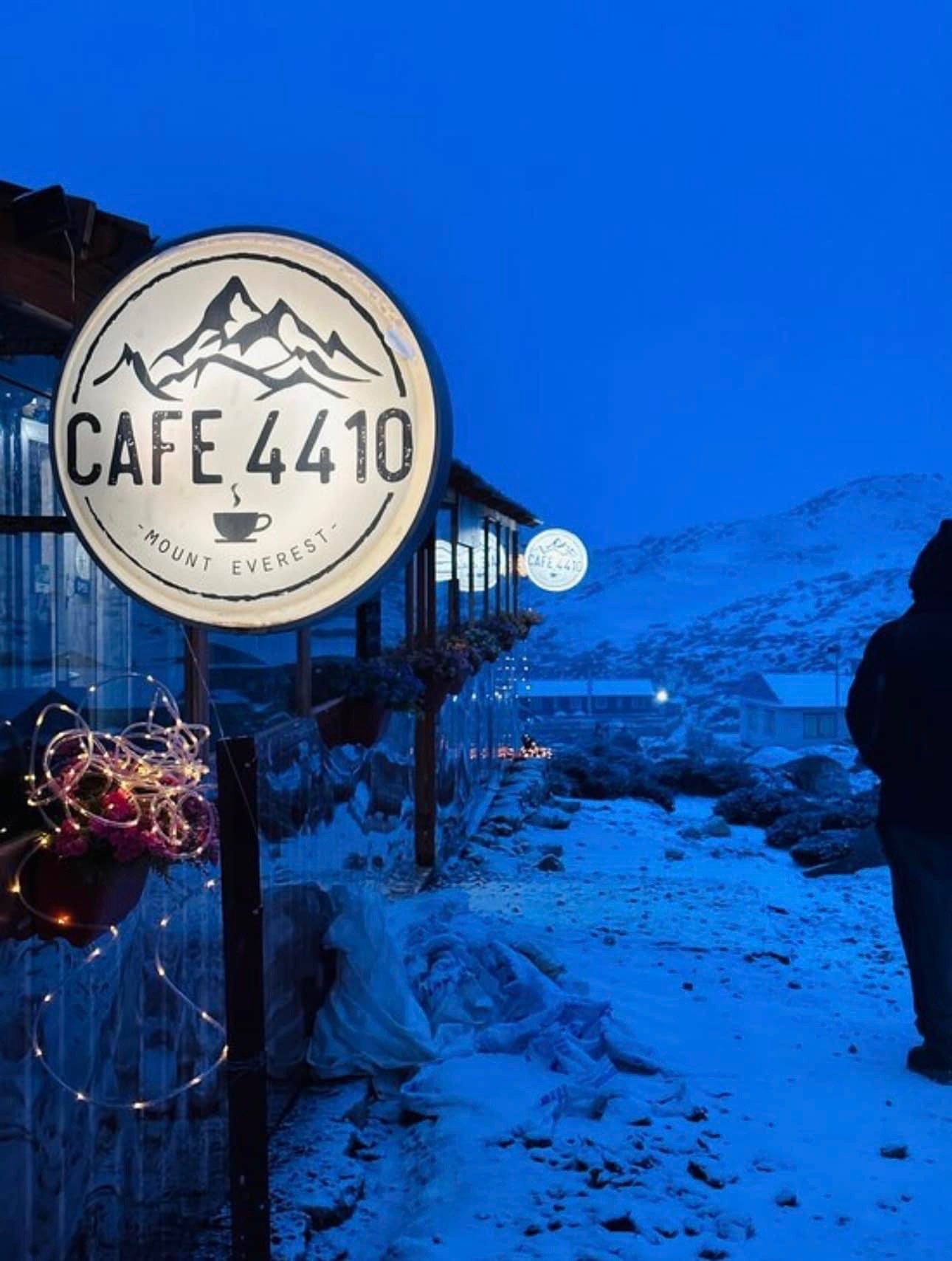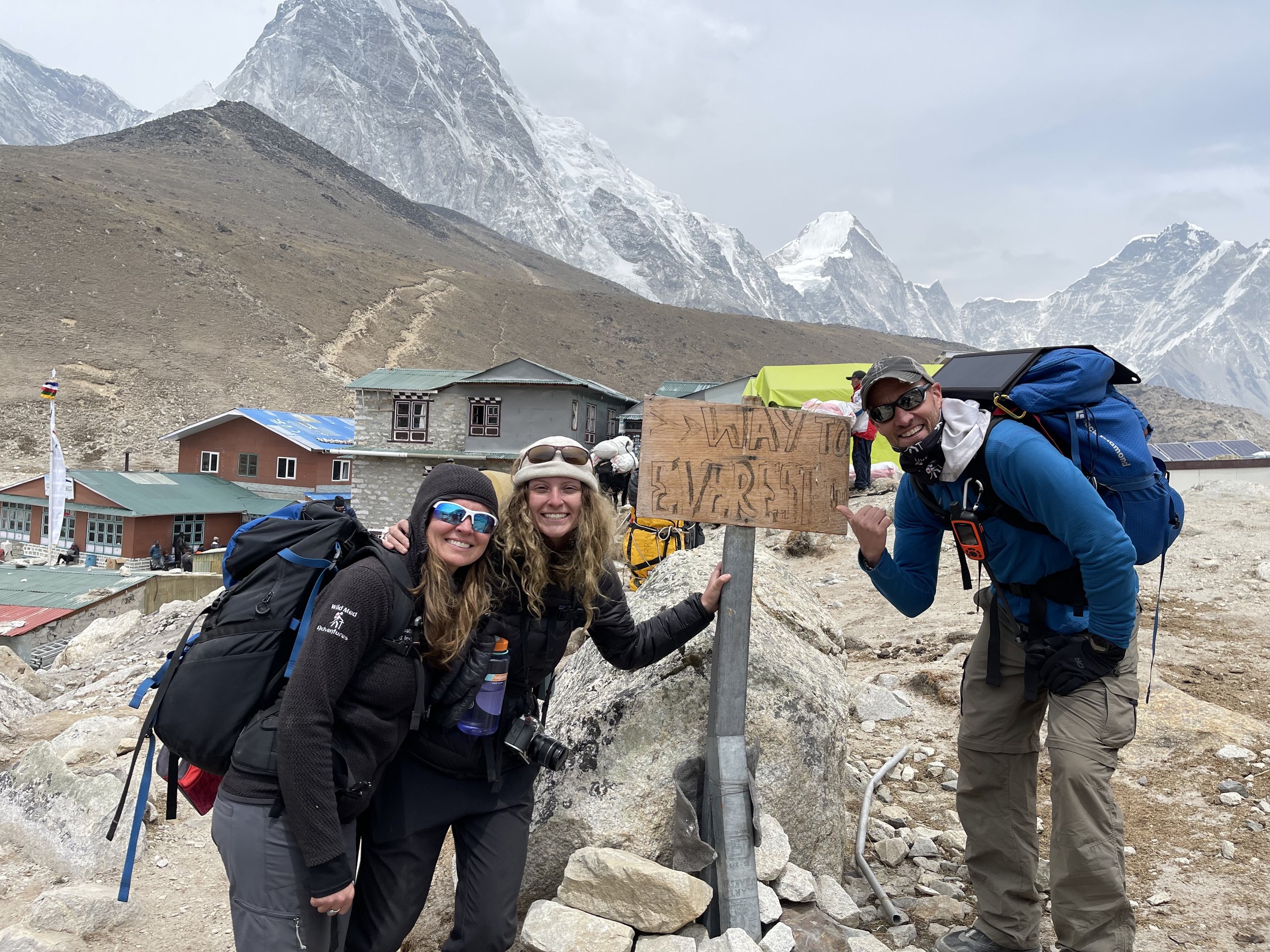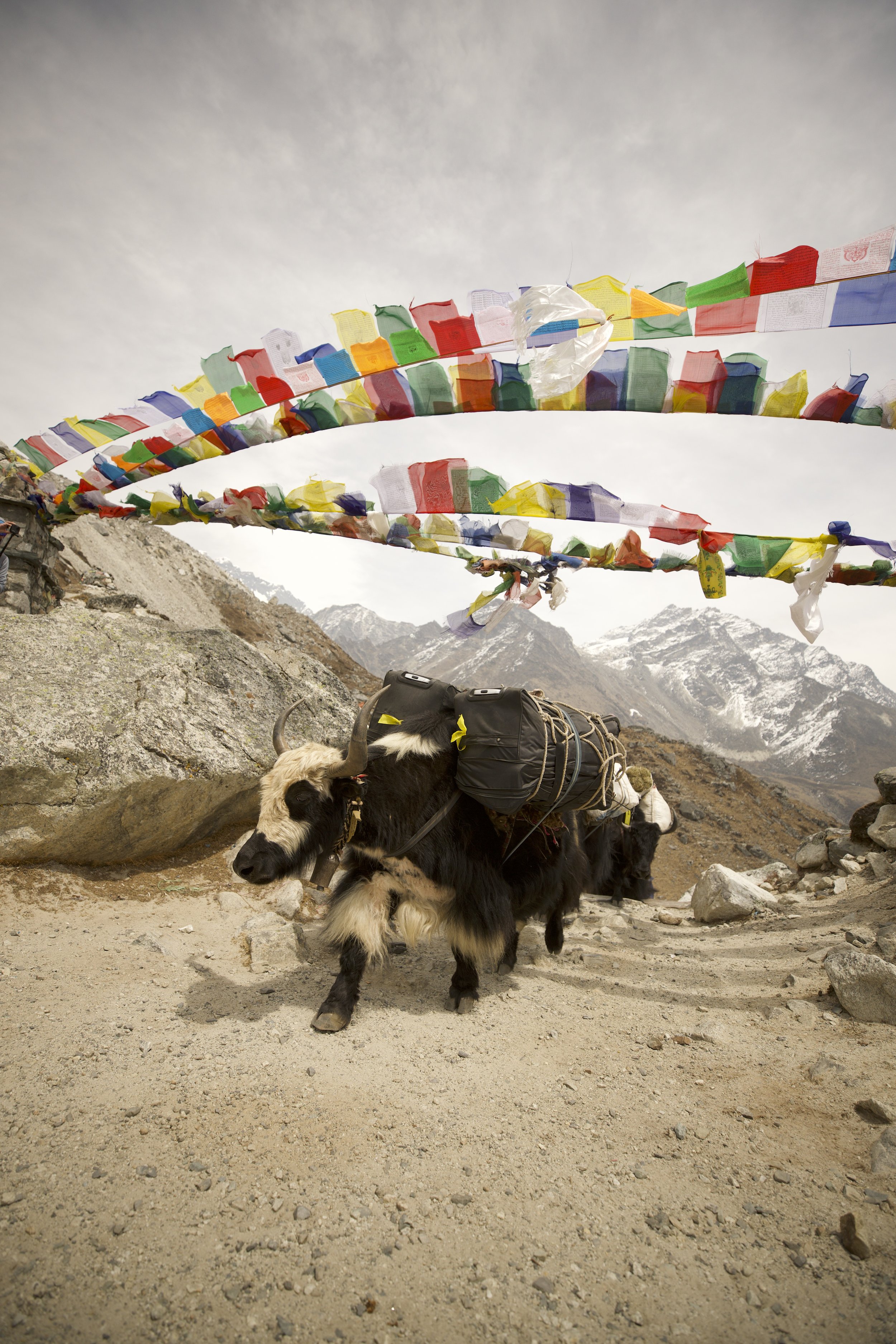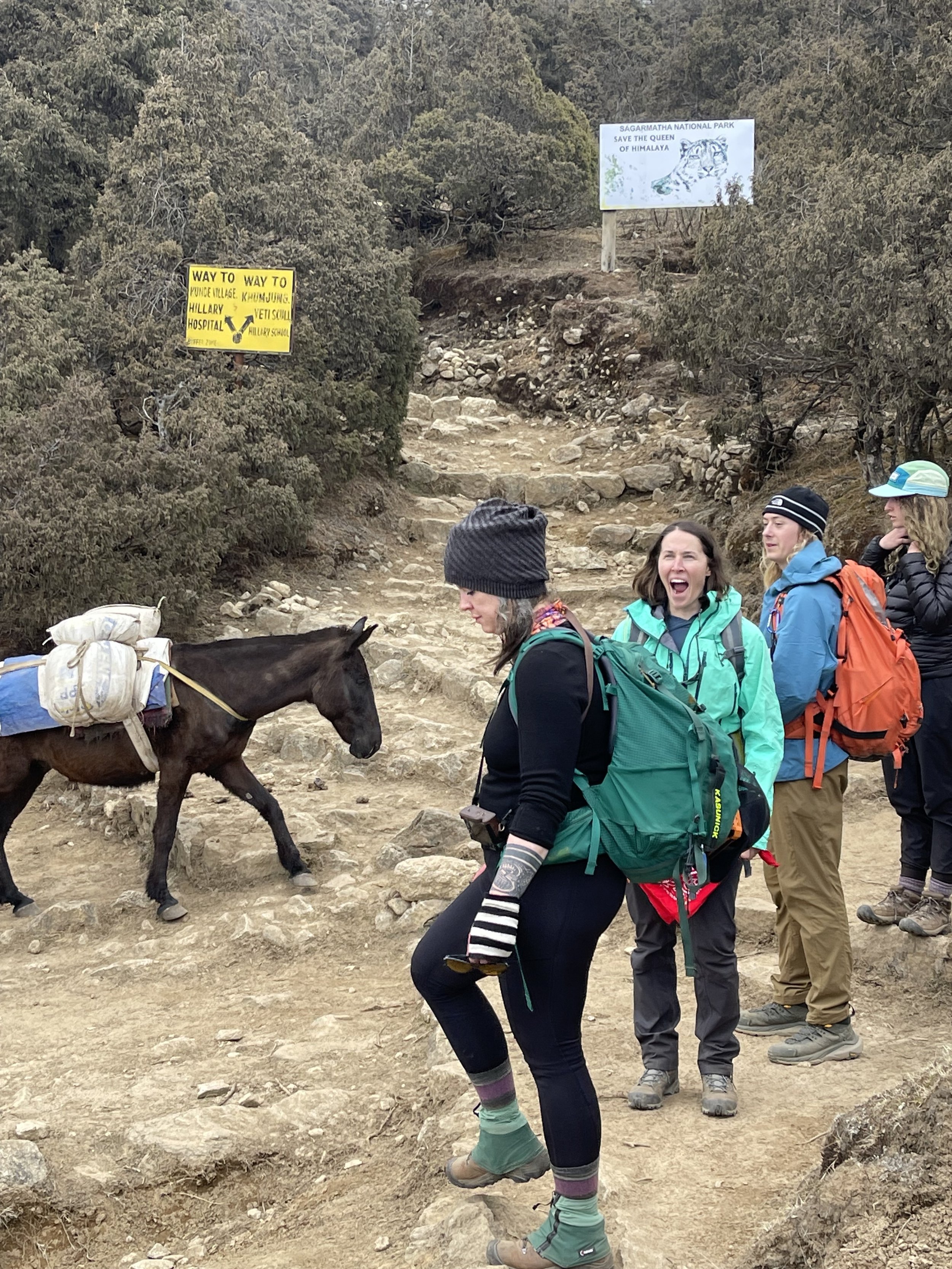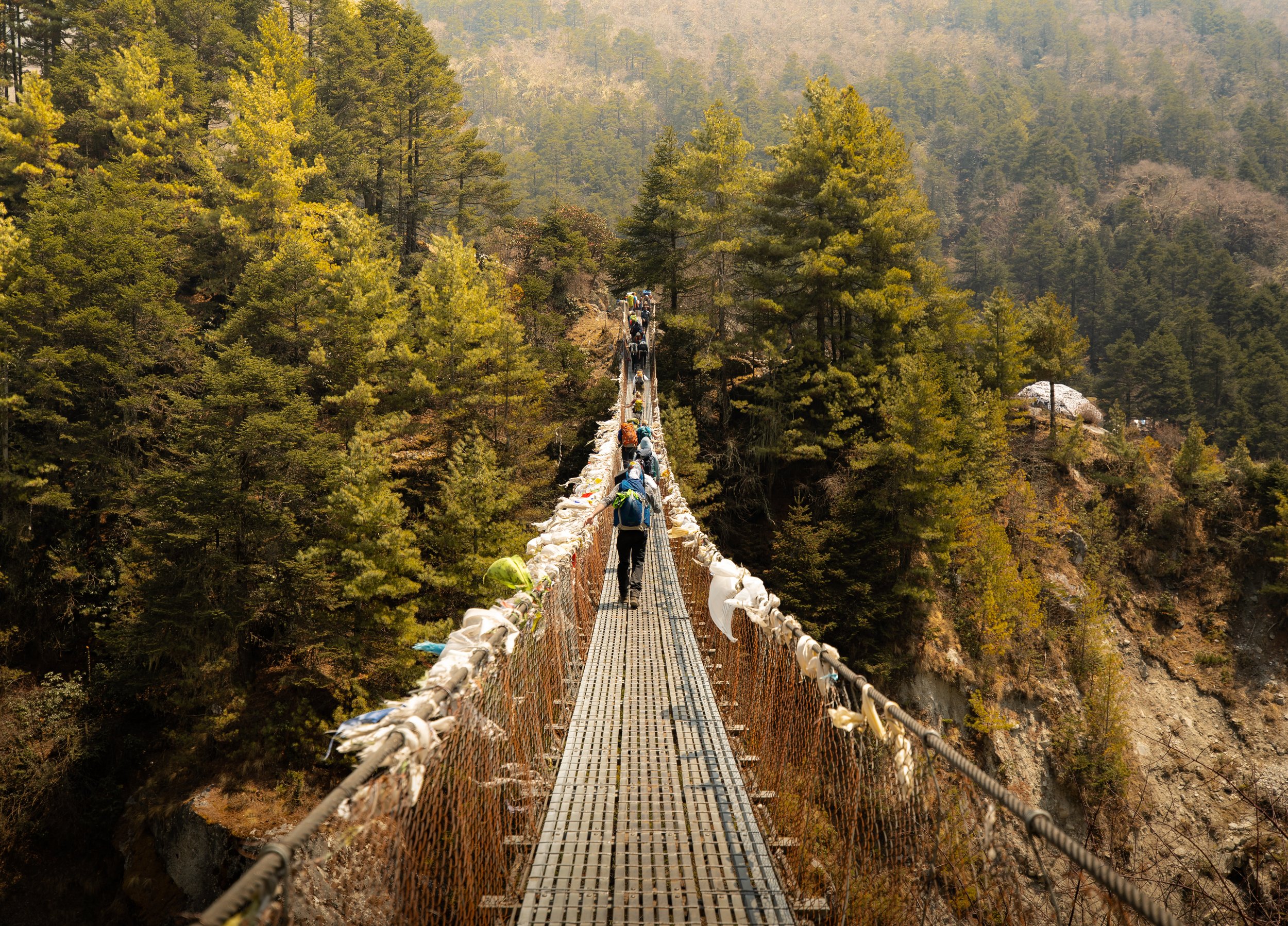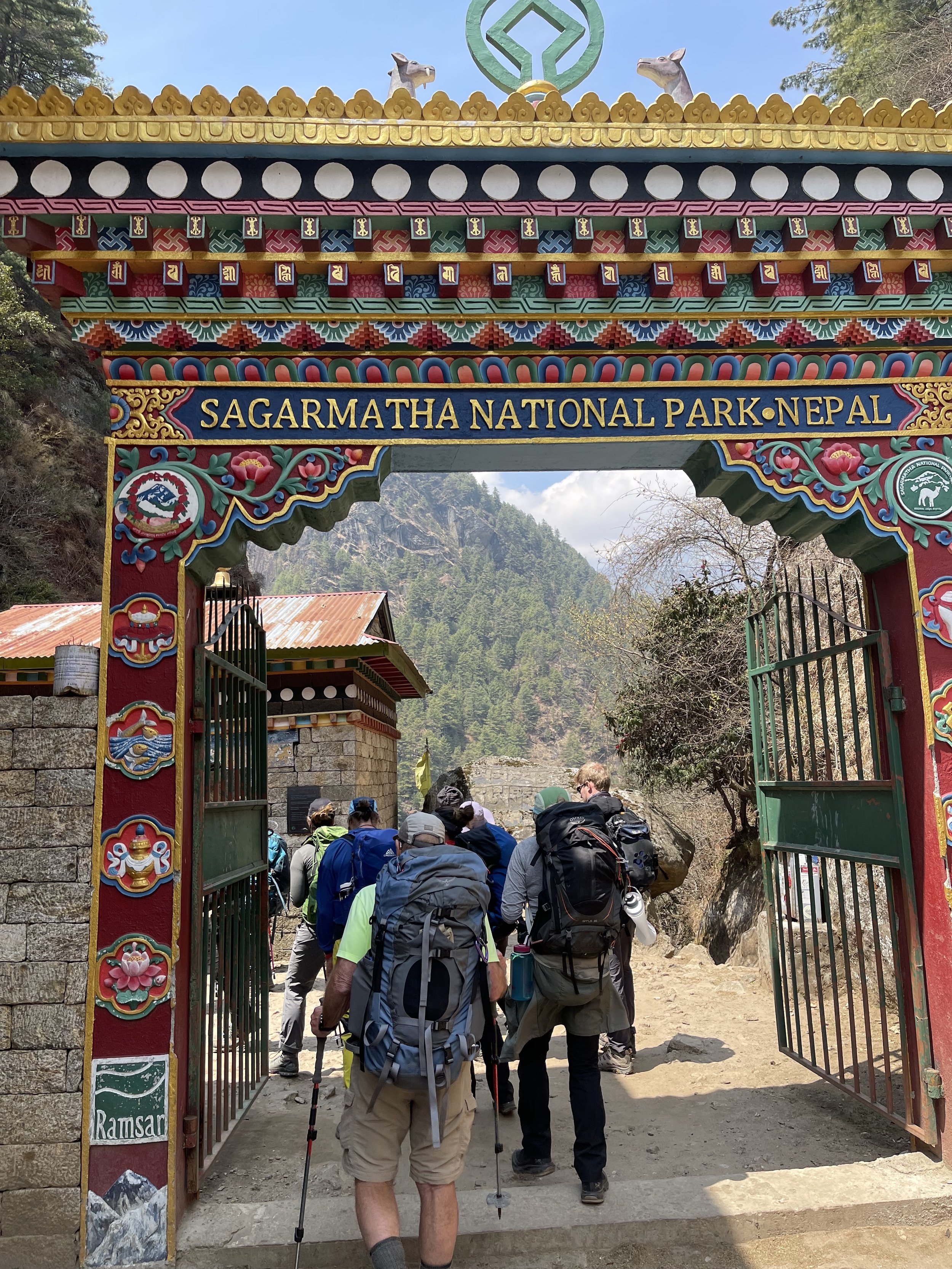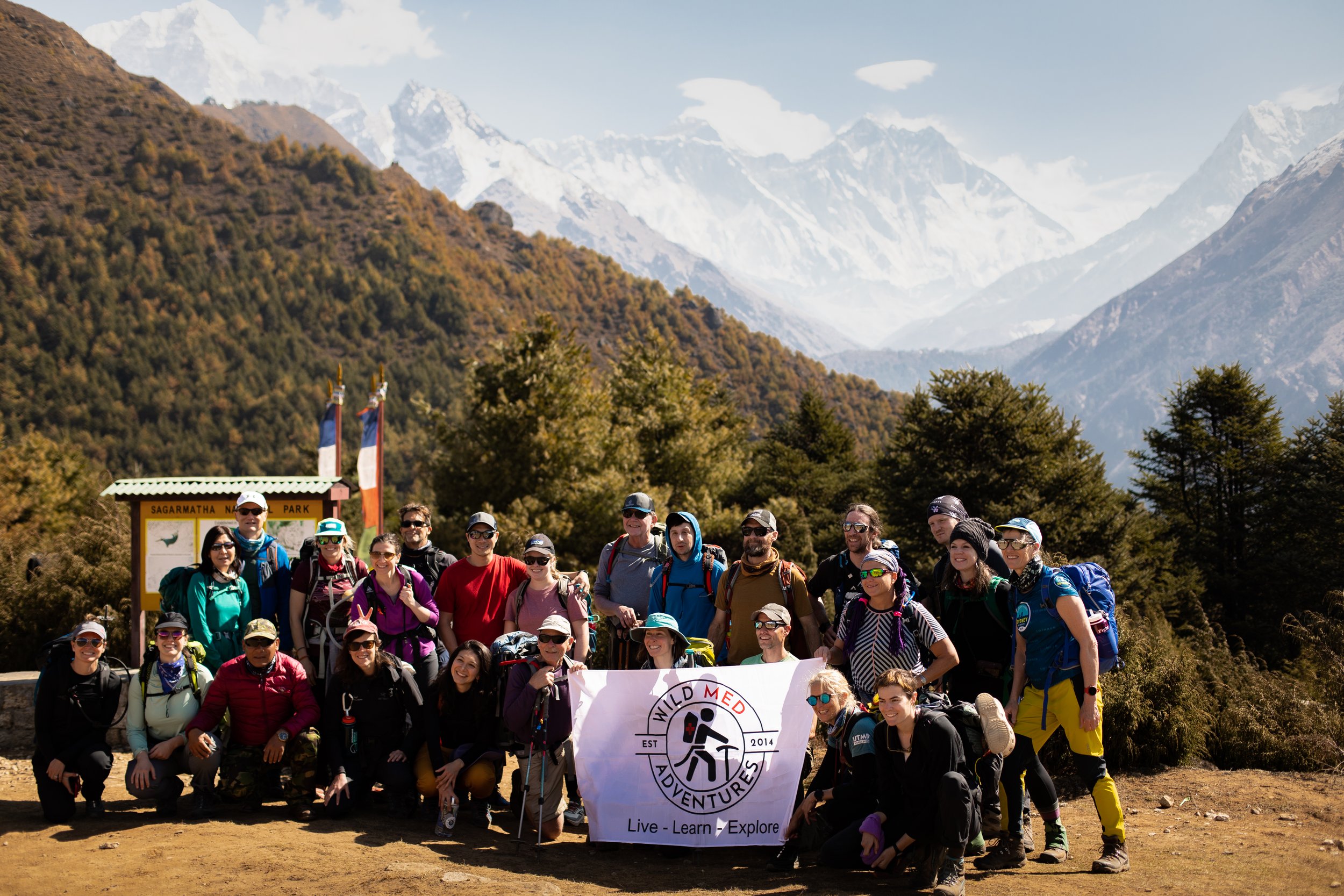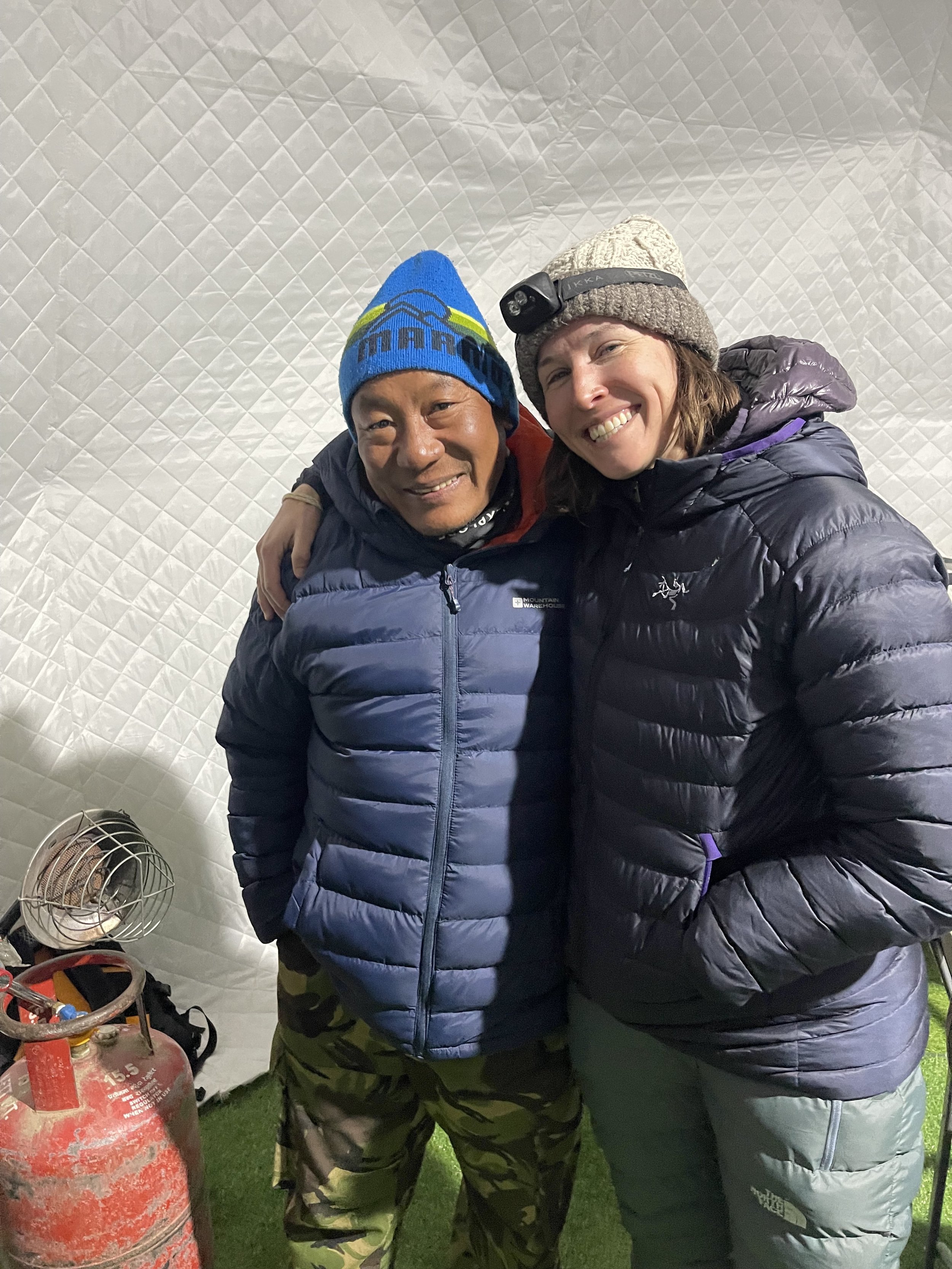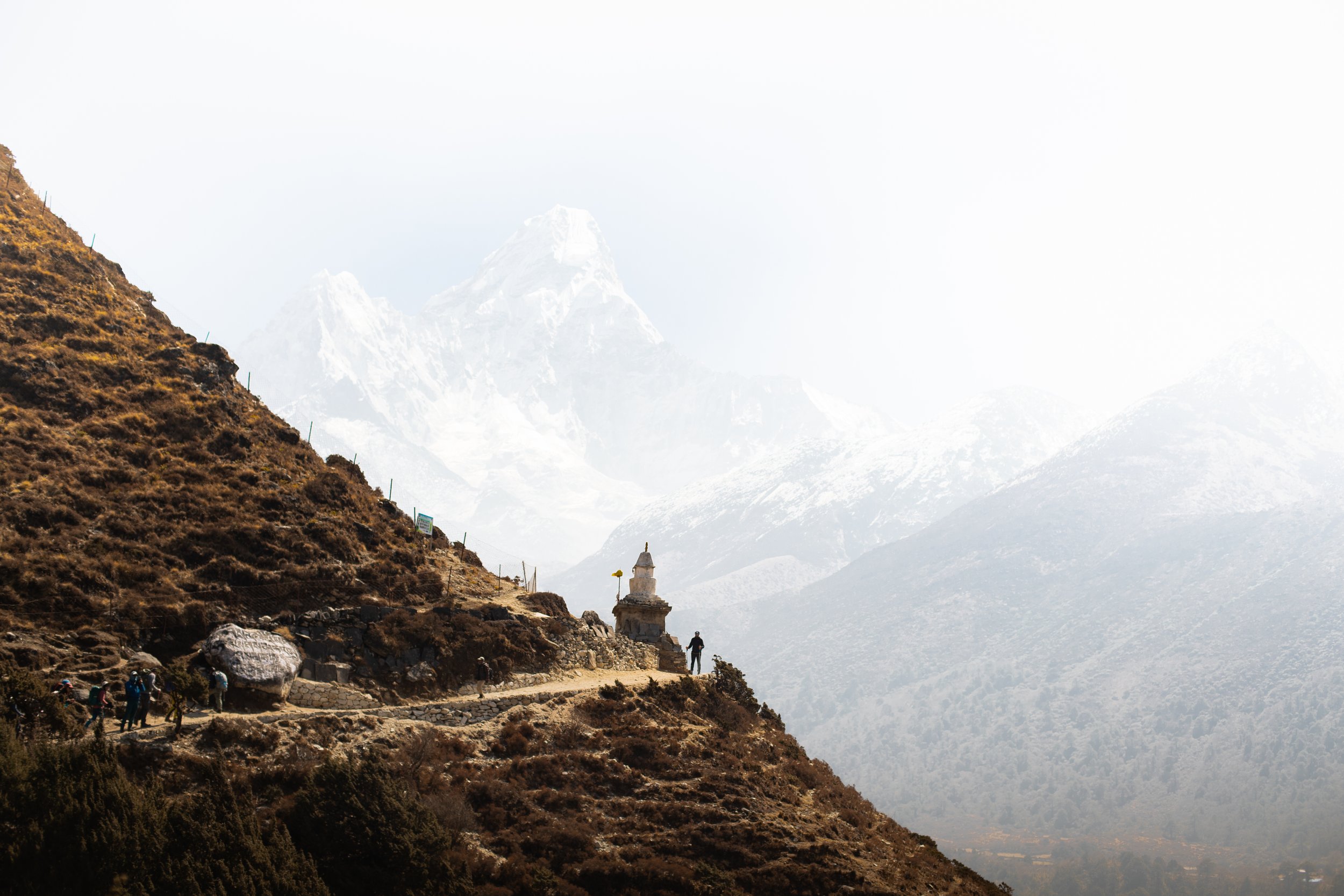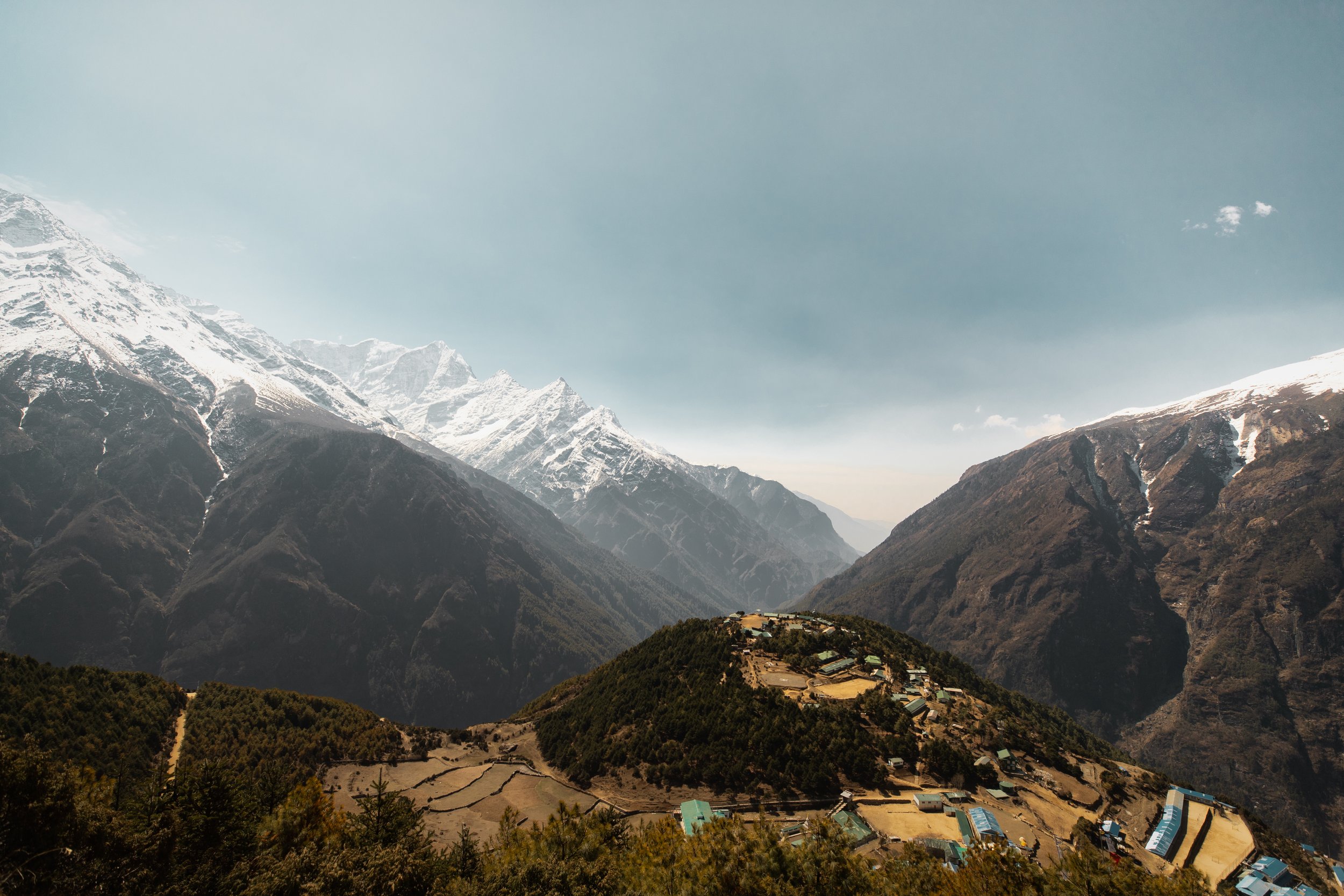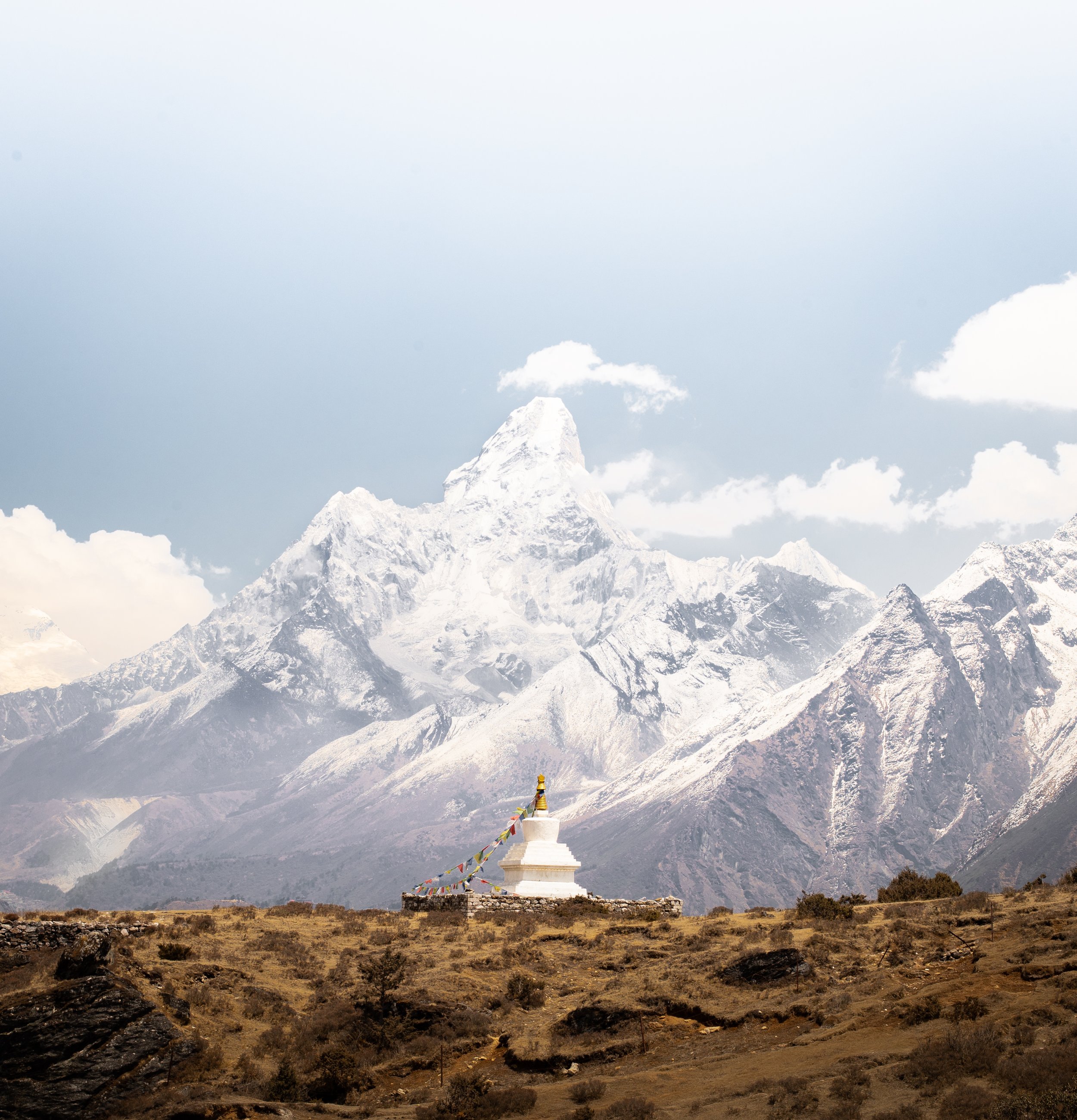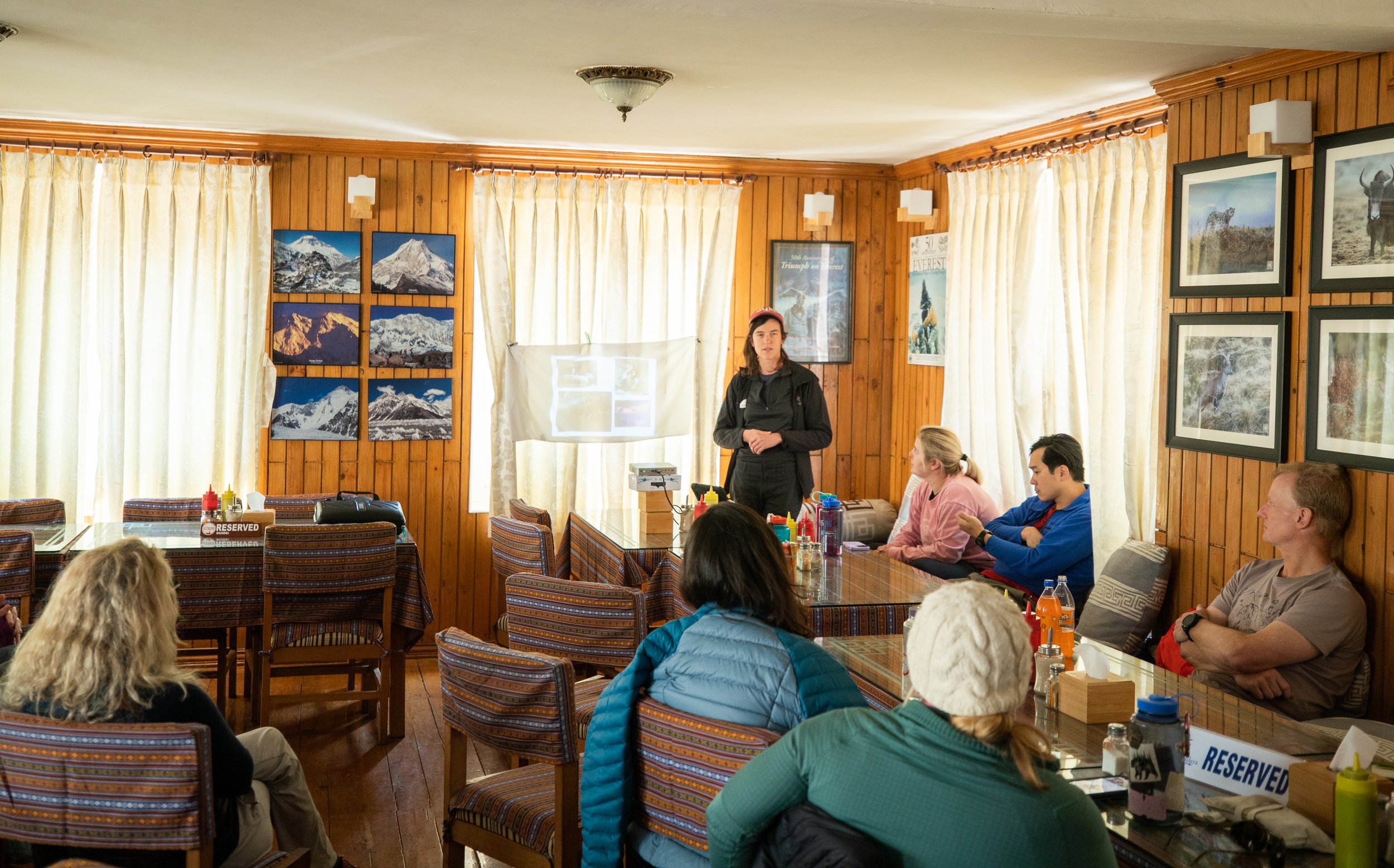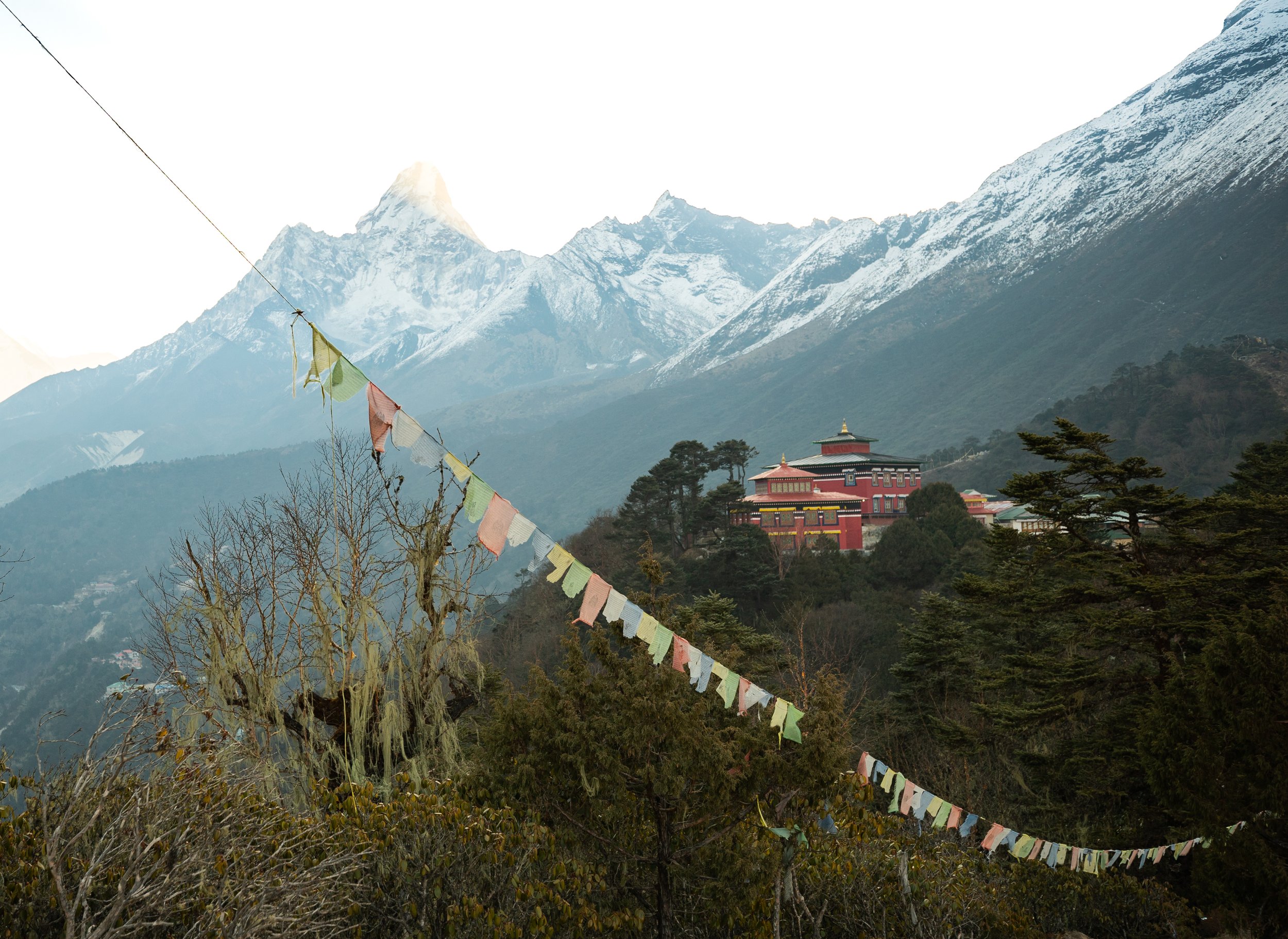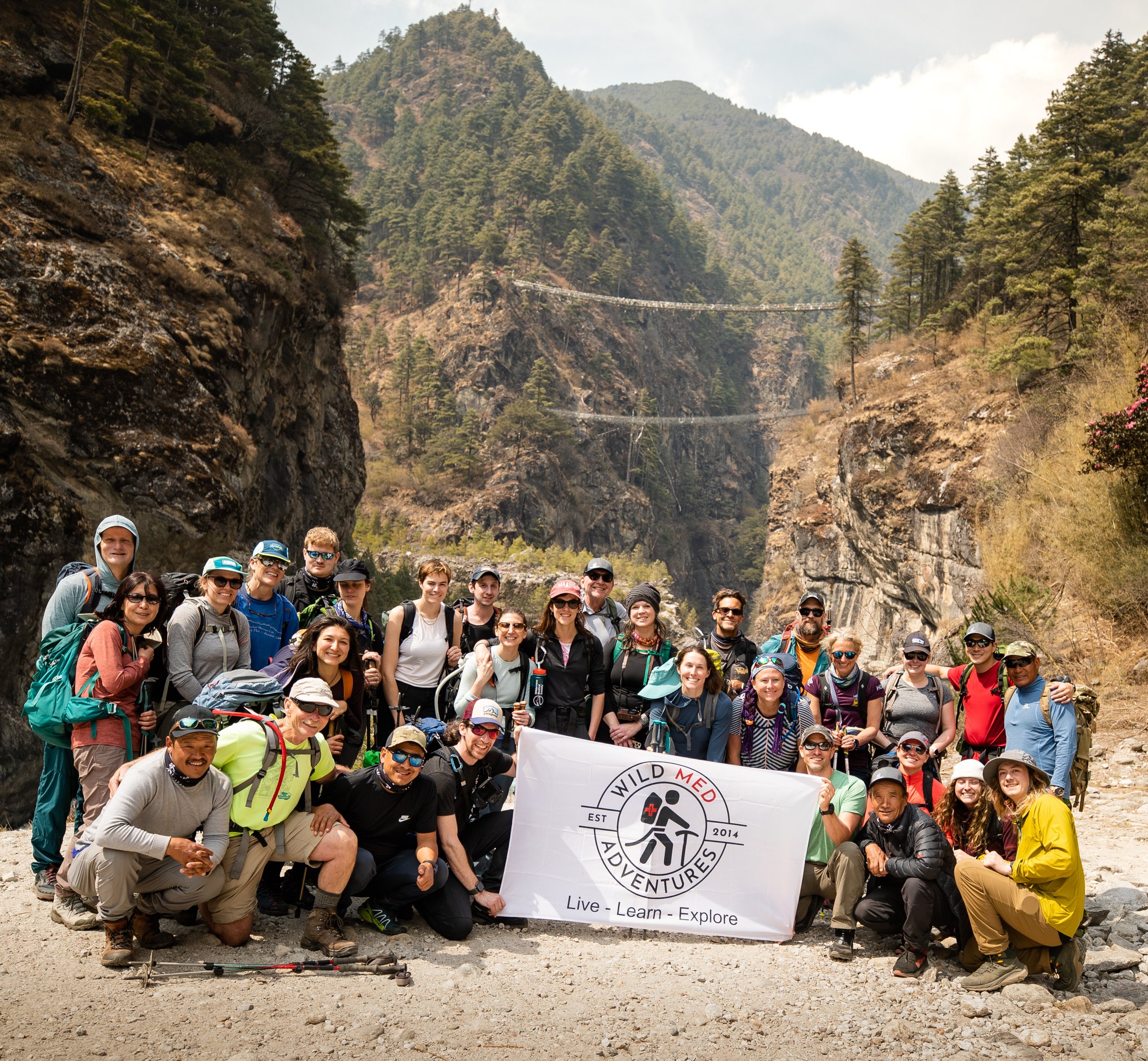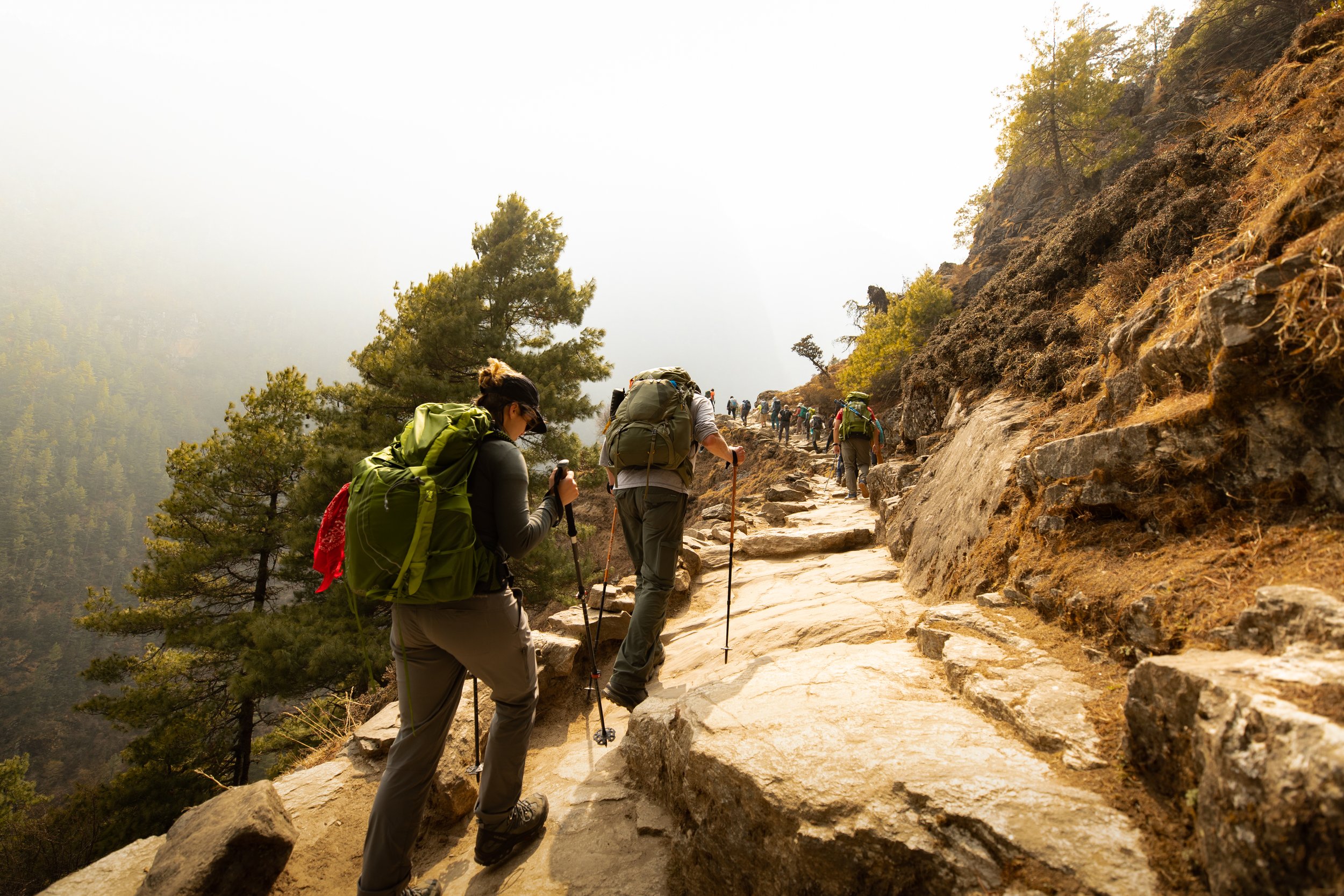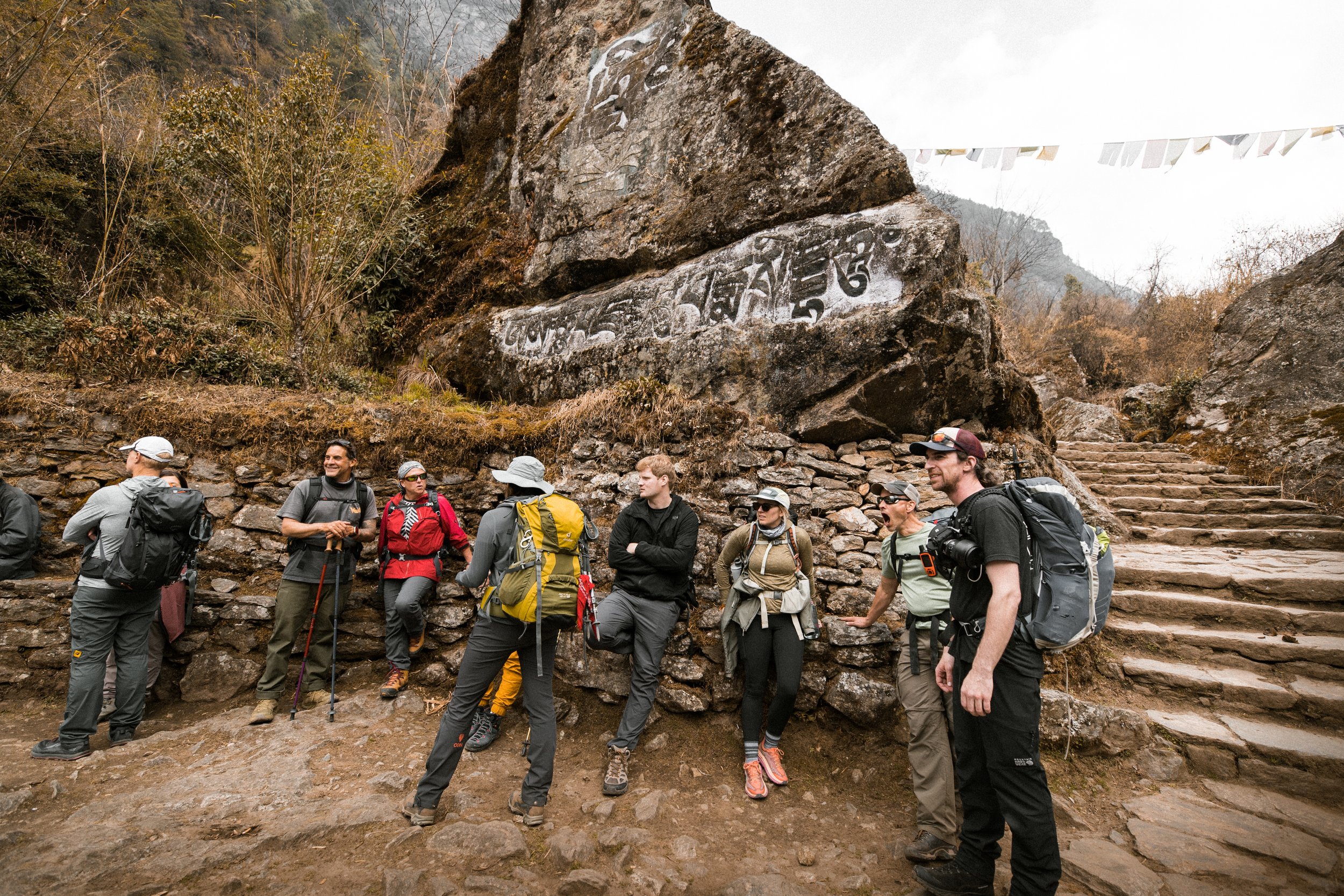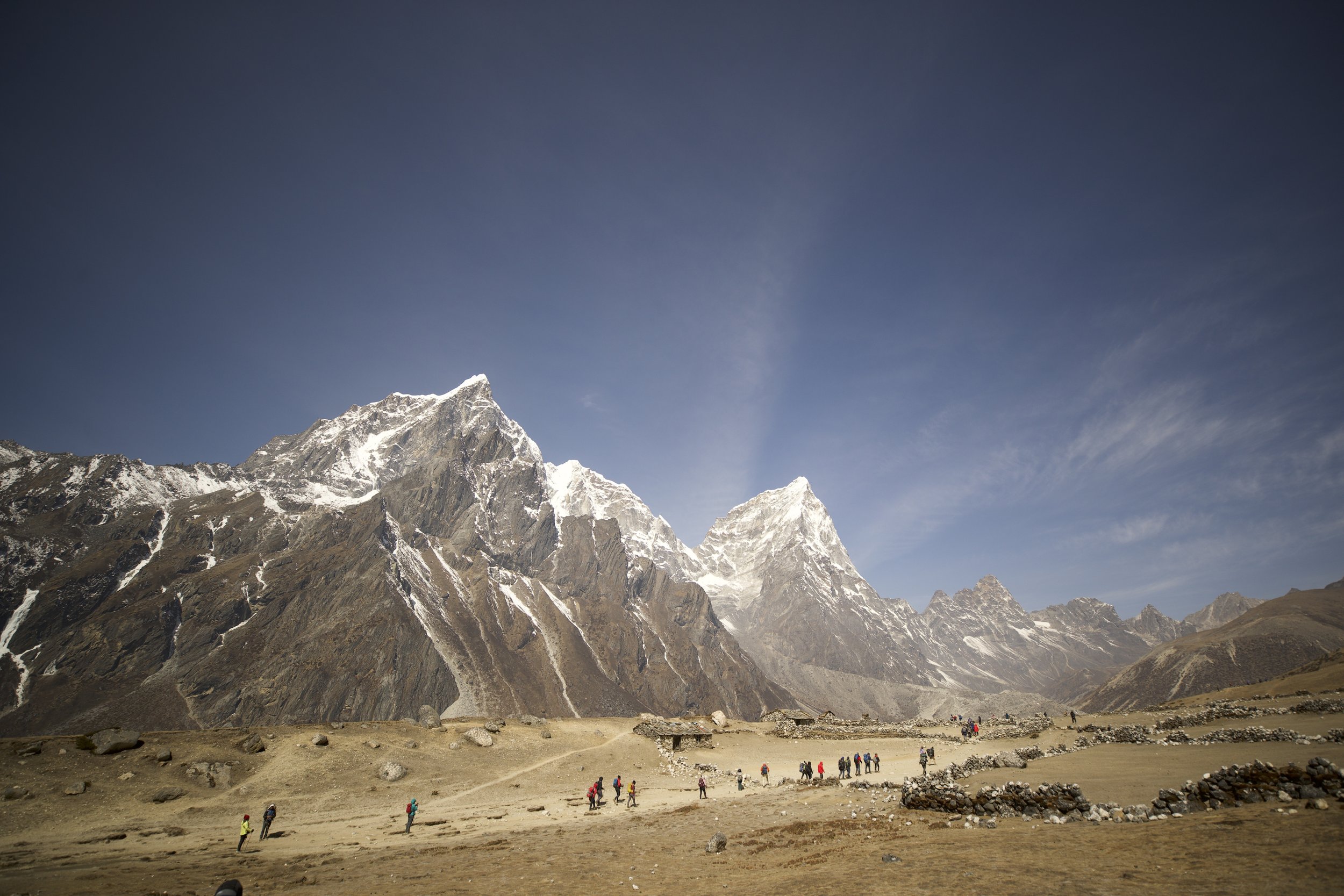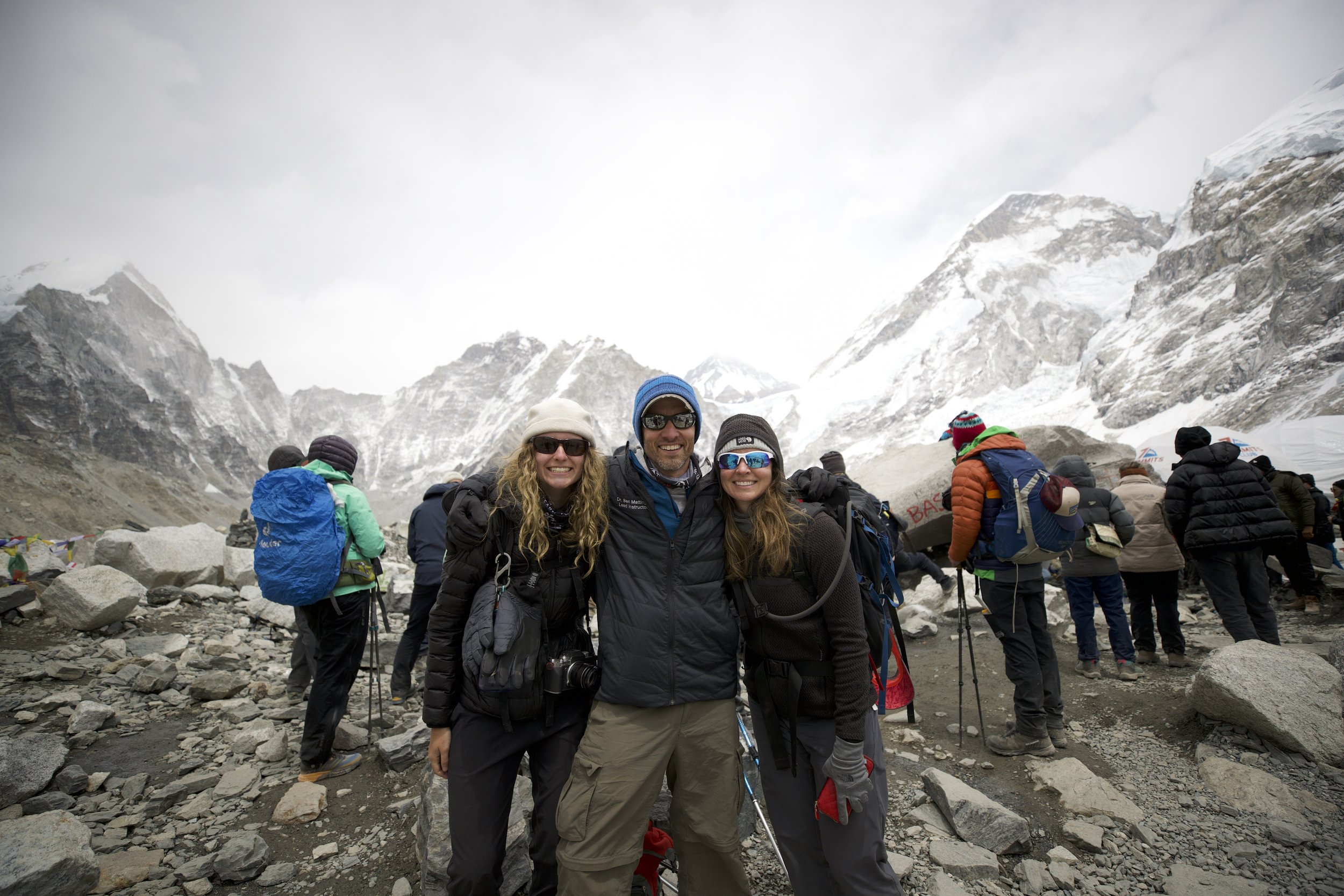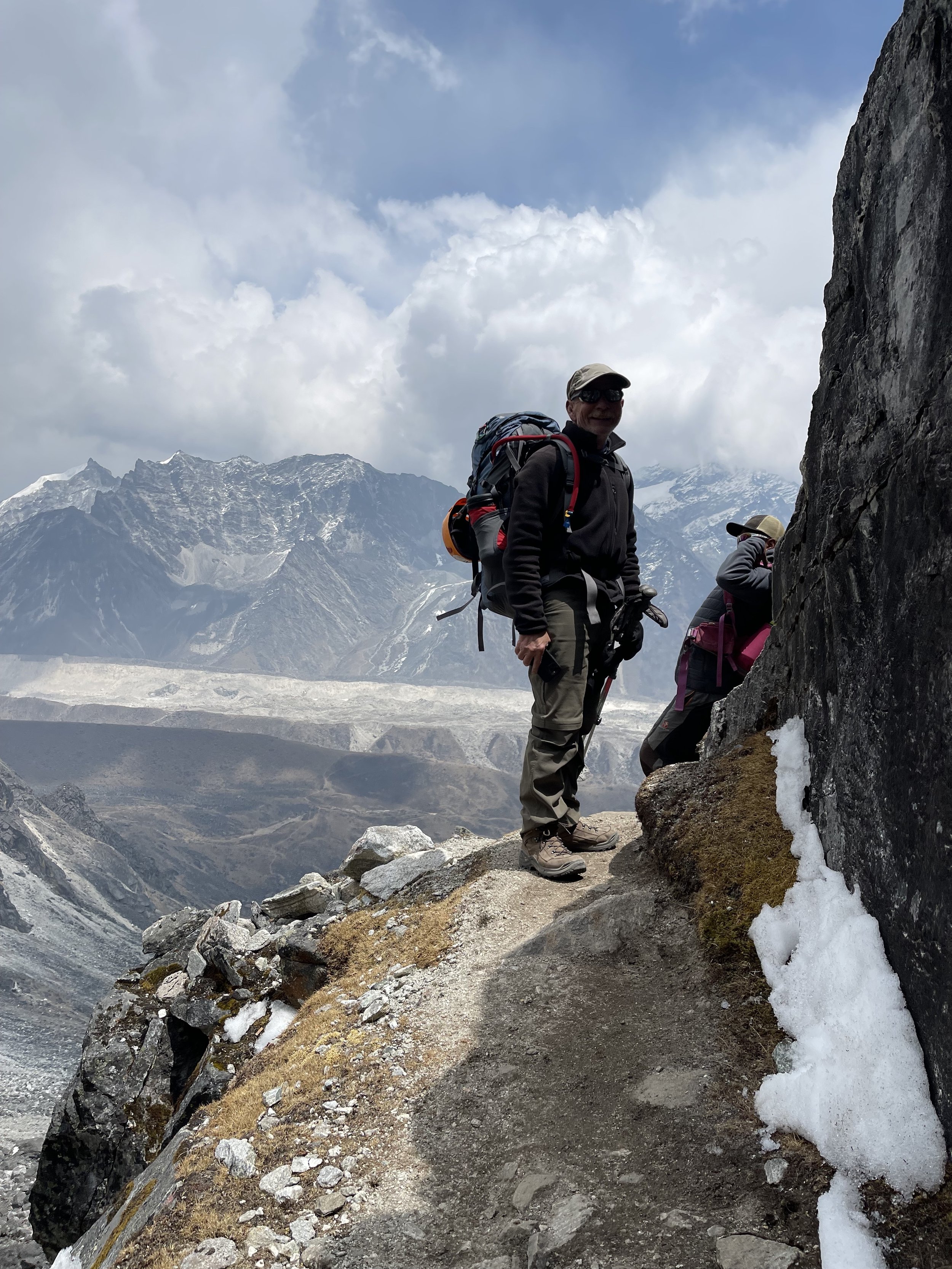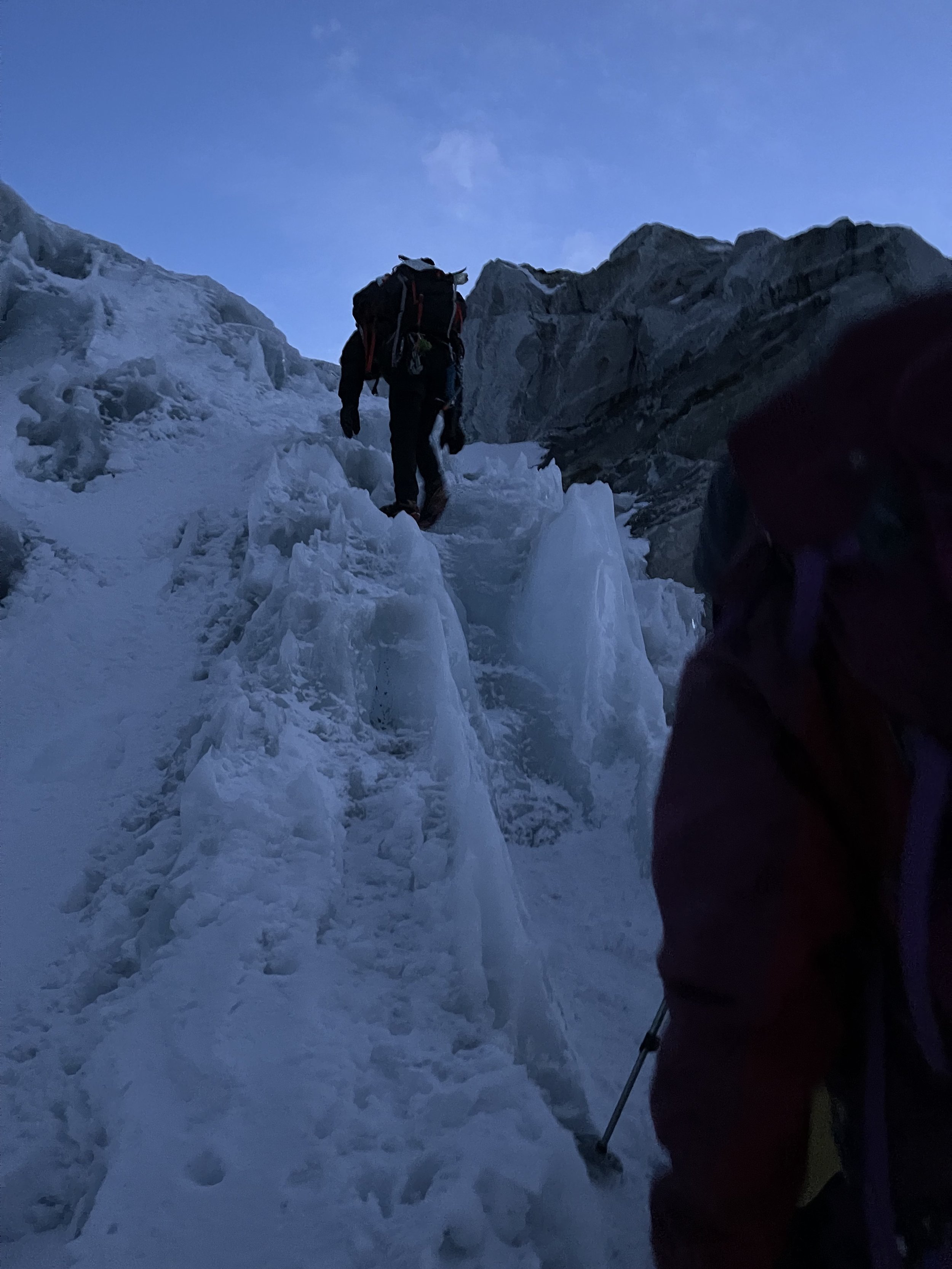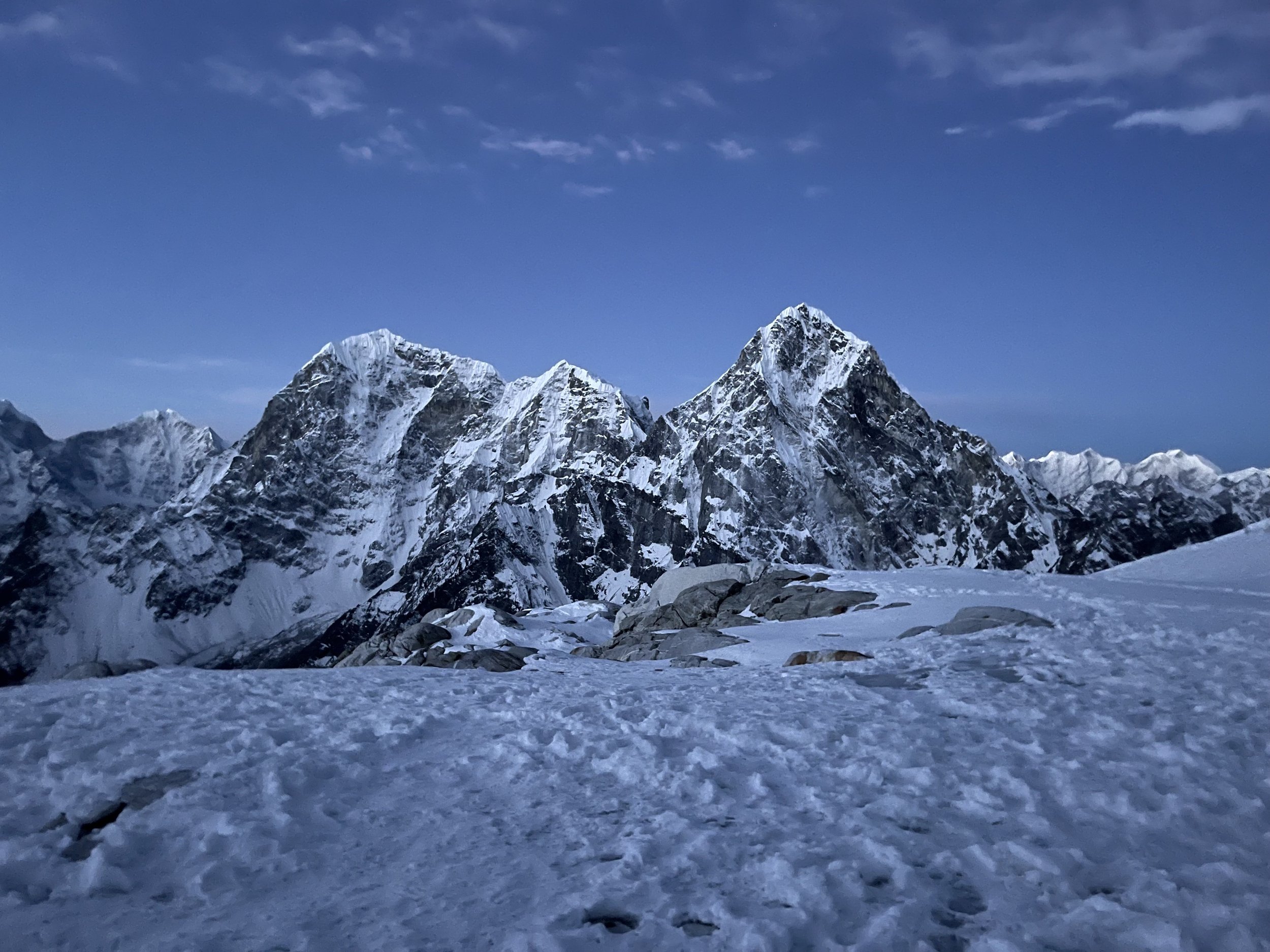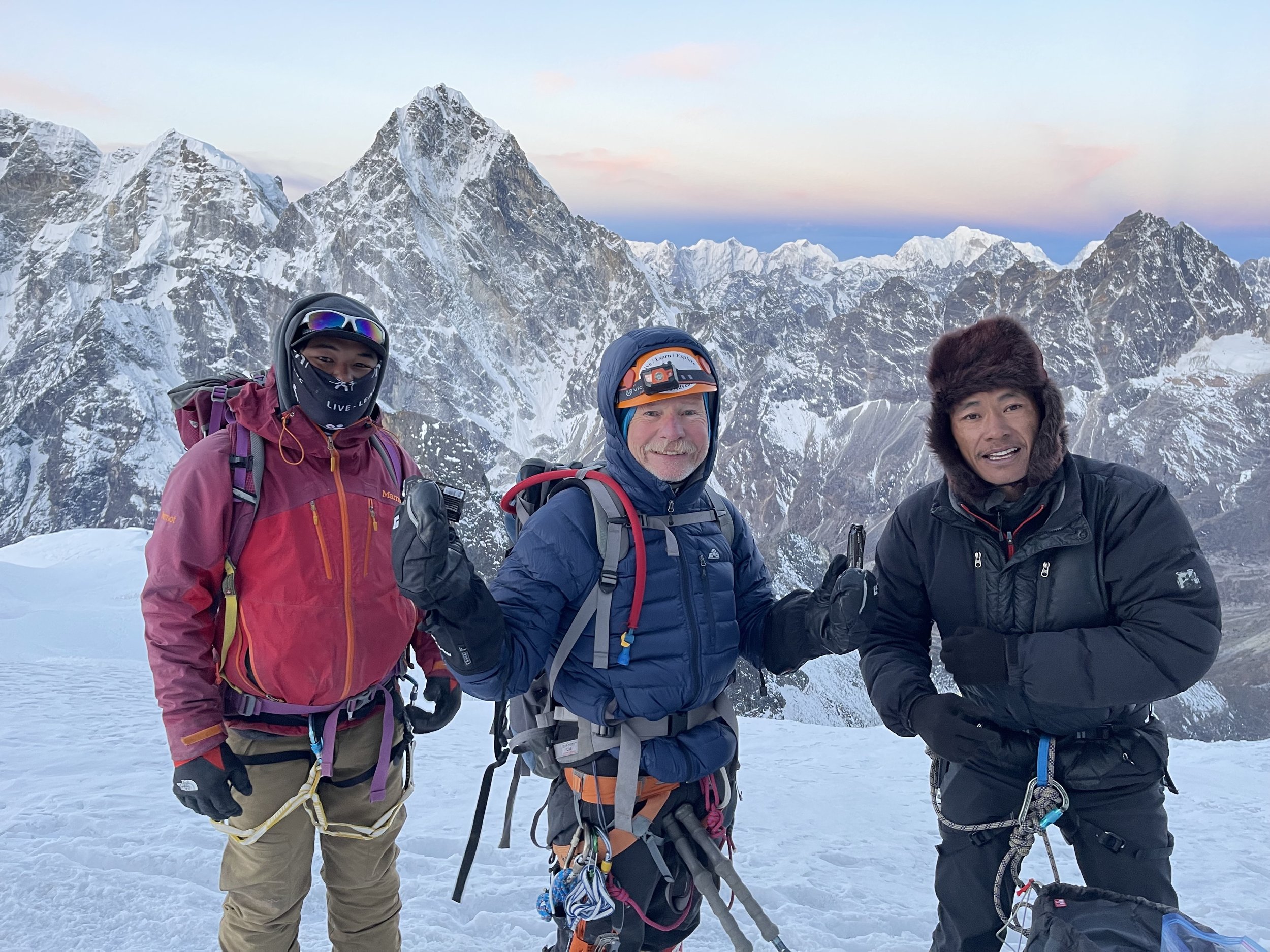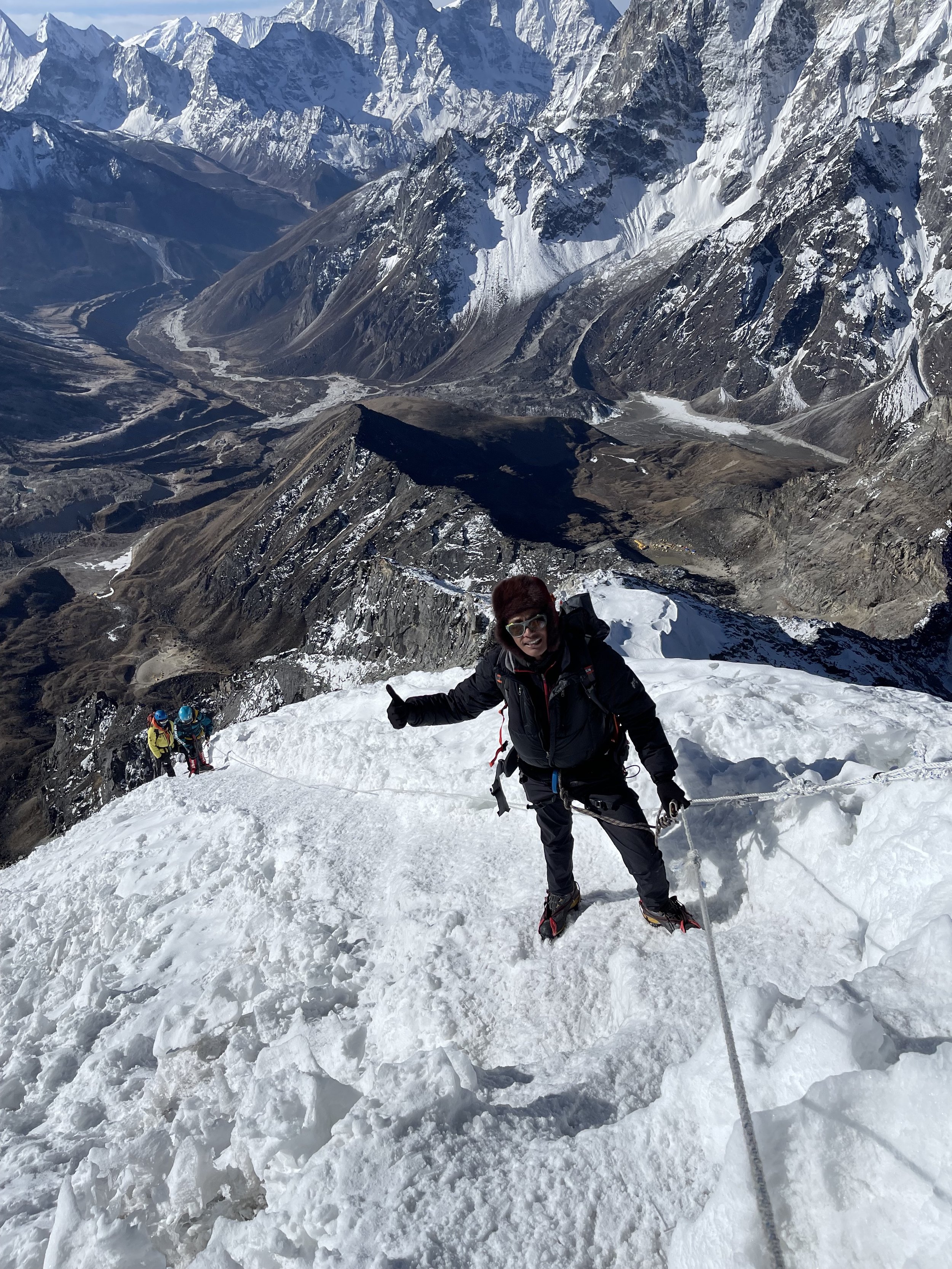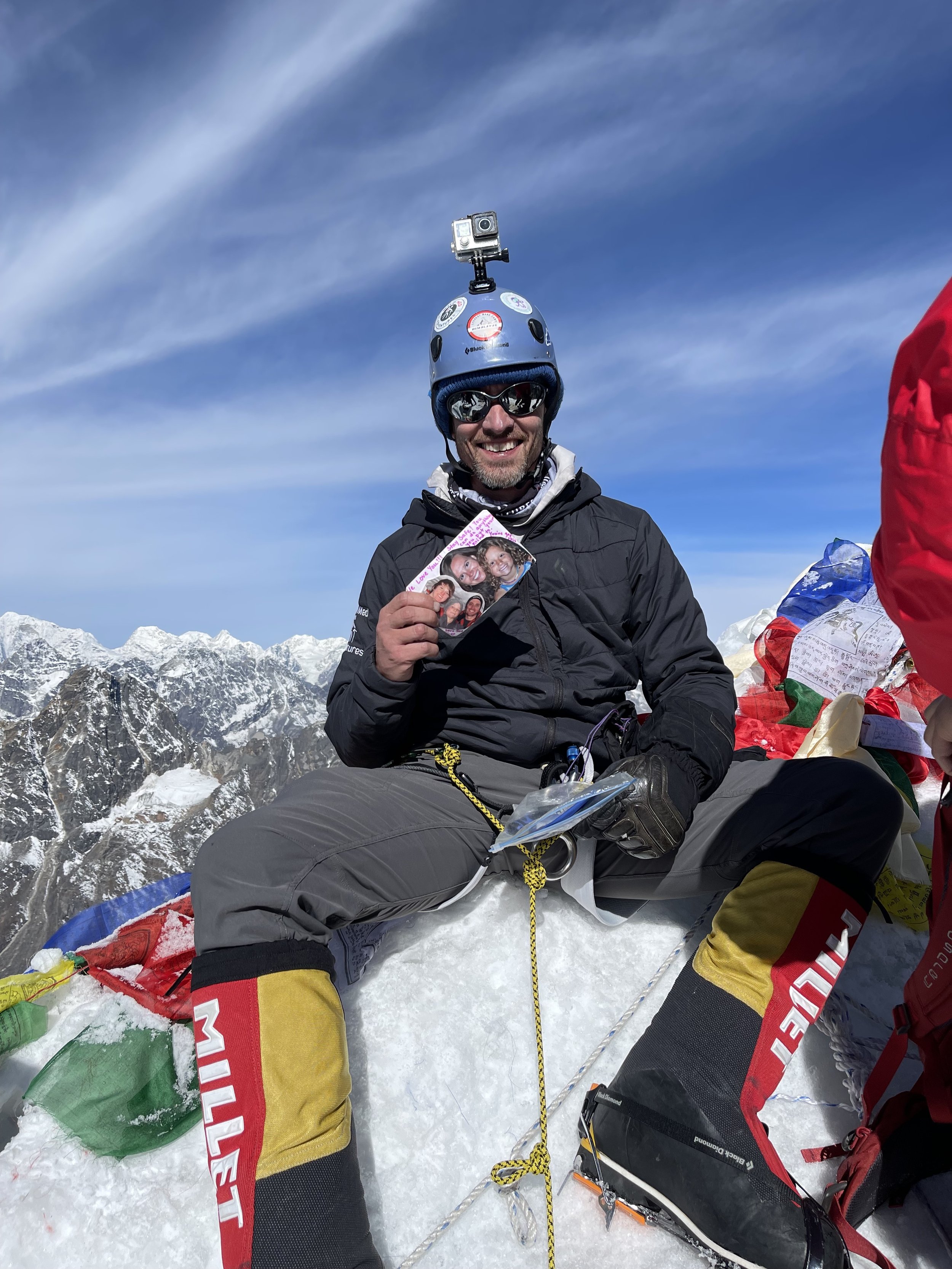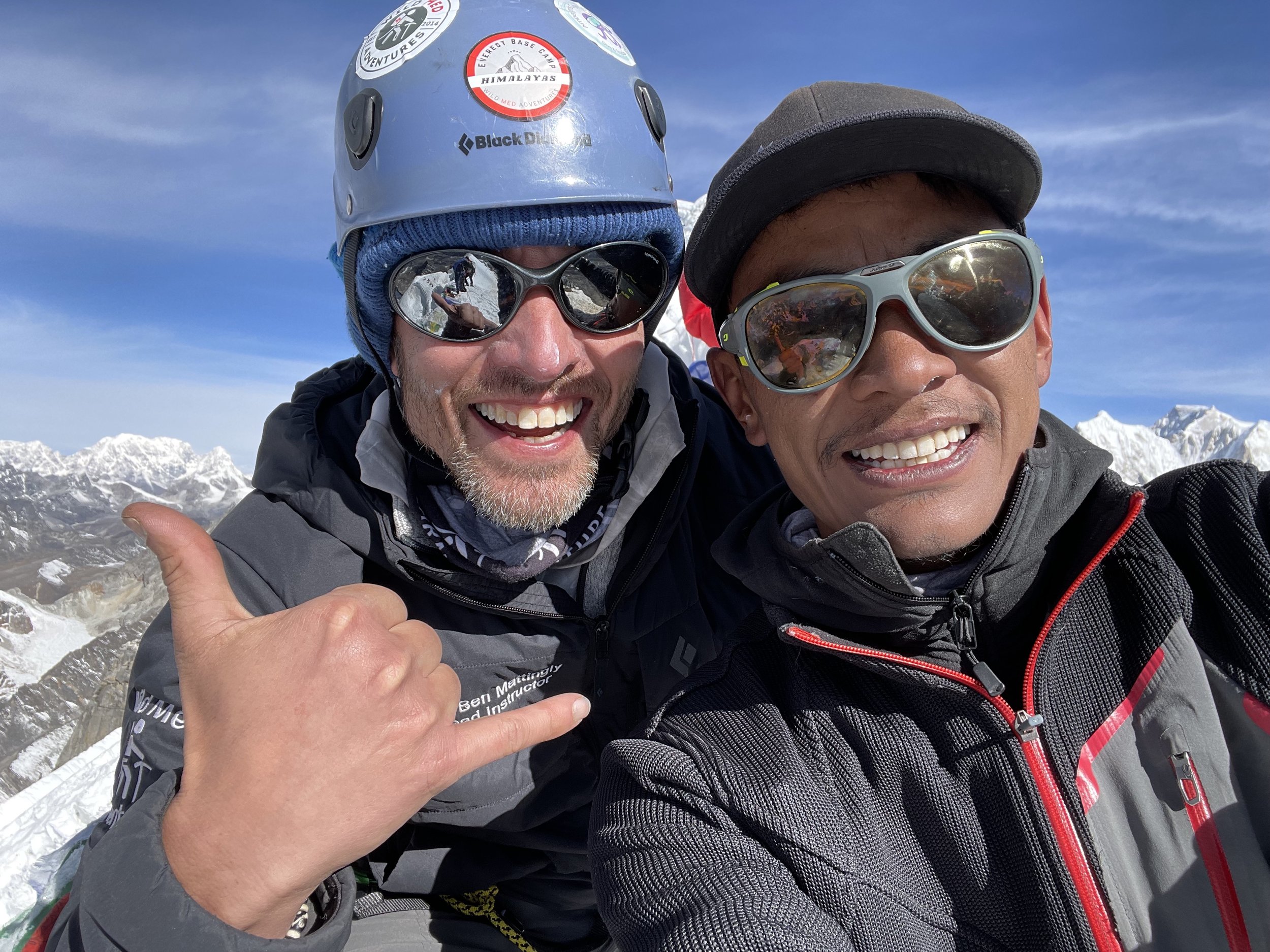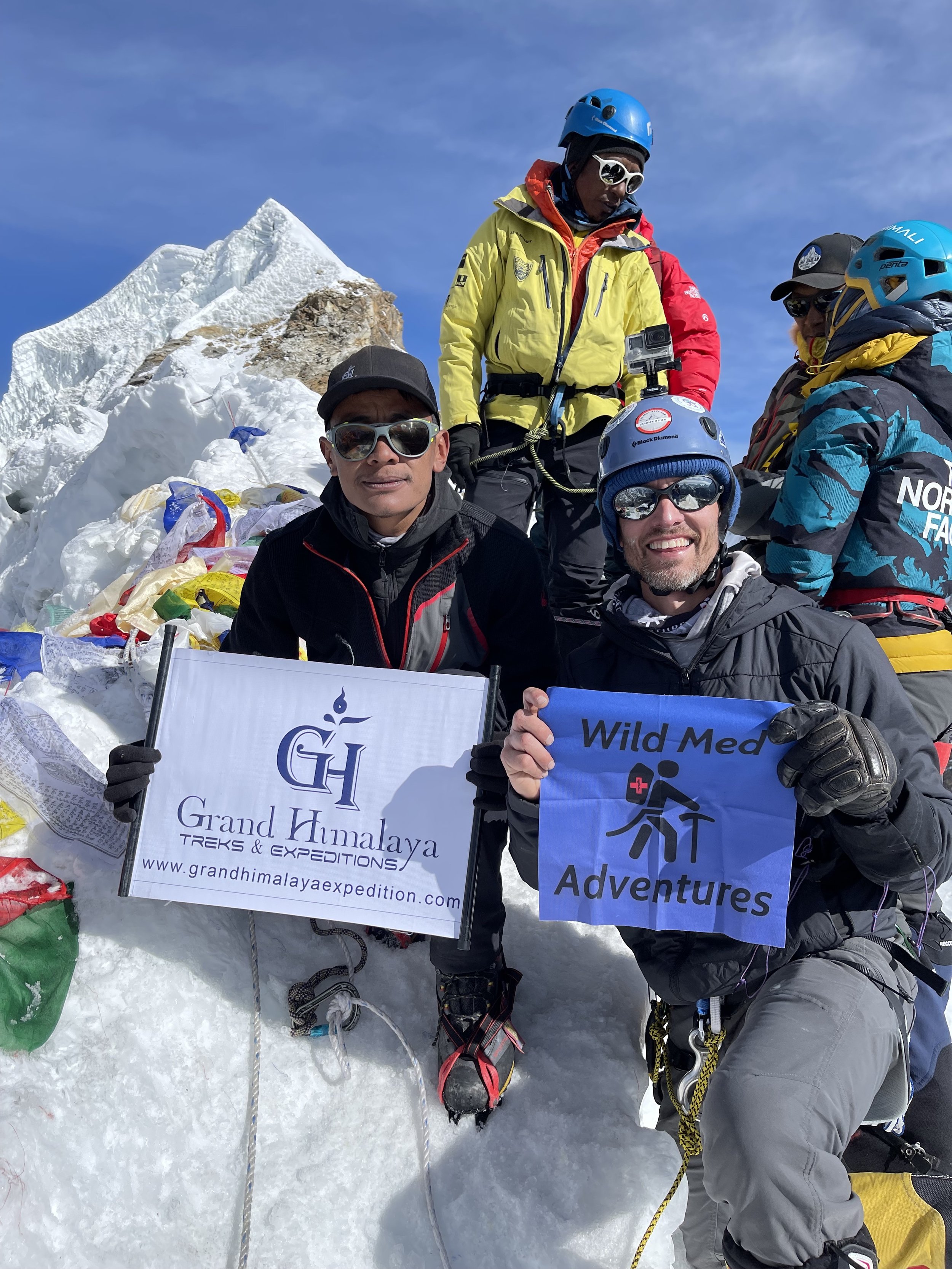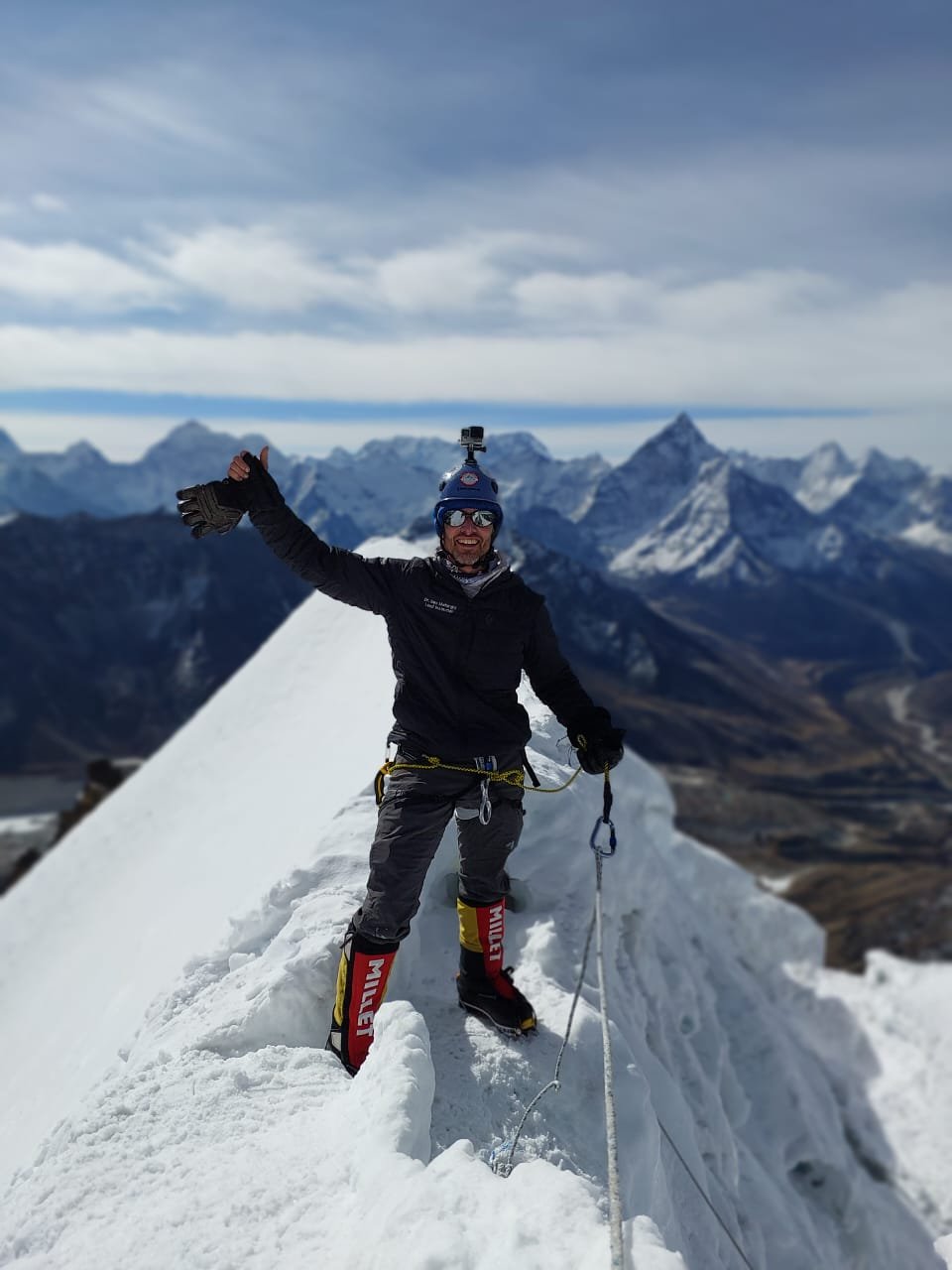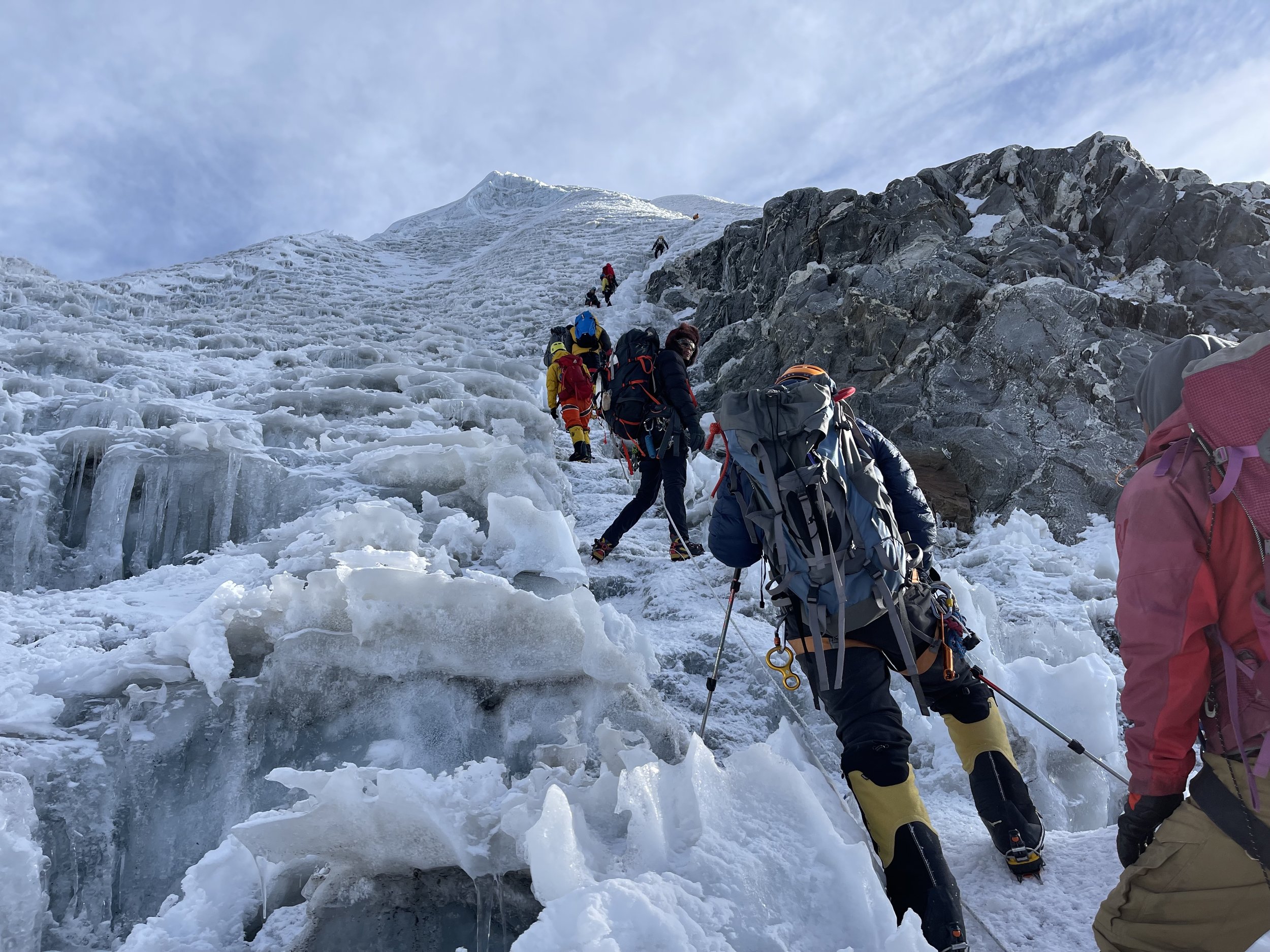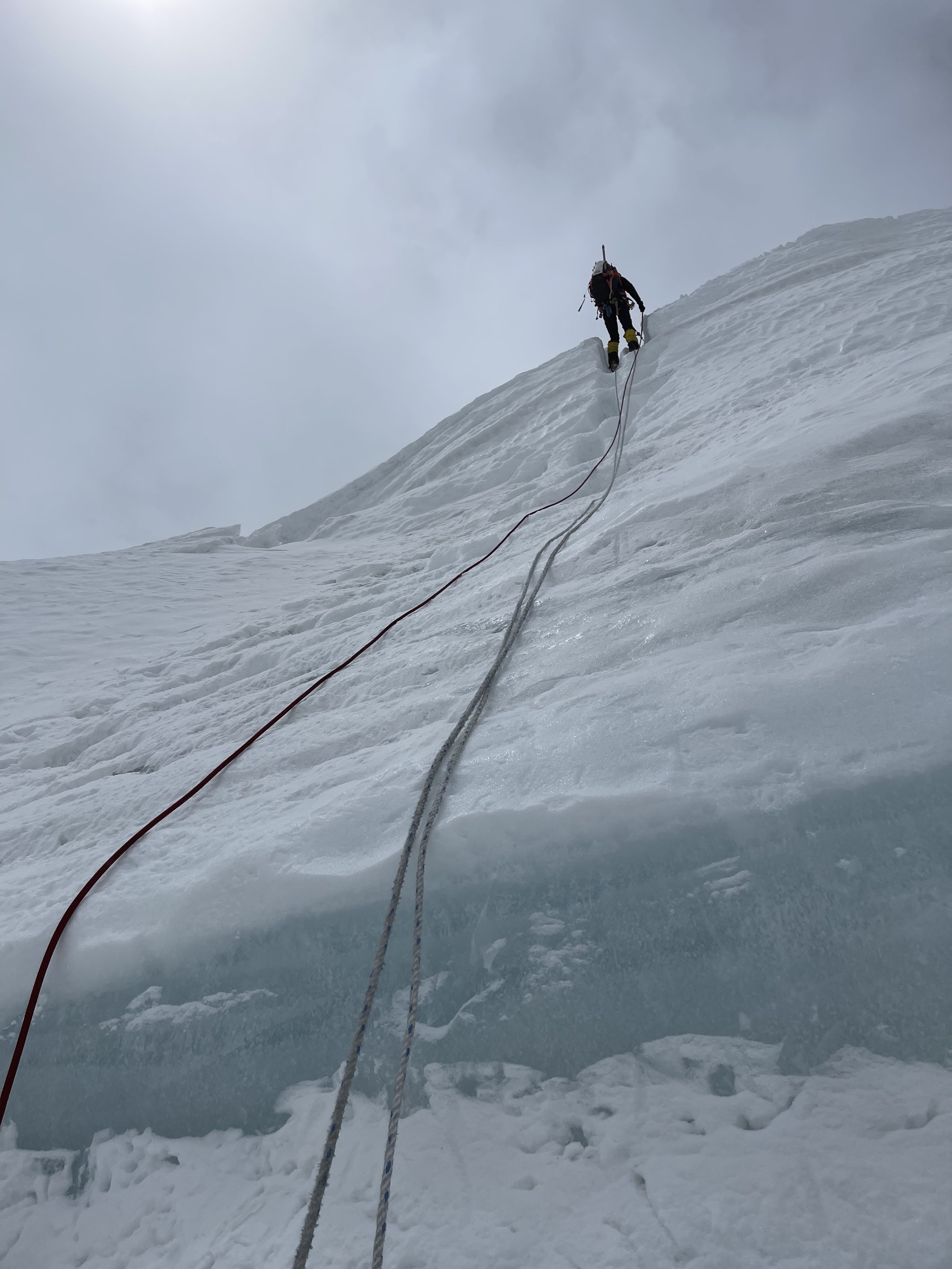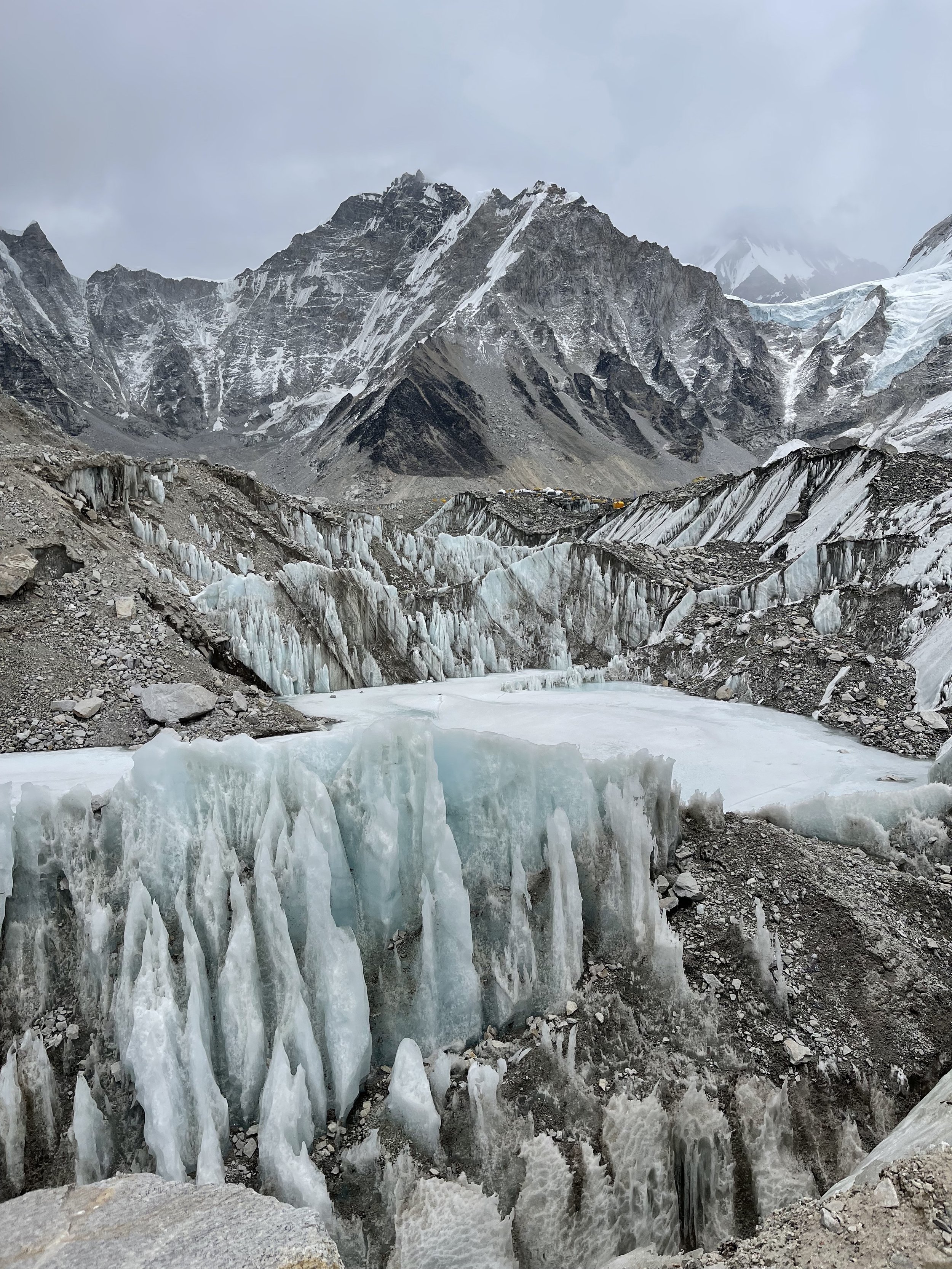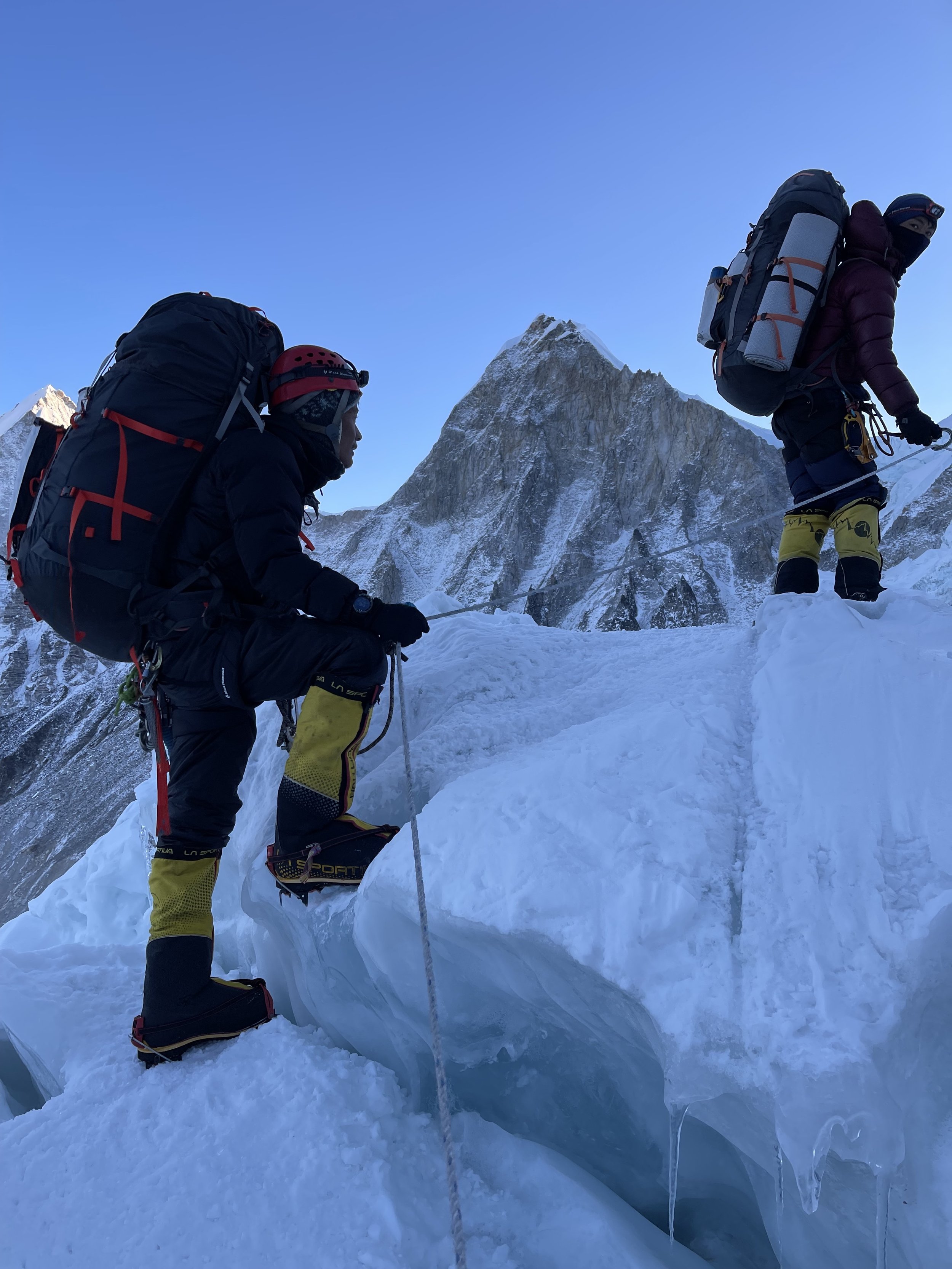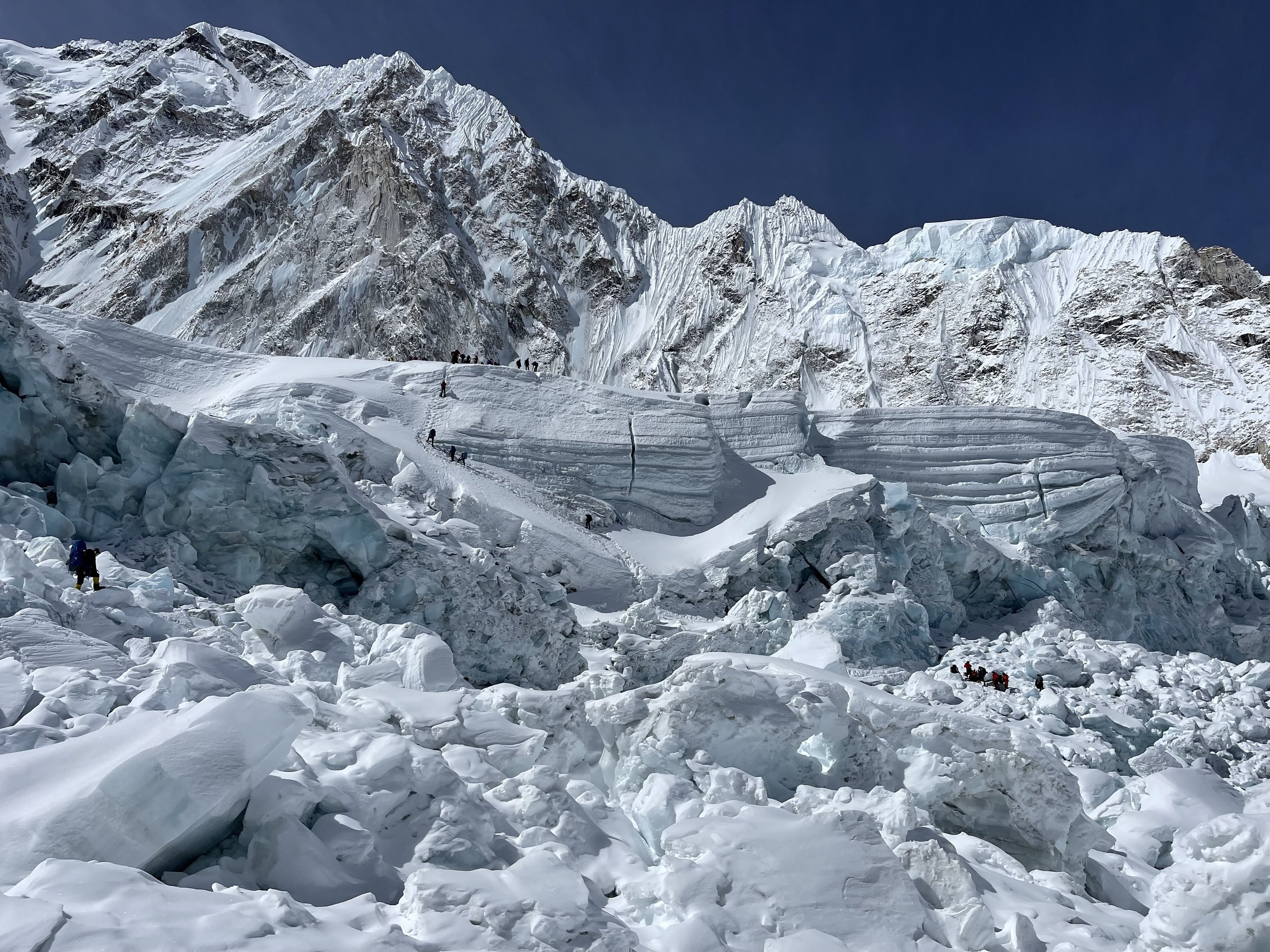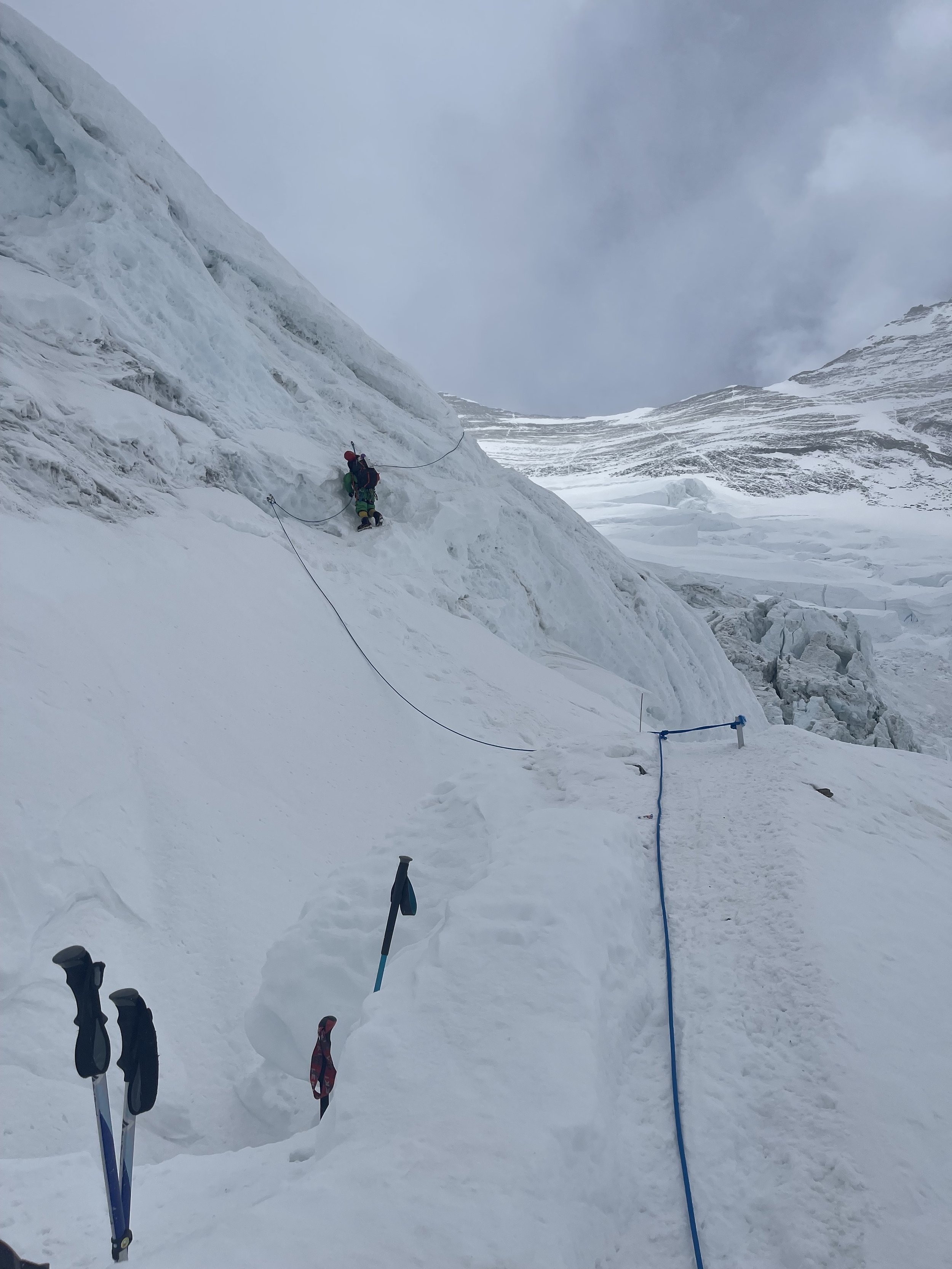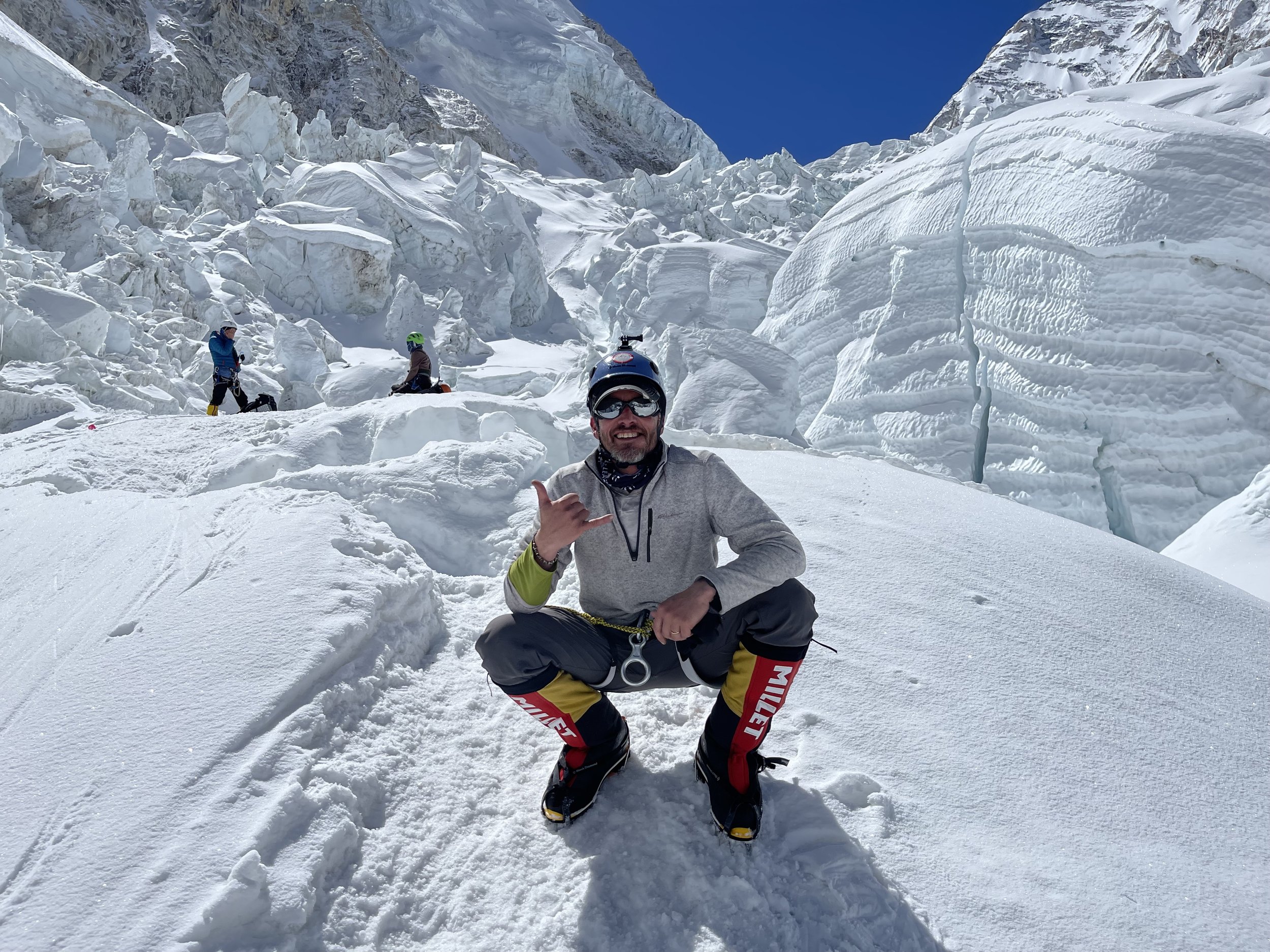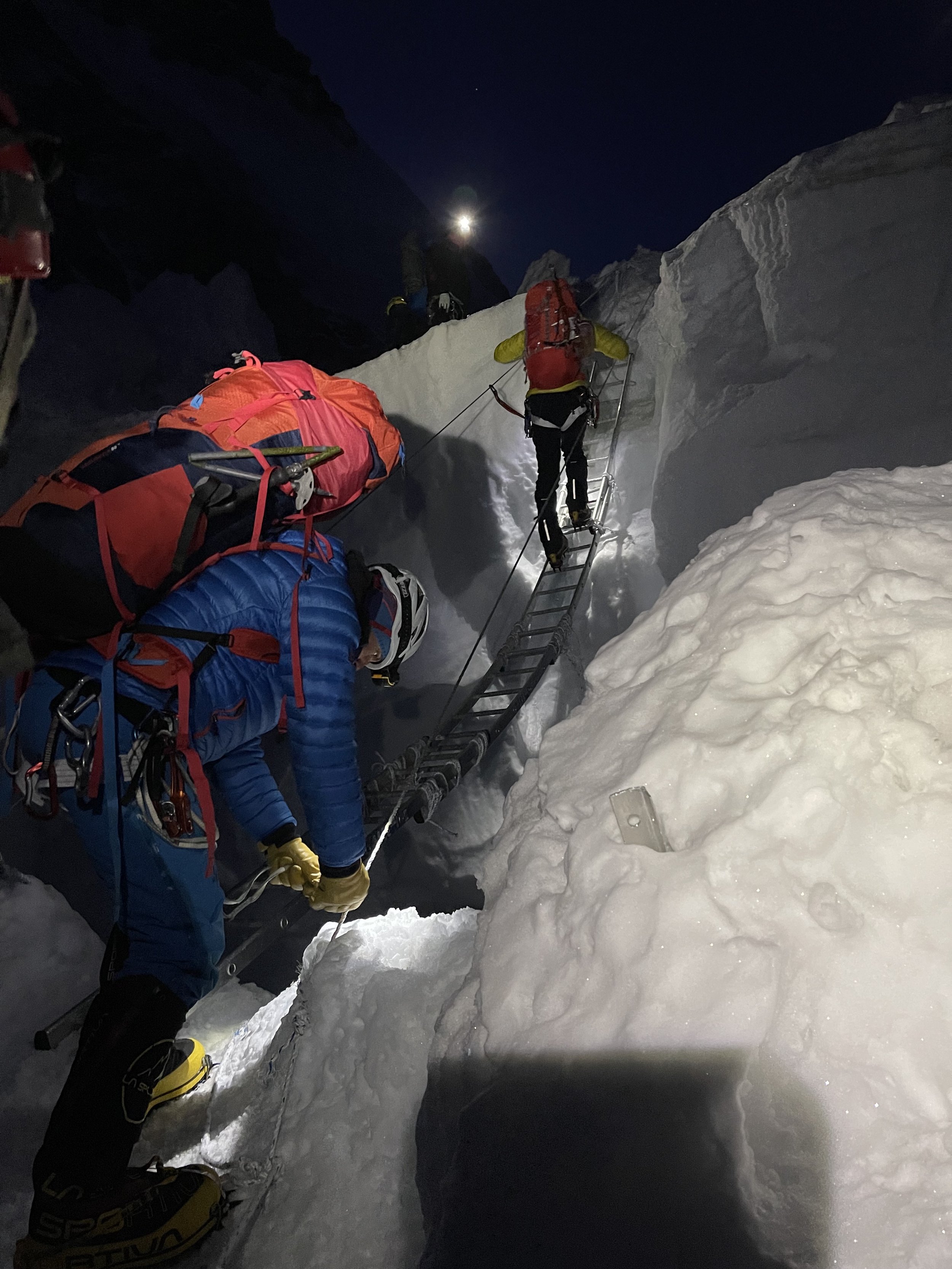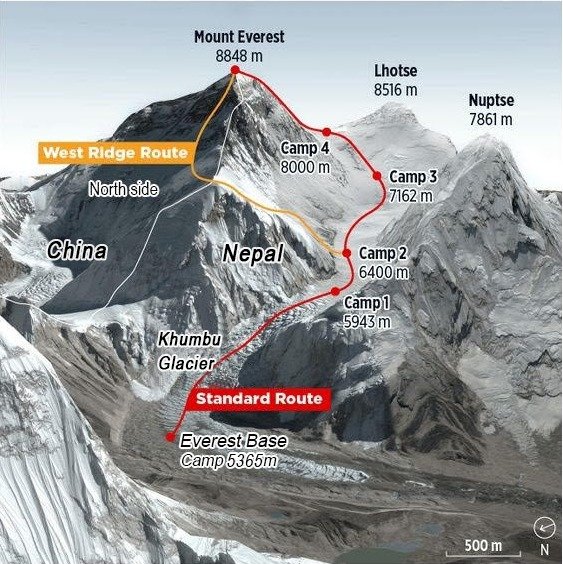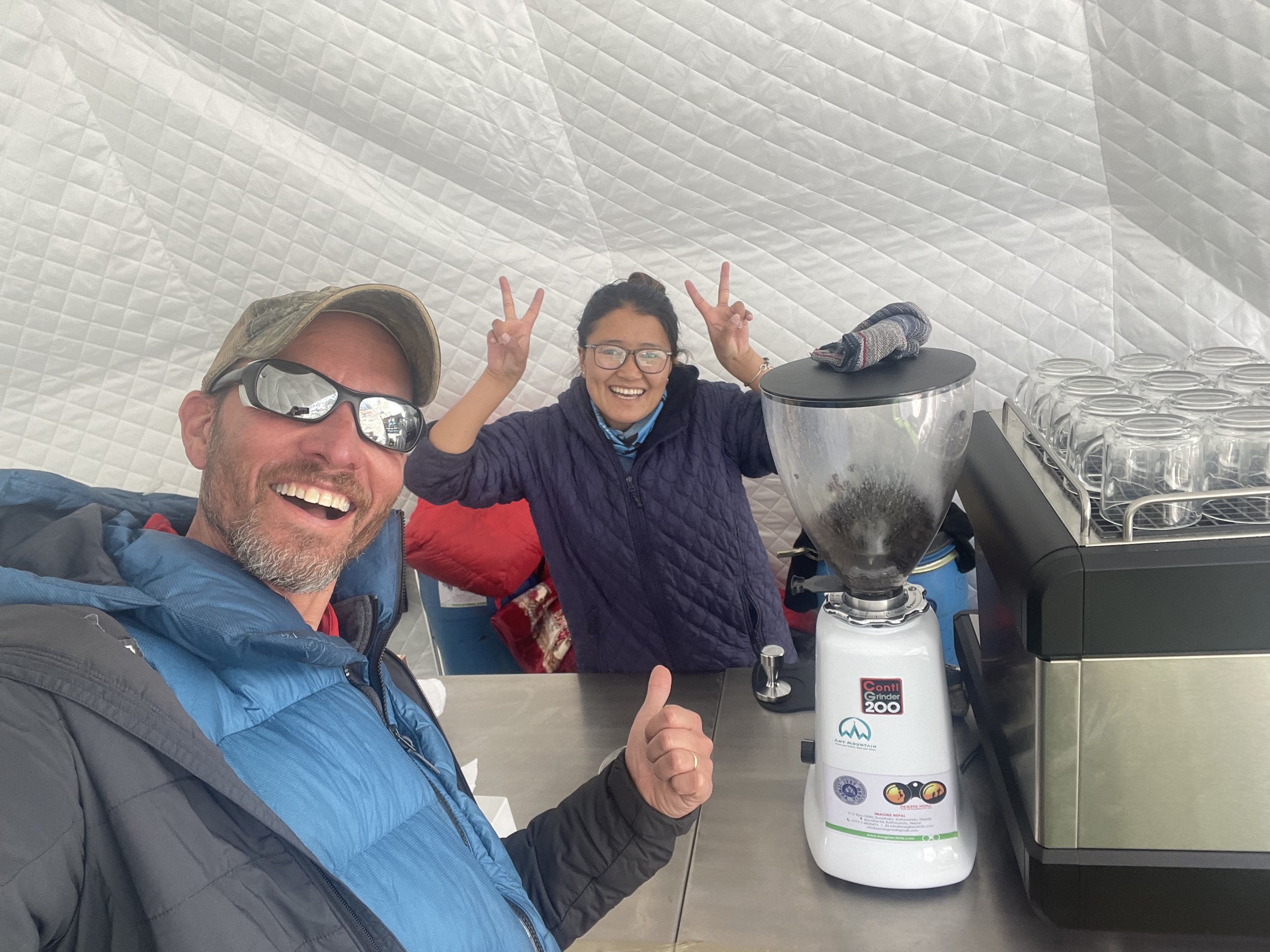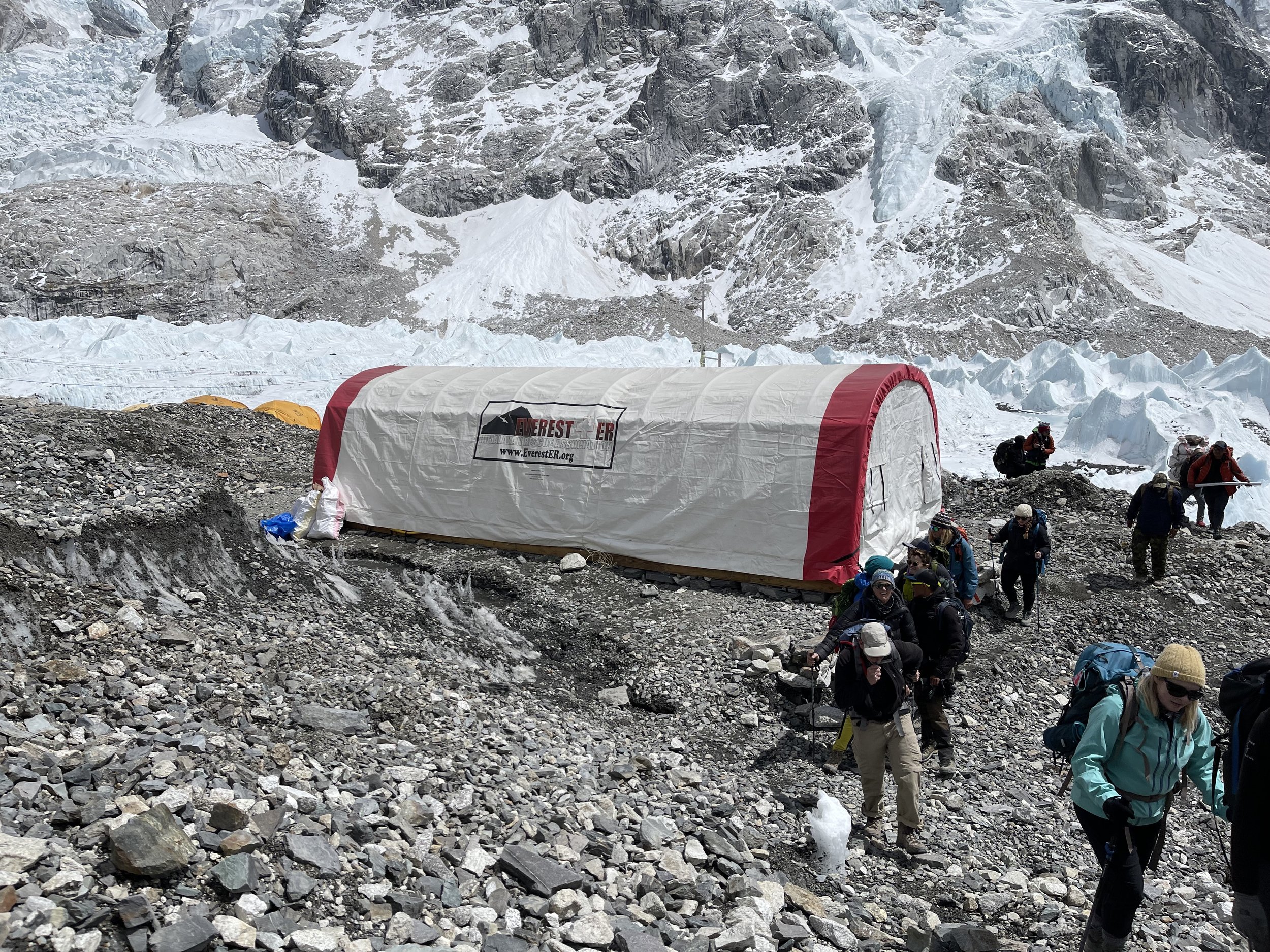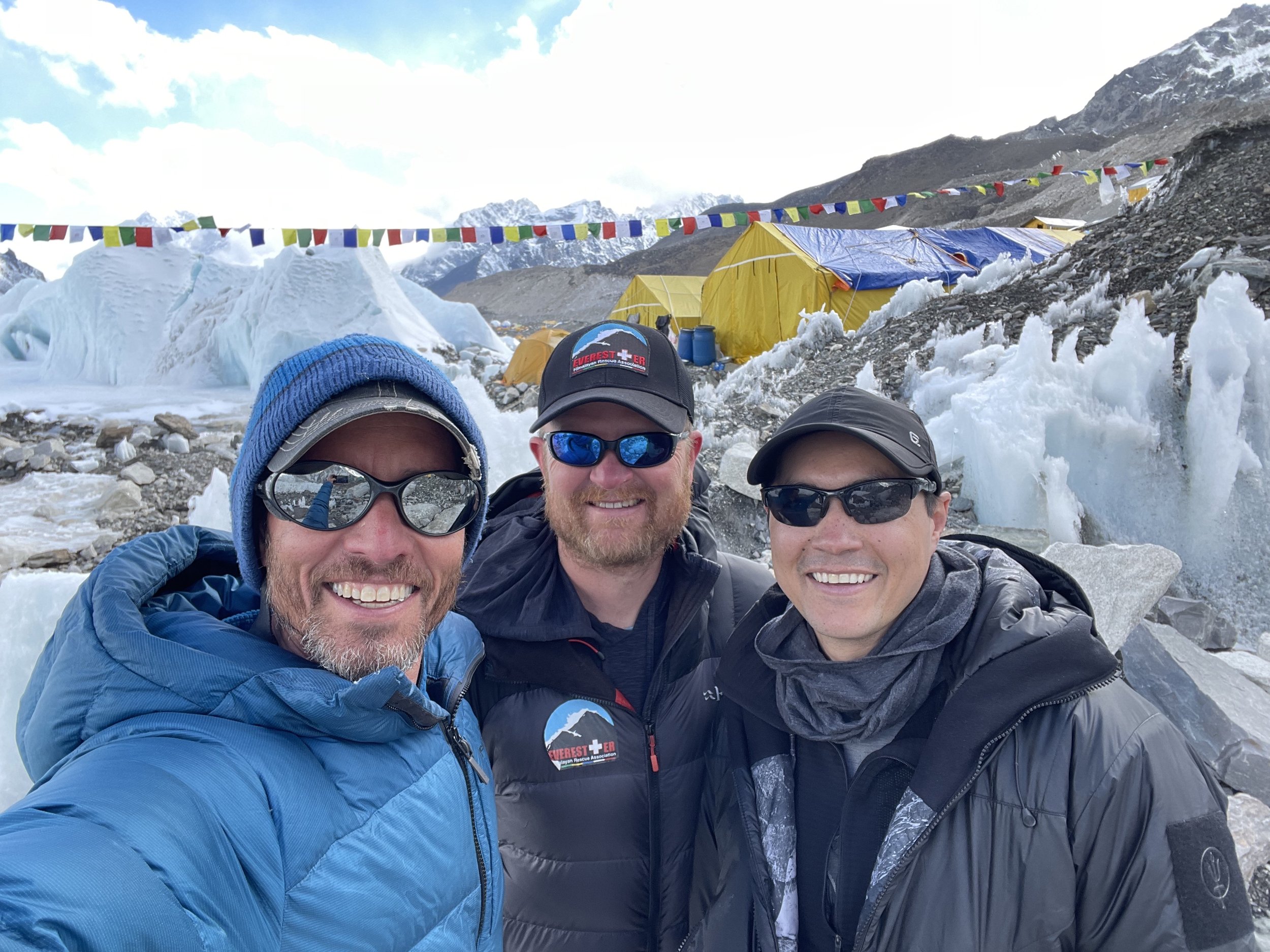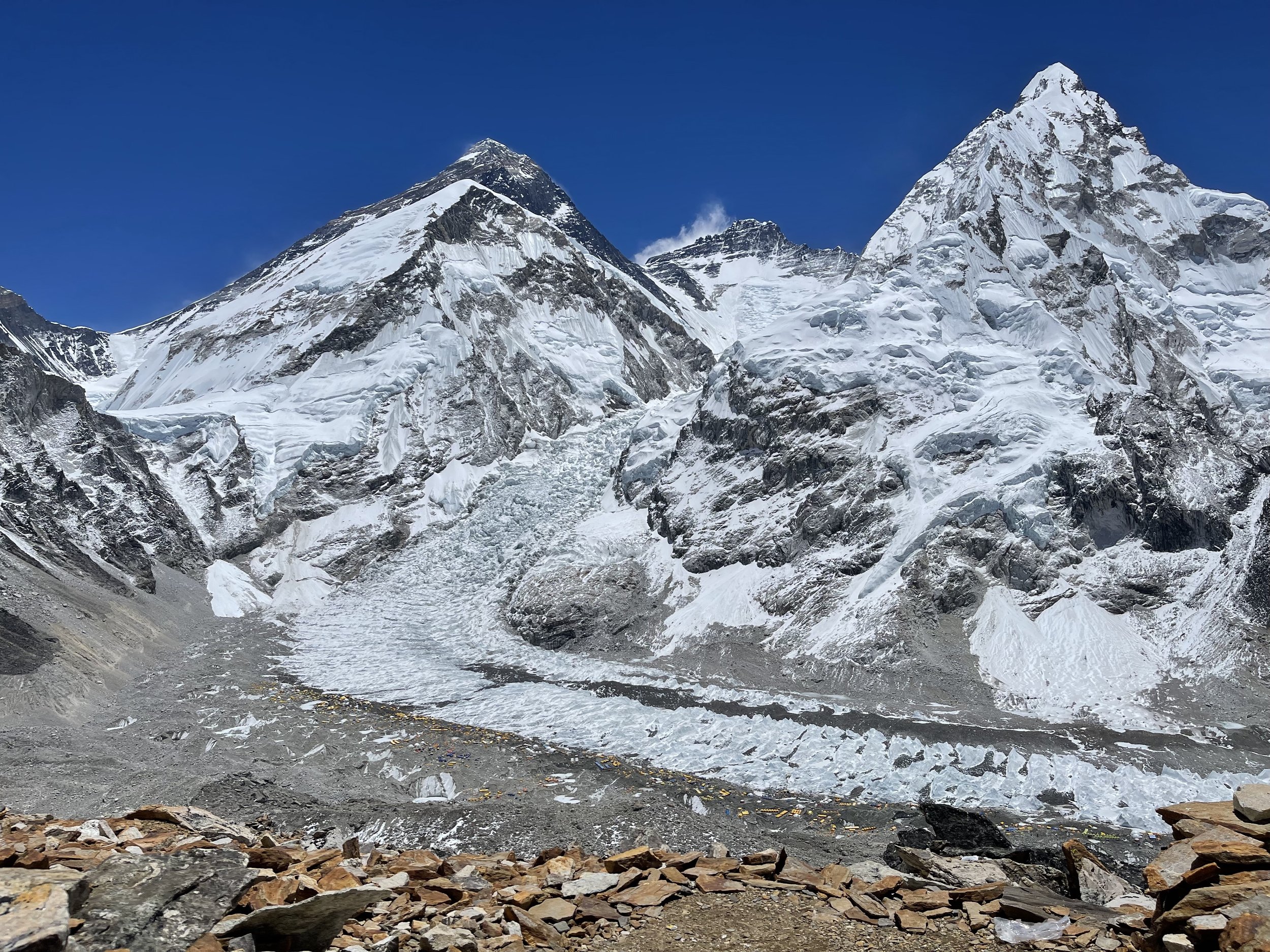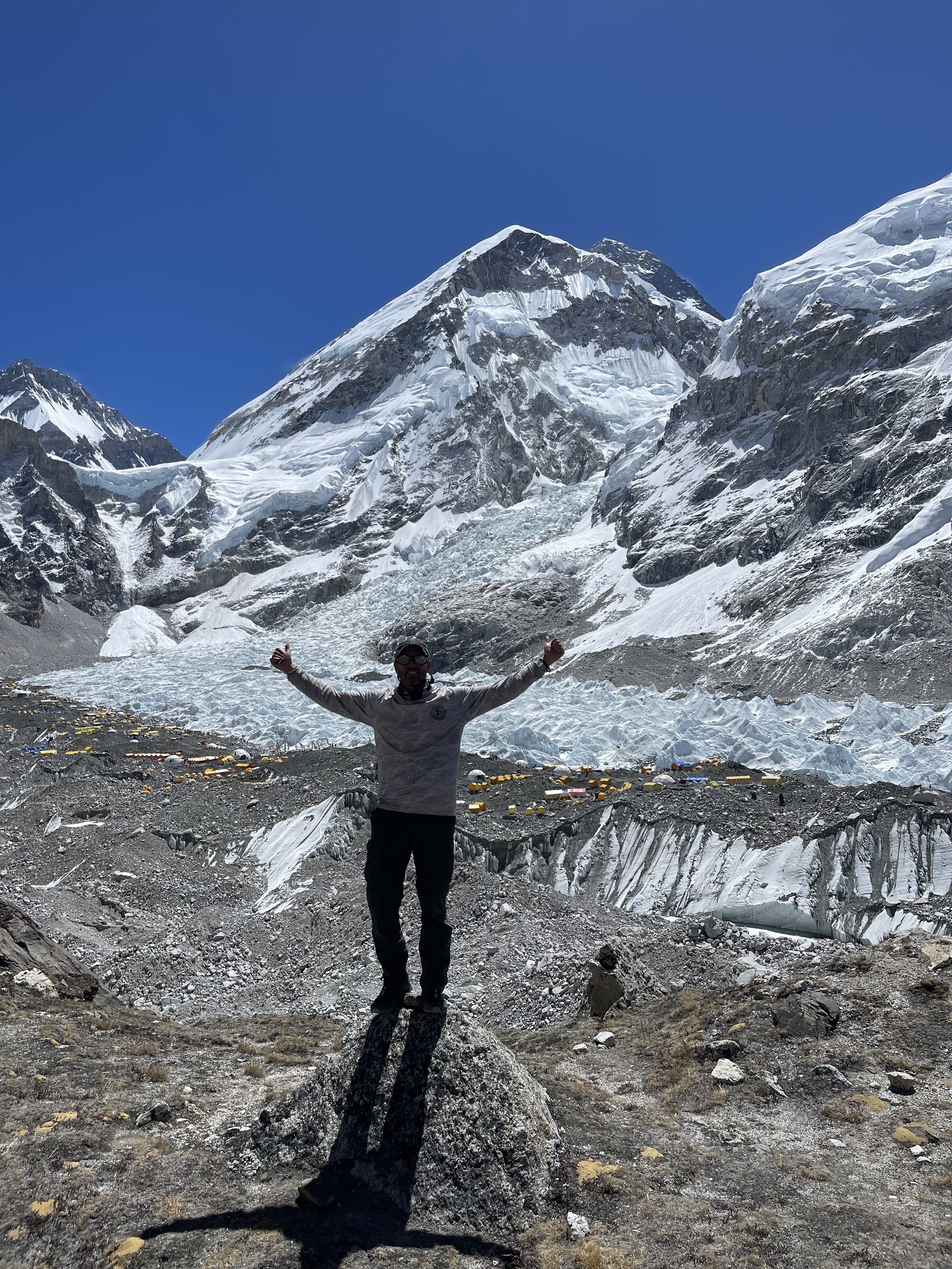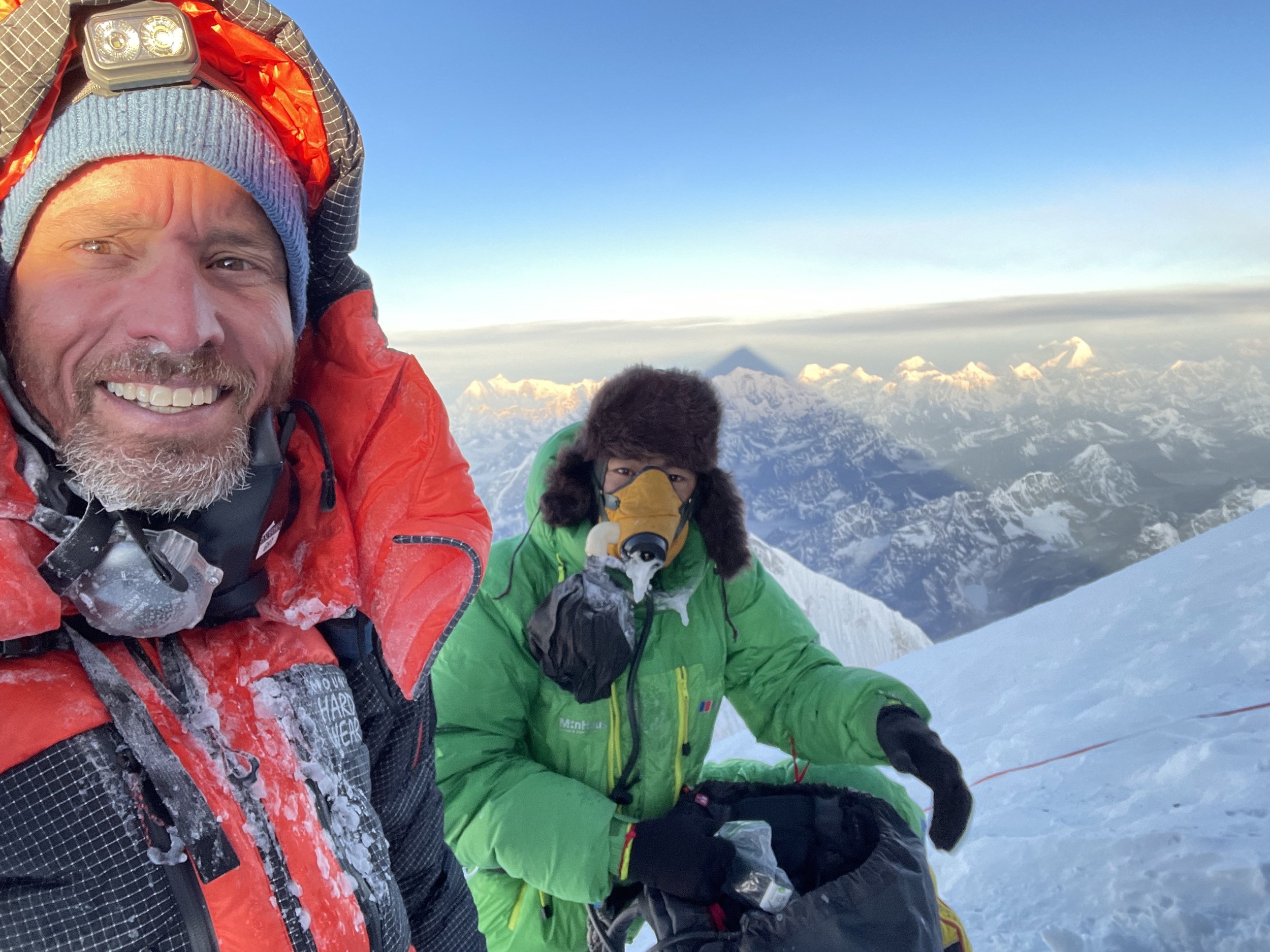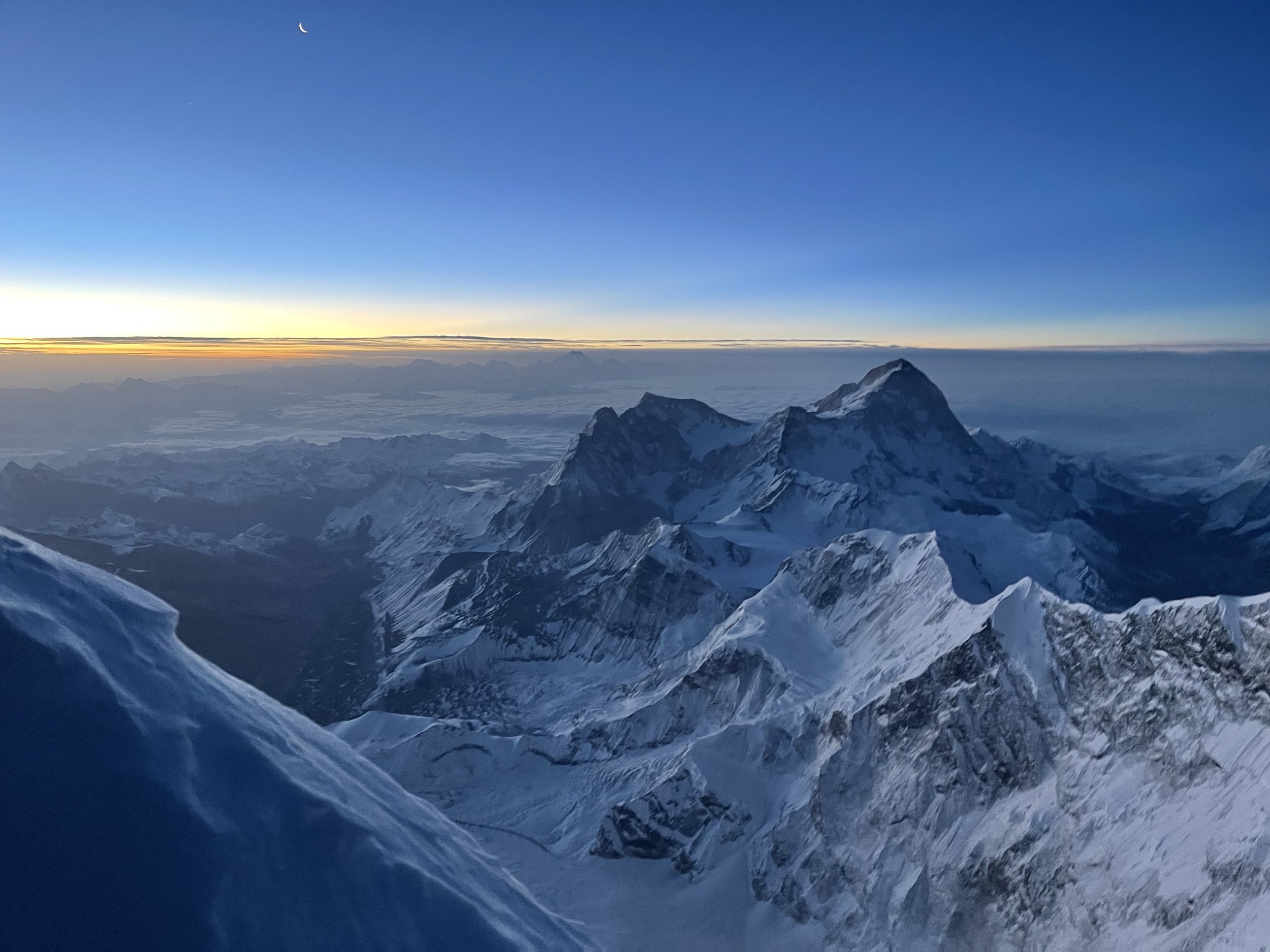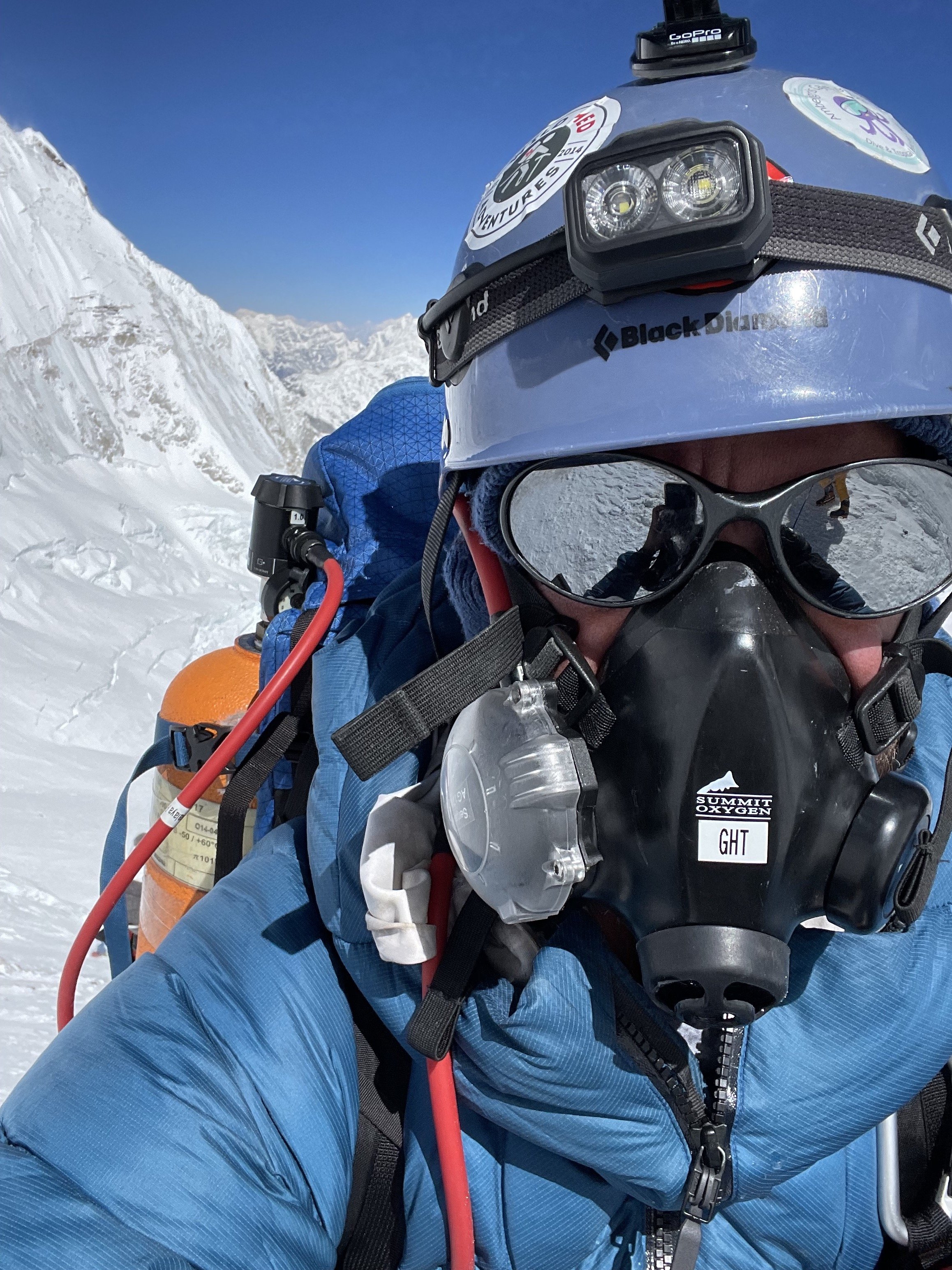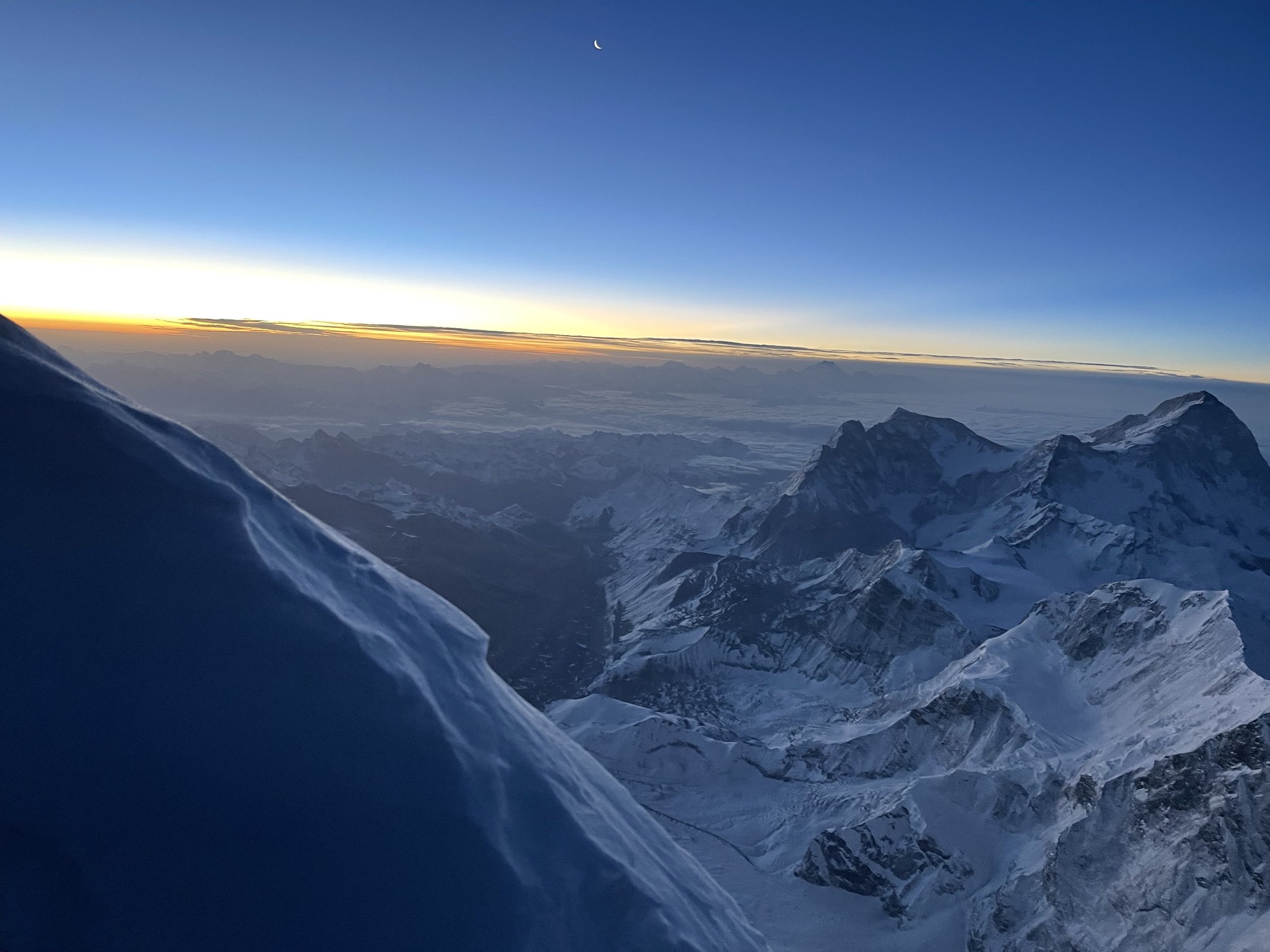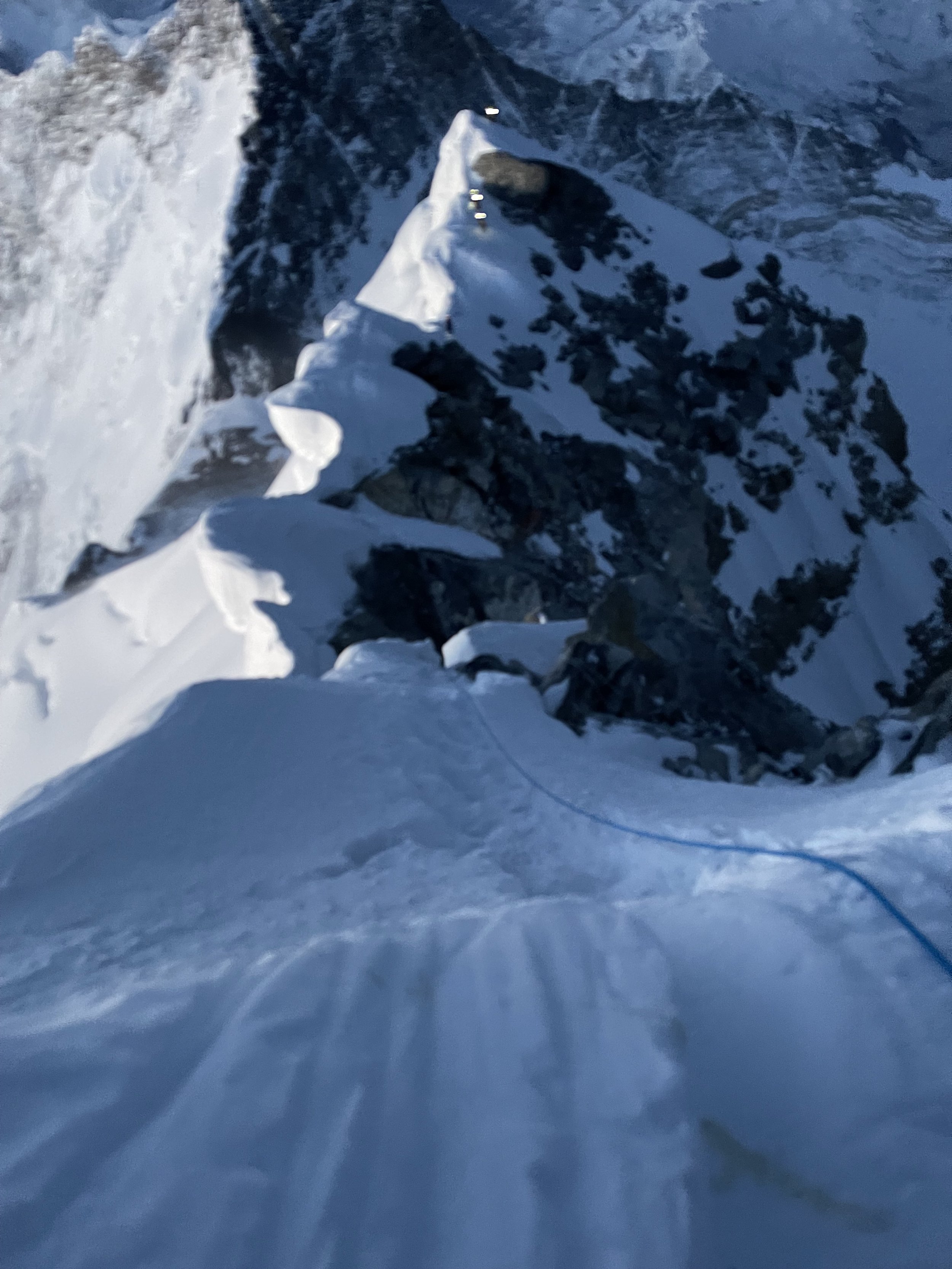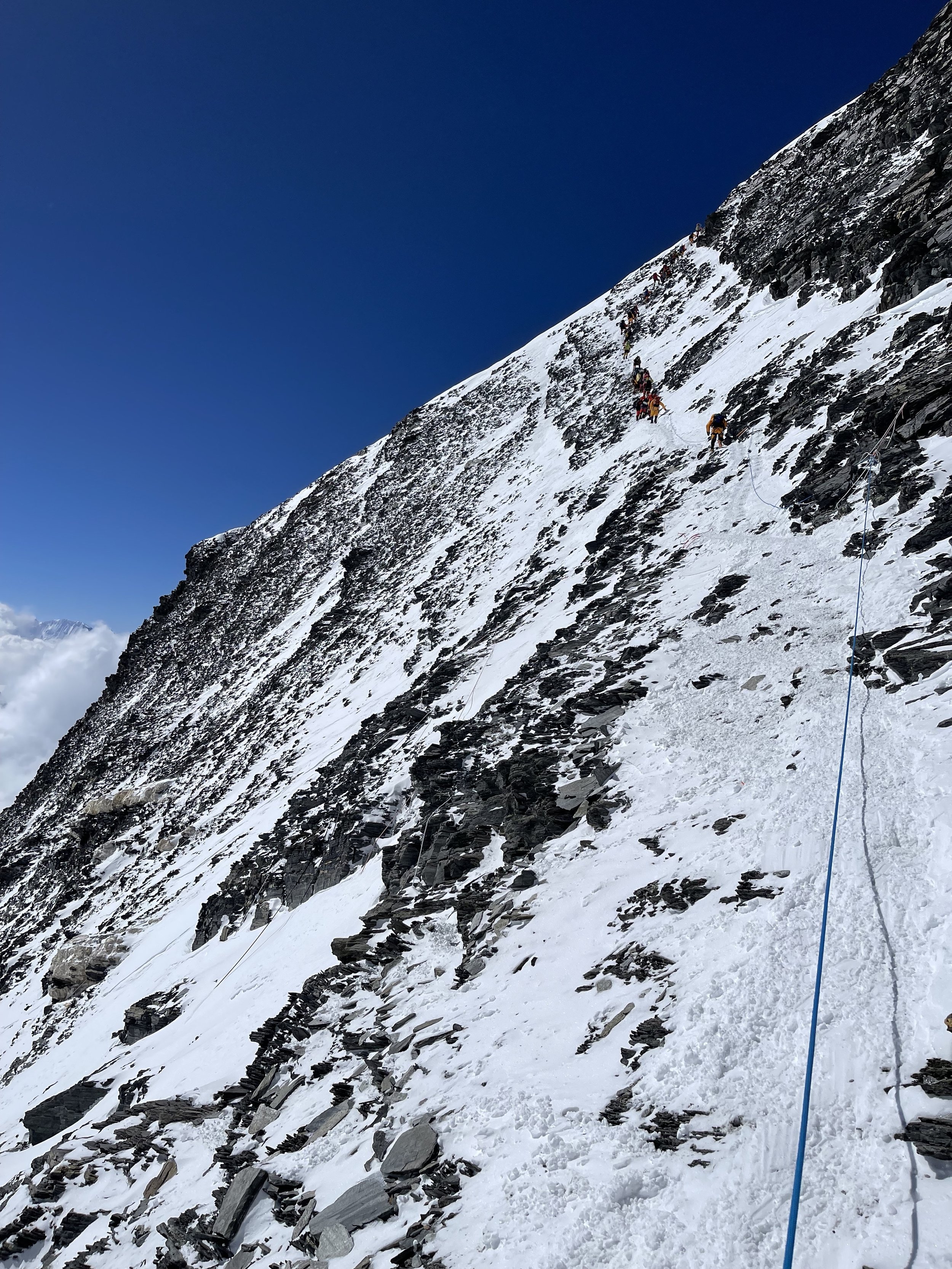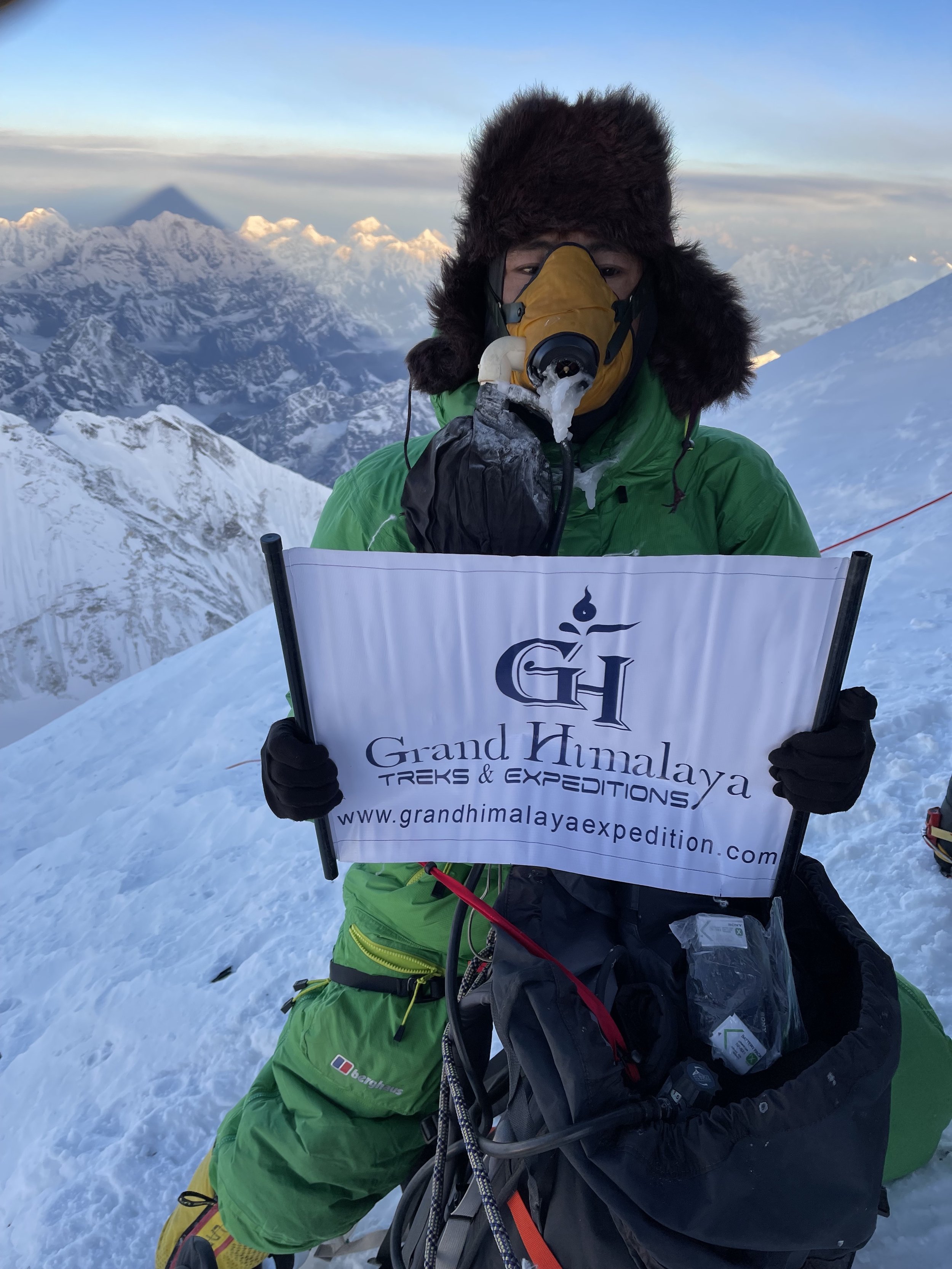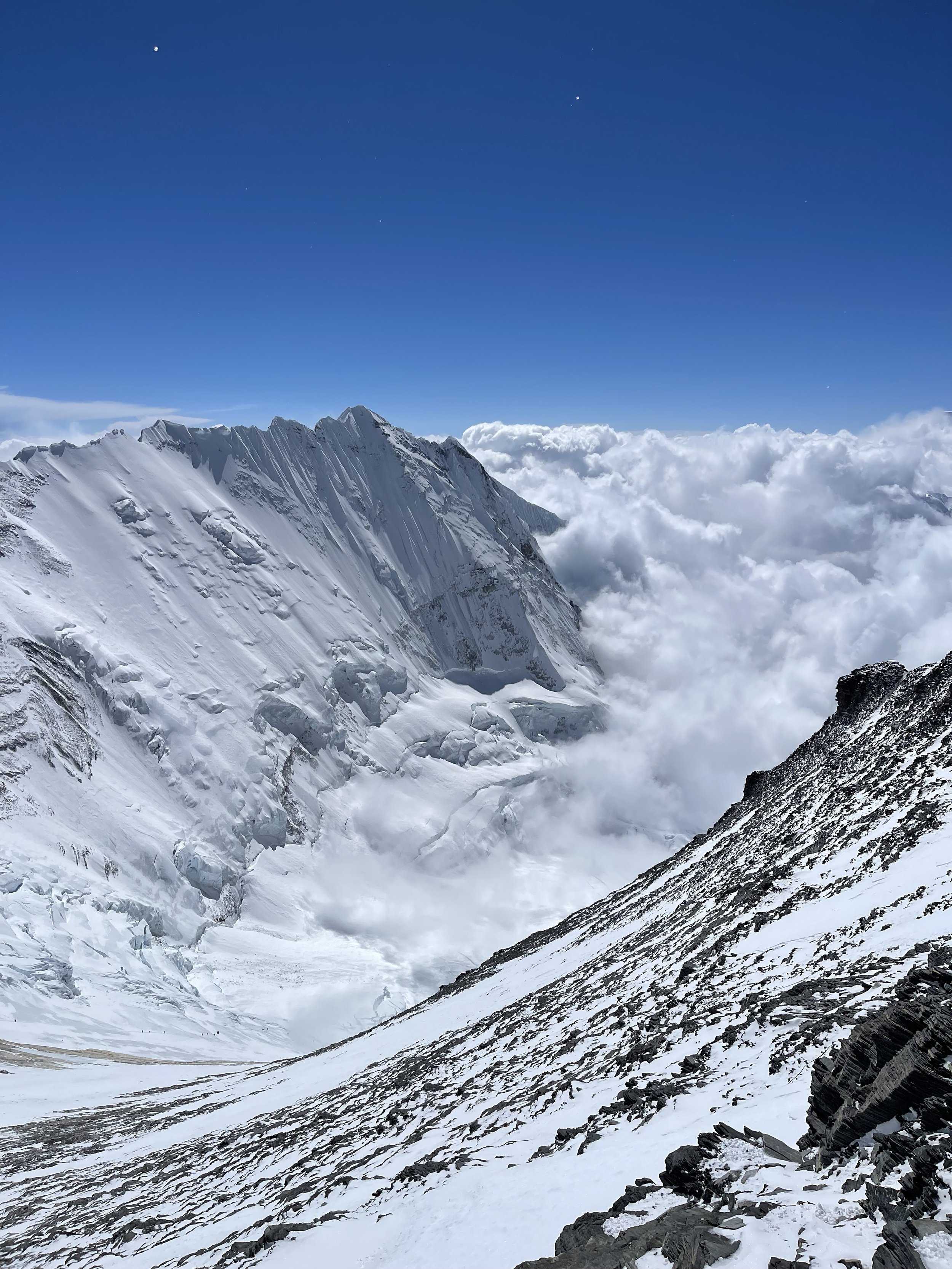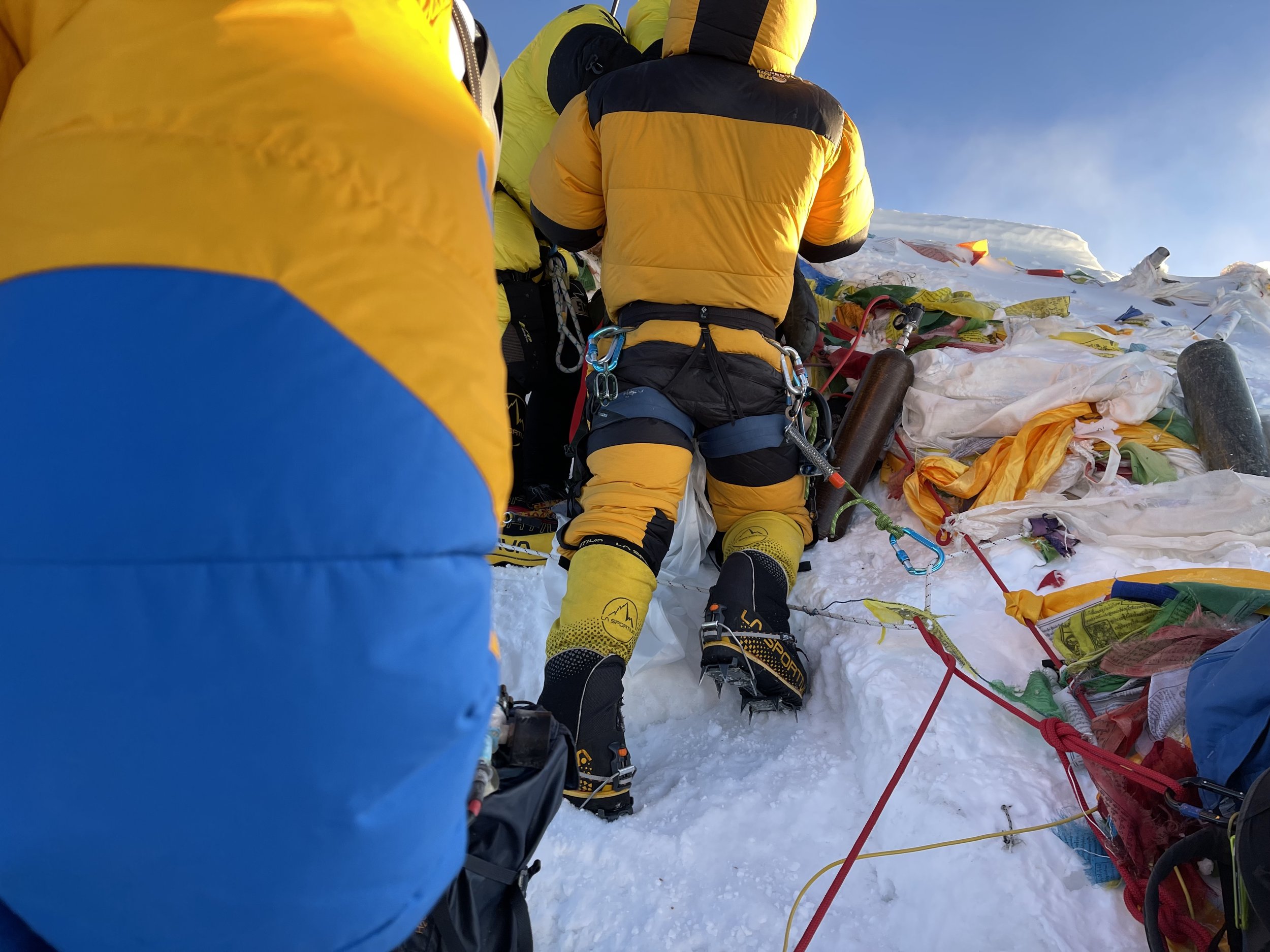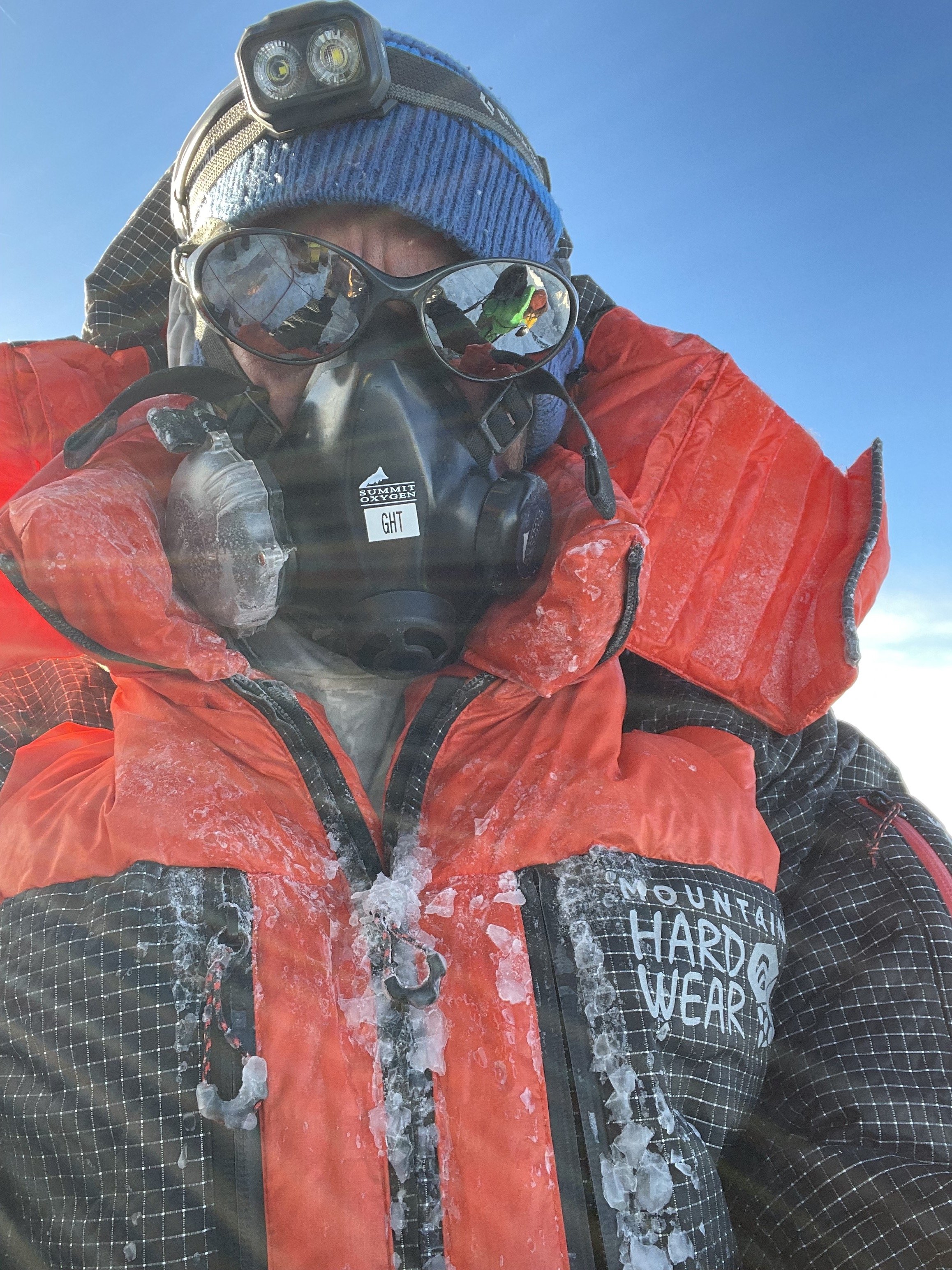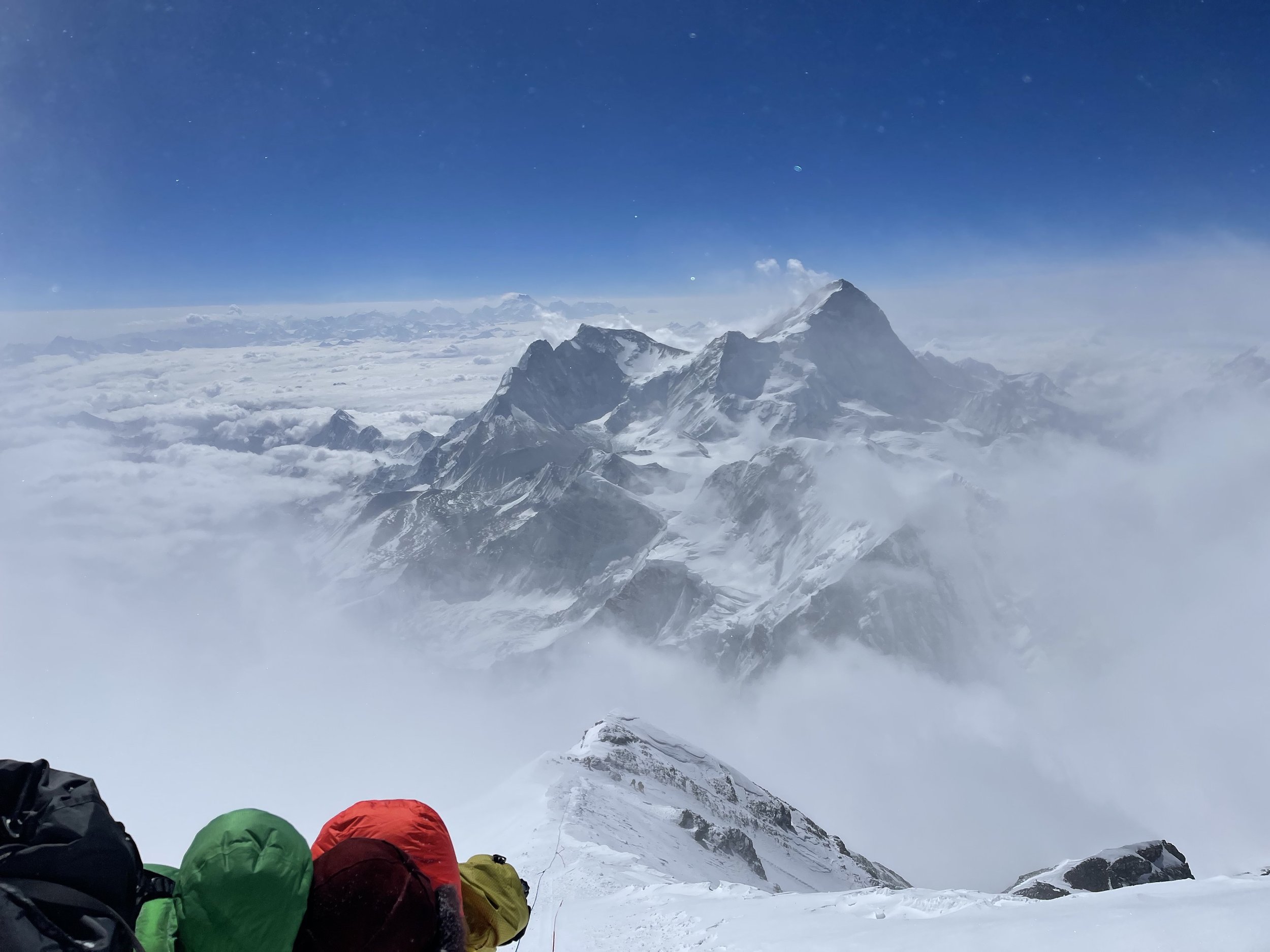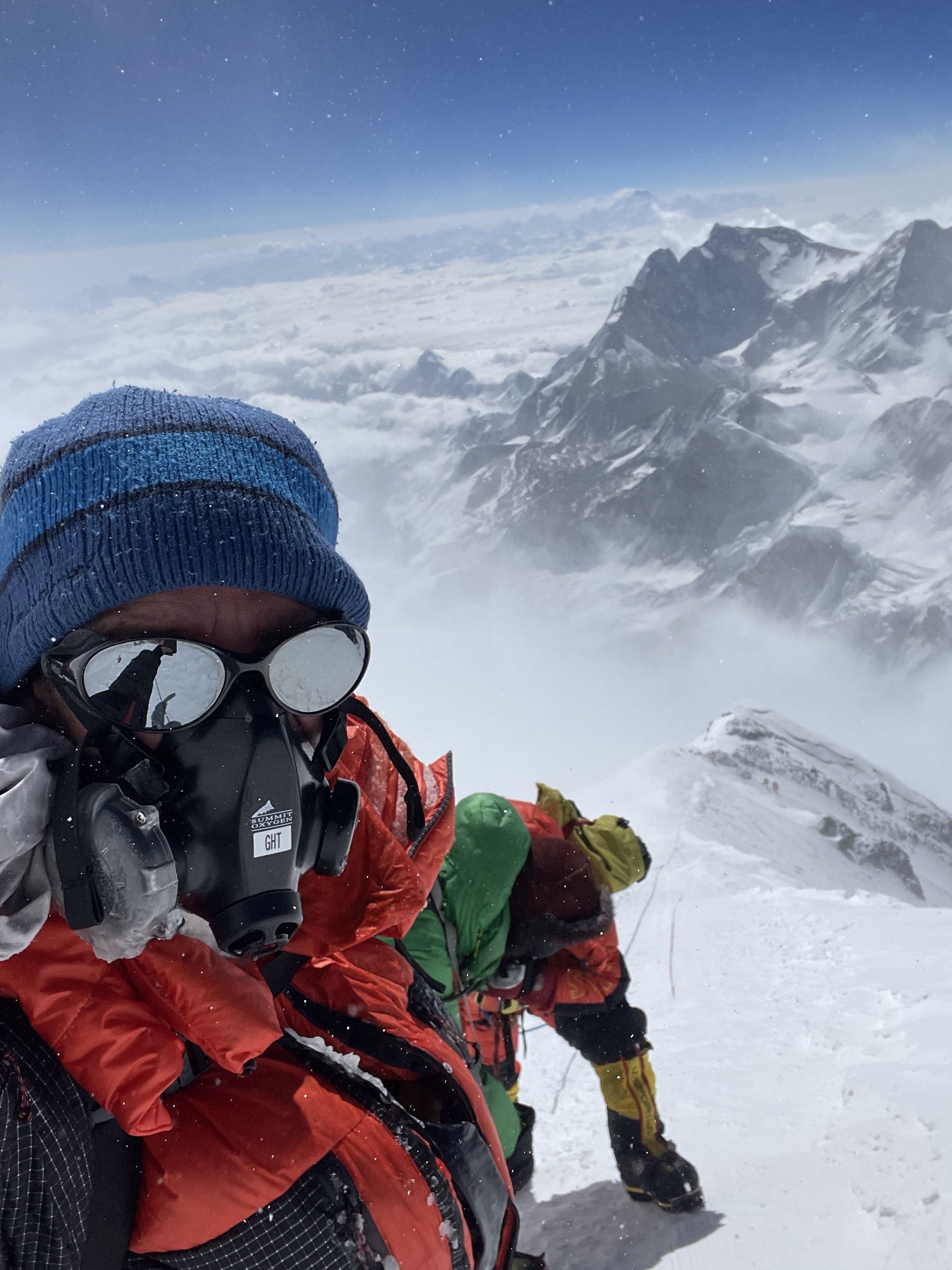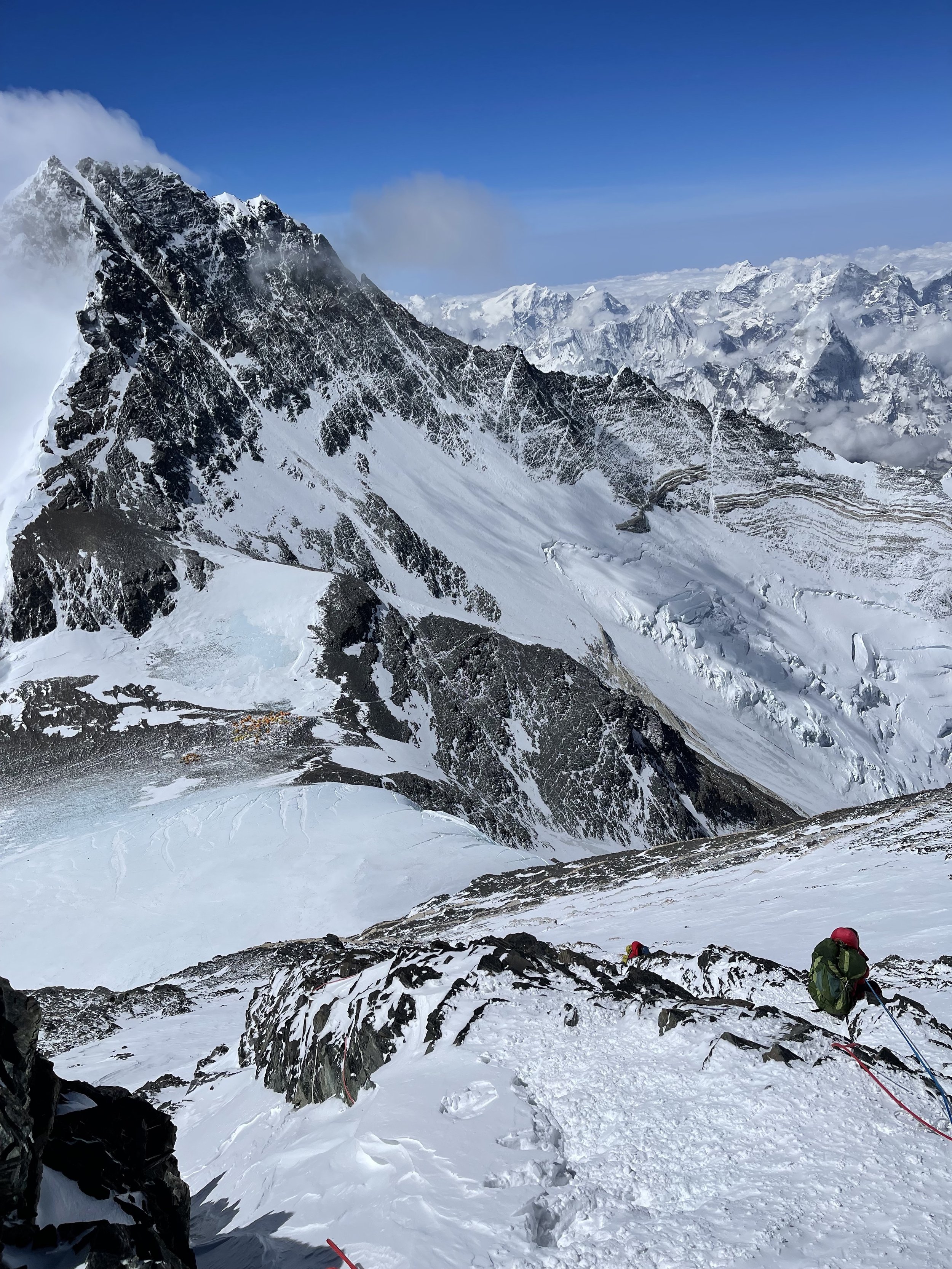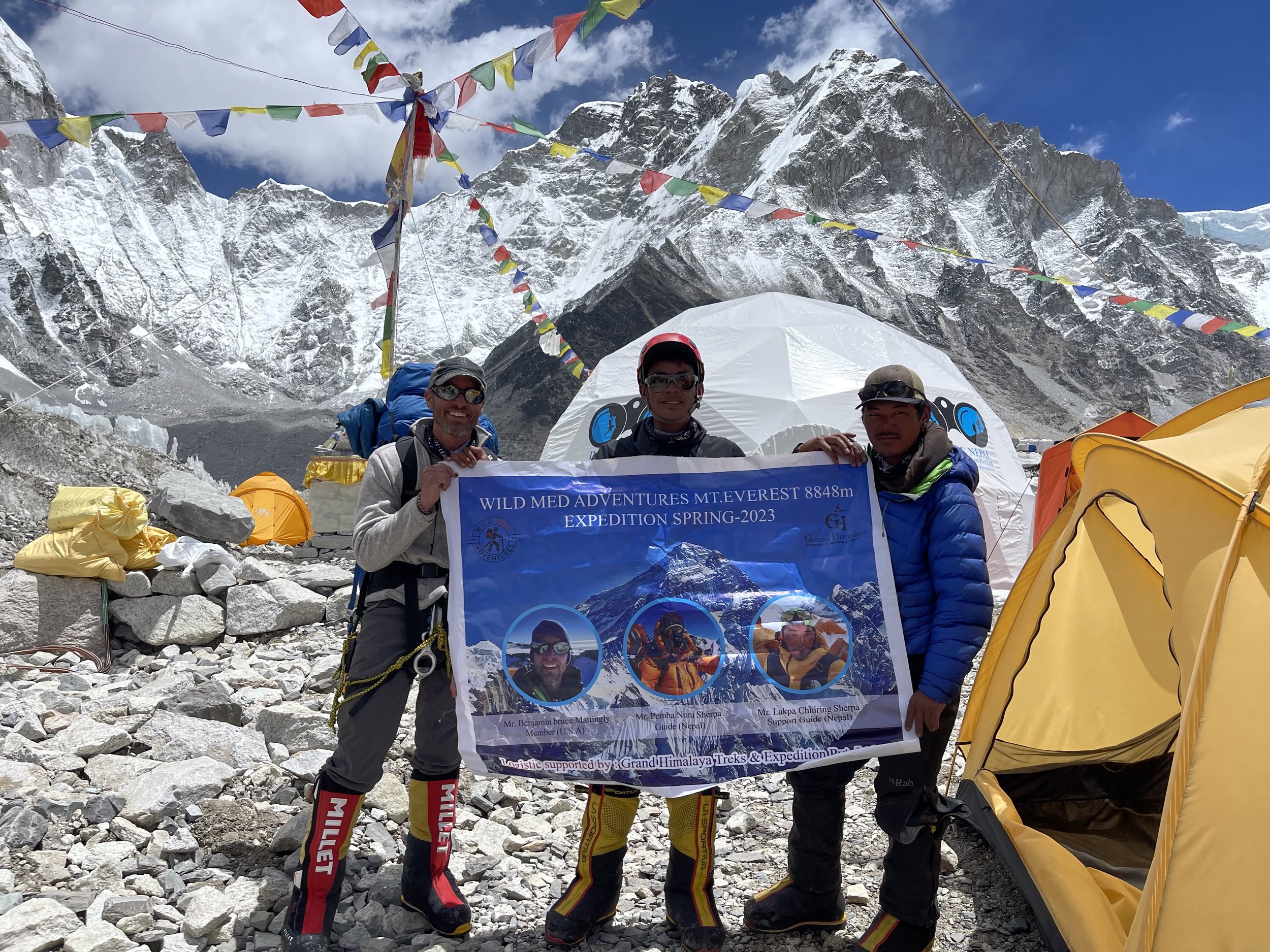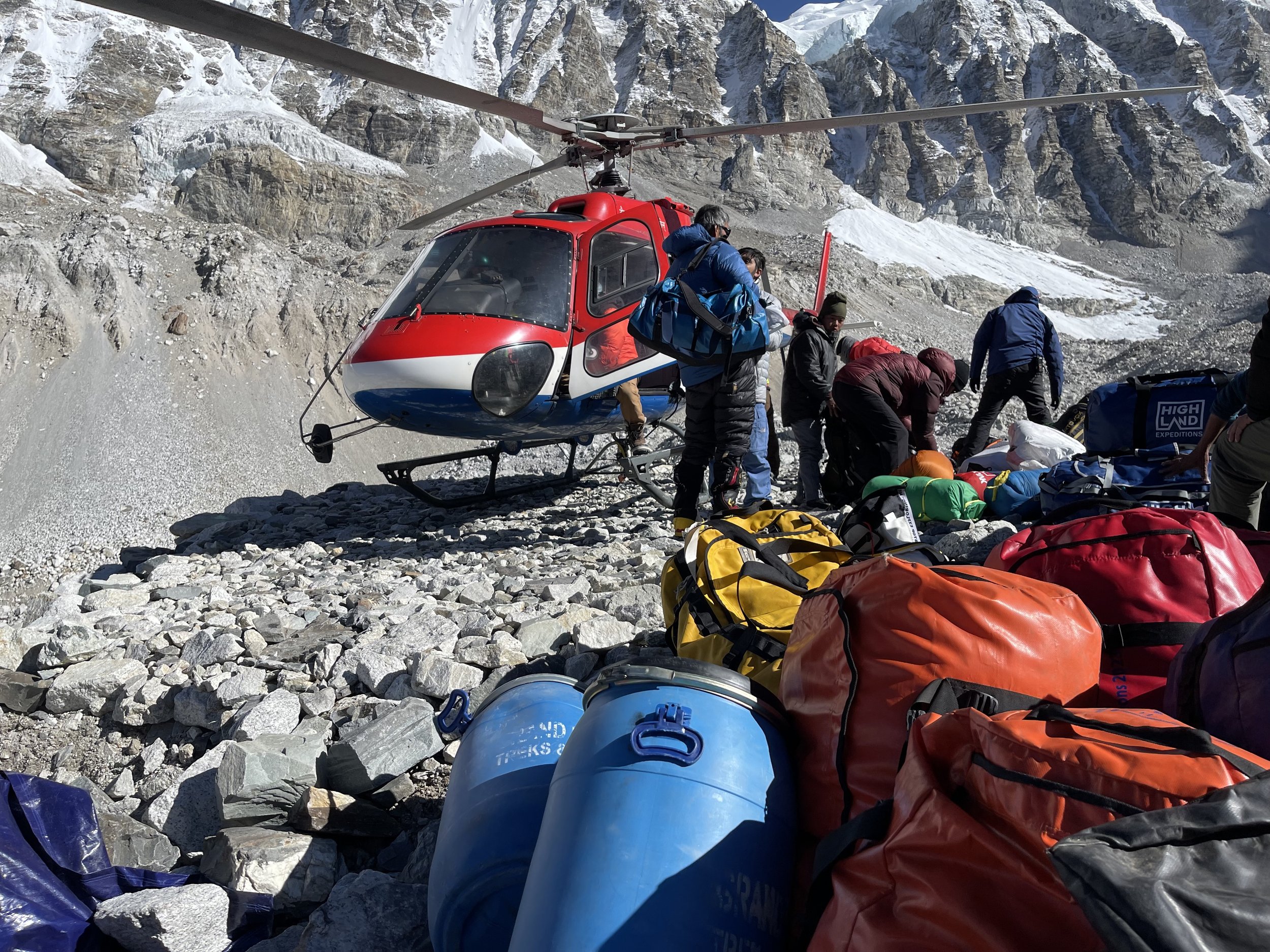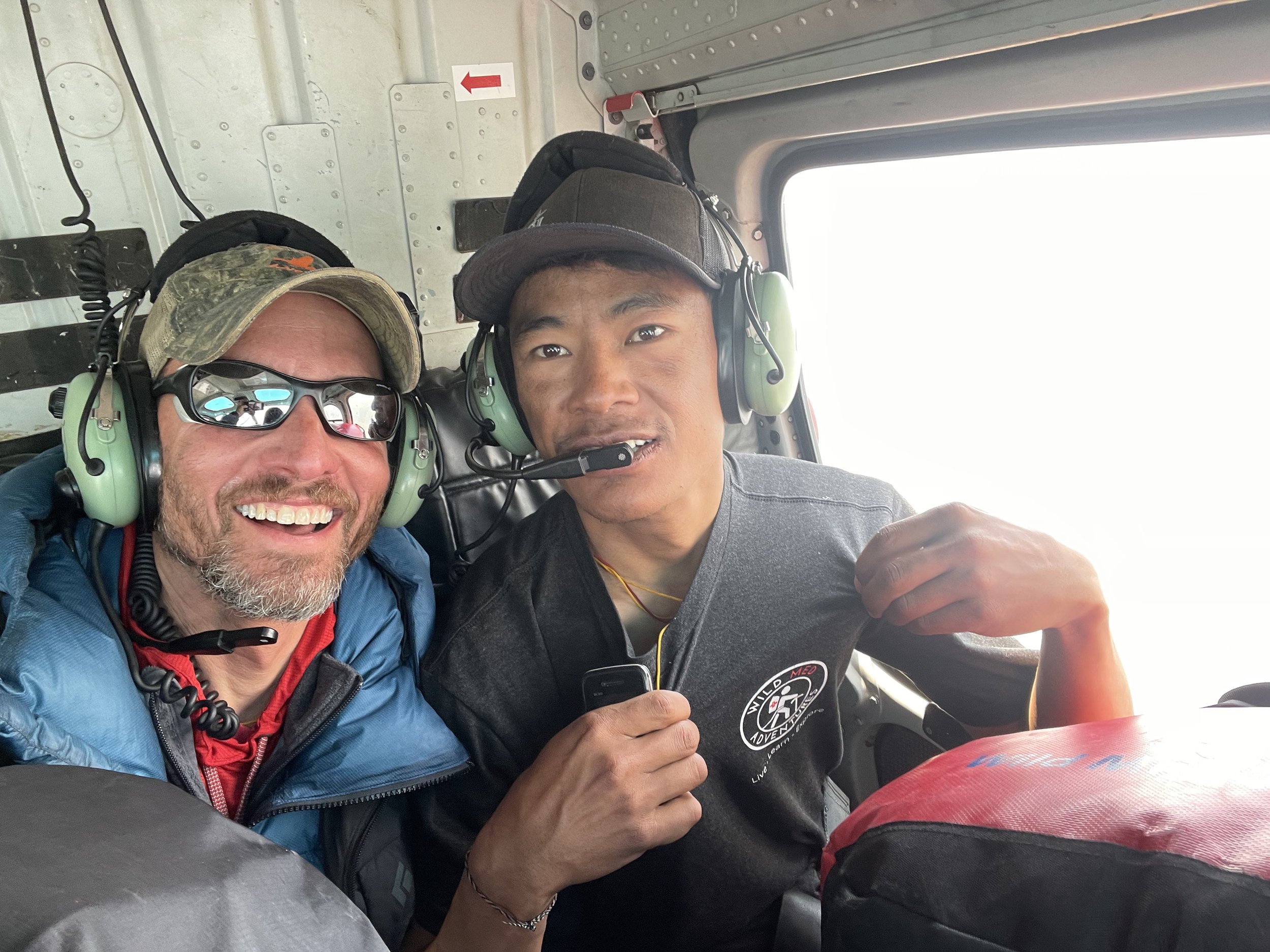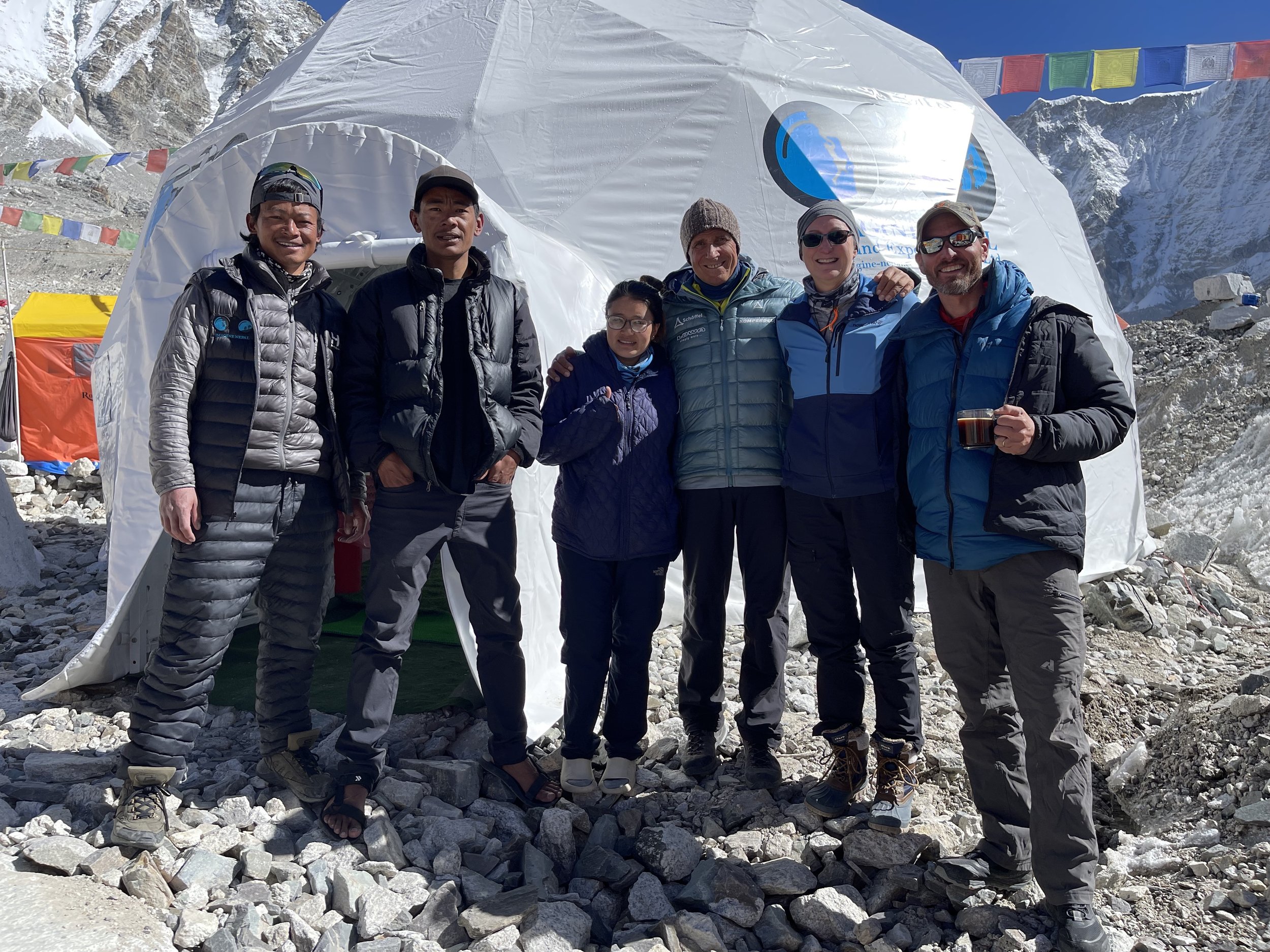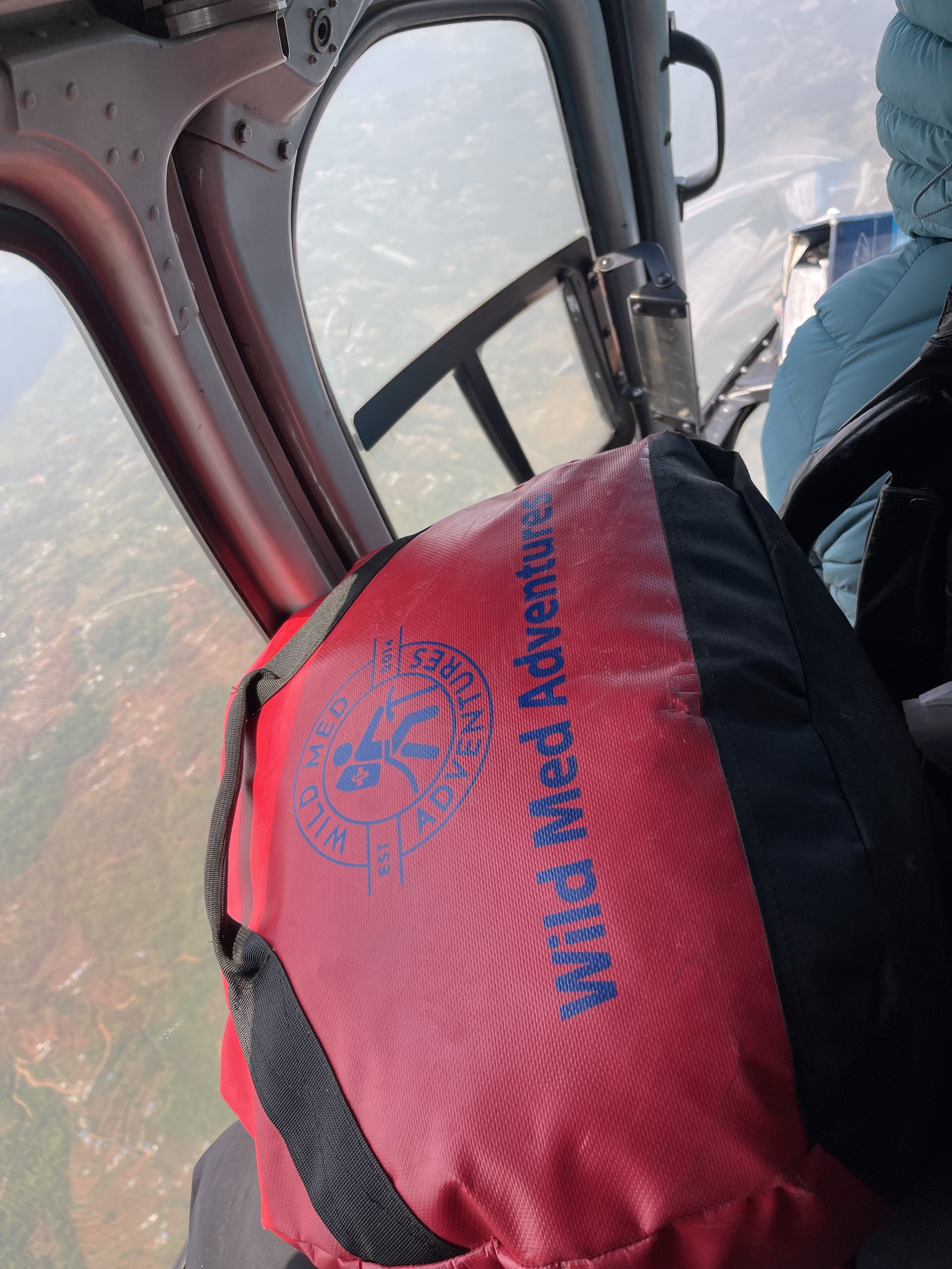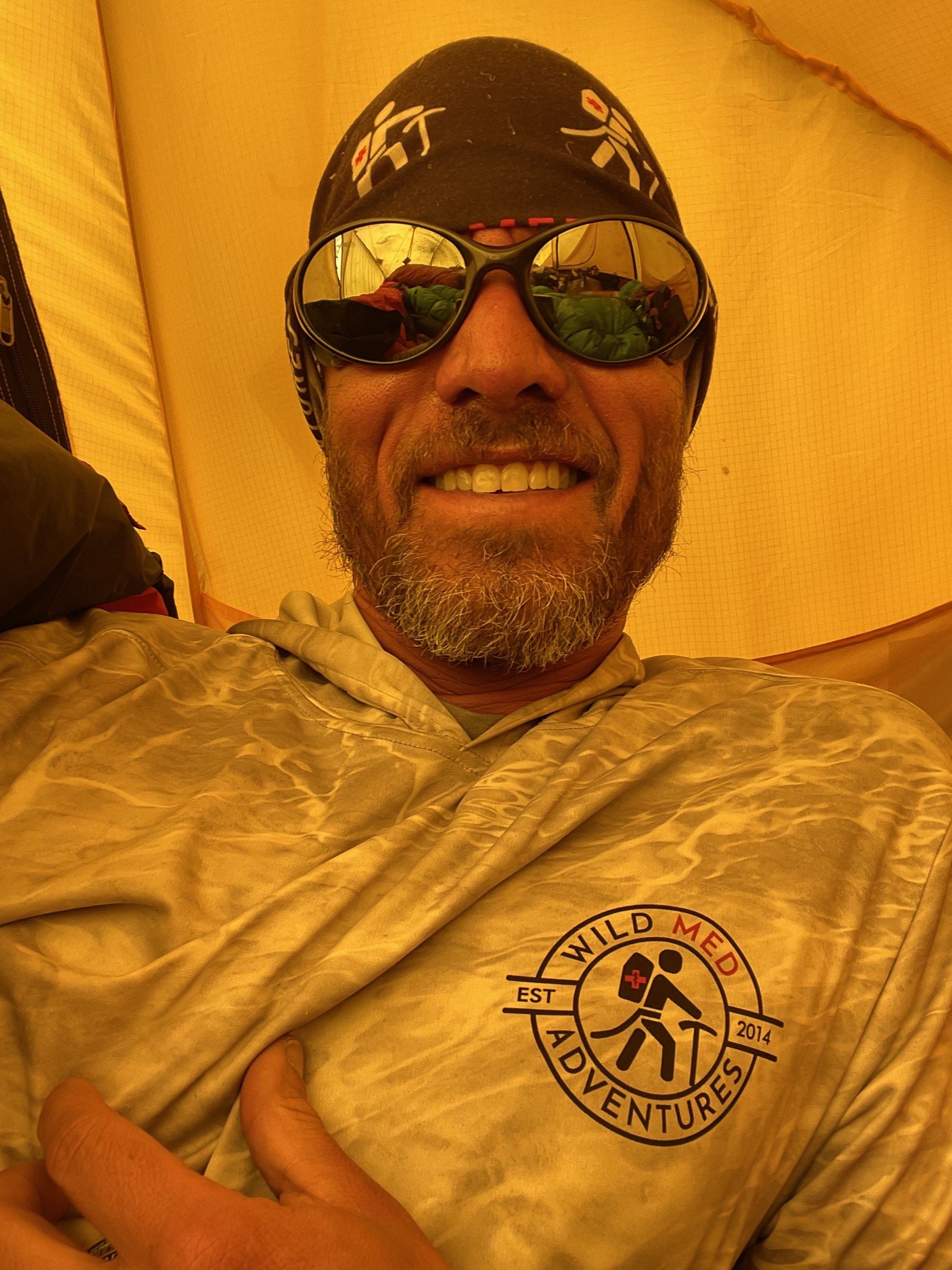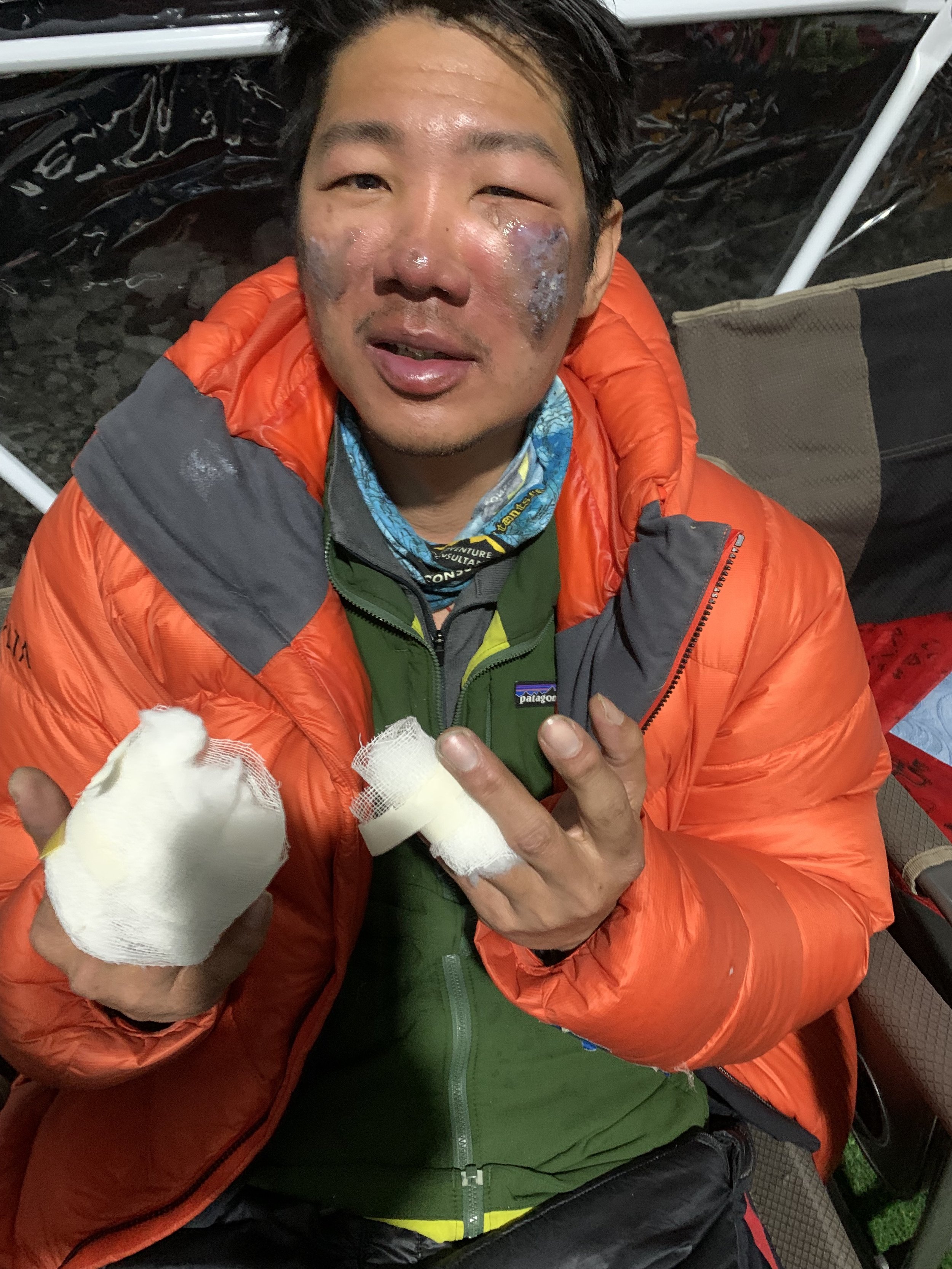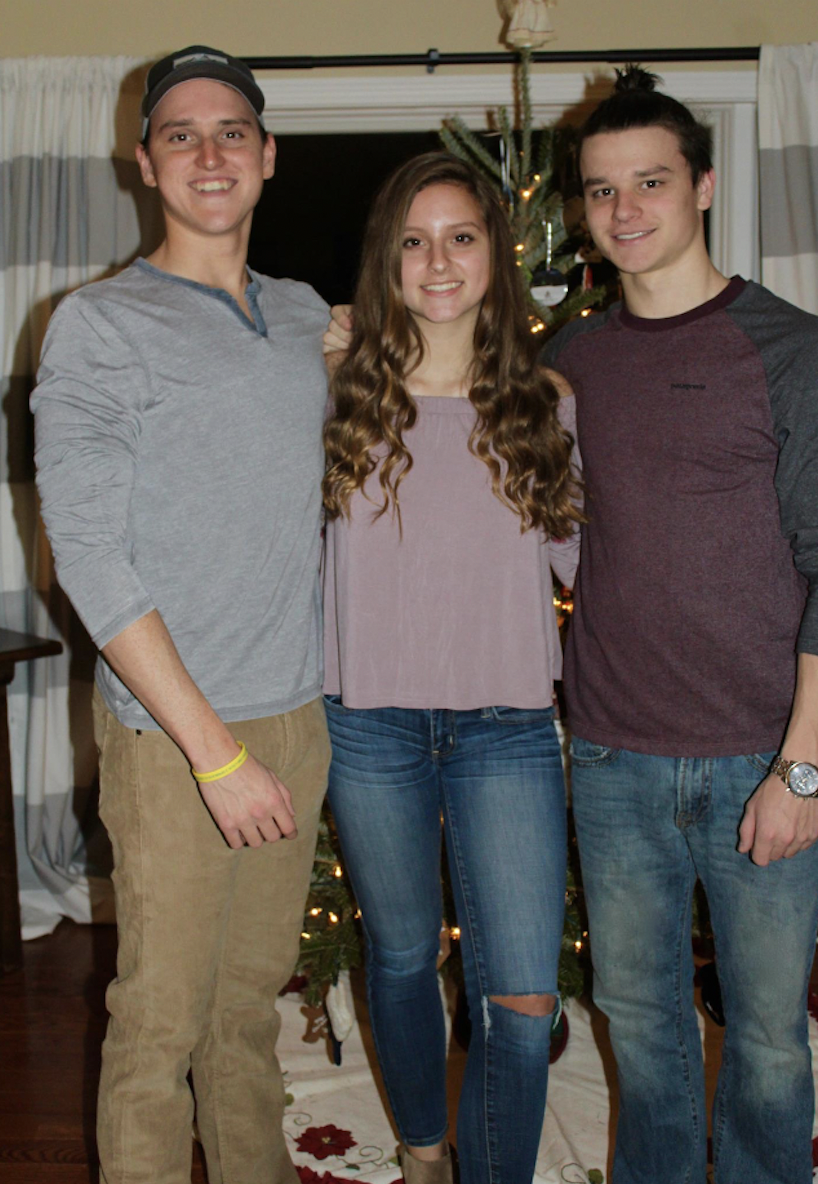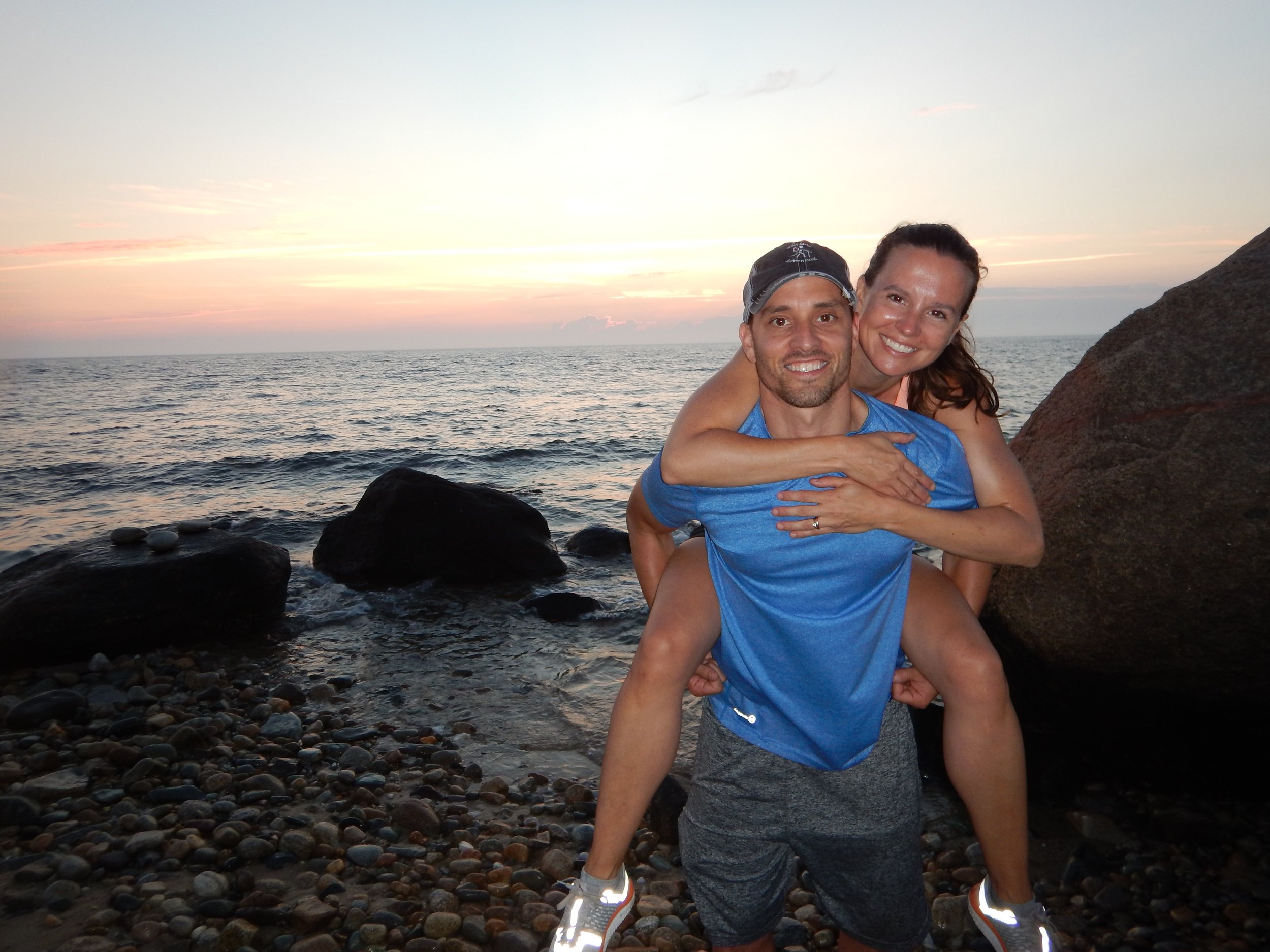Everest Expedition 2023
Hello Everyone,
I finally have rested up and sat down to discuss my thoughts, opinions and experiences on our recent EBC Trek and Expedition - 2023.
We arrived in Nepal April 4th with a group of 27 including myself, my wife (Jenni), my dad (Bruce) and my daughter (Amber). We hosted a CME (Continuing Medical Education) course in Nepal hiking to Everest Base Camp. The plan was to lead the group to Base Camp and I would stay and climb Lobuche as well as Mt. Everest while my wife and other instructors (Thanks Brian, Jaime, Adrianne & Jeff) would lead the team back to Kathmandu and home. We had a large group of many friends, previous conference attendees and new clients consisting of many different specialities and backgrounds. What an amazing group!
**Quick Thank You to Grand Himalaya Treks and Expeditions for an amazing experience and setting up all the logistics as well as all of our CME attendees, friends and family for their support.
EVEREST TRAINING:
(Not interested in this bit - skip to next section) - But let’s start with the training. There are many different programs available to begin your fitness training. Jenni and I almost always have a pretty good baseline given we enjoy running, hiking, lifting weights and being active. Given we run so many adventure courses and climb pretty regularly - we have created our own routines for Kilimanjaro and other mountains. I tweaked this routine and added a bit more cardio than usual. A normal week would be 6 days of daily work-outs and usually one day of rest or Yoga/Stretching. I am happy to share my routine which seemed very adequate for climbing Everest if anyone is interested. Example Below. I use a combination of weights/running/hiking with a pack, and various other strategies such as soaking in an ICE BATH daily! This was new to me and I really enjoyed it. There are lots of benefits to Cold-Water Therapy which my son, Adam, introduced me to (I’ll let you do your own research on that topic)
Training takes a huge amount of discipline especially when trying to work, run adventure courses and maintain all your other daily chores and responsibilities. However, training pays dividends when at altitude and struggling with exhaustion both physically and mentally. Most climbers find themselves in trouble when pushed to exhaustion on the upper slopes of Everest. It’s great to have family or a partner that is supportive and likes to train with you. Jenni was by my side every step of the way and we enjoy spending that time together. I started this routine nearly one year in advance with several high altitude climbs scheduled into the year such as Kilimanjaro and climbing volcanoes in Ecuador with good friend and Wild Med Instructor: Myung Bae. See pics below.
EXAMPLE WEEK:
Monday:
Warm-up: 3/4 rounds; 10x squats/8x Hand Release Push-ups/20X Step-ups
1400x Step-ups (16 inch box) with 35lb Backpack @ Moderate Pace (Substitute at hiking with pack = 1866 feet verticle)
Tuesday:
Warm-up: 3 rounds; 8x squats/8x Push-ups/Run 100m
2 Rounds: 2 Mile Interval Pace (4 miles Total)
Evening: 3 Rounds; 5x Squats/5x In-place Lunges/5x Hand Release Push-ups
2 Rounds Full Leg Blaster / 6 Rounds Mini Leg Blaster (squats, lunges, jump lunges and jump squats)
Weds:
Warm-up: 3 Rounds; 10x Squats/6x HR Push-ups/20x Step-ups
1400 Step-ups with 35lb pack
Thursday:
Run 8 Miles
Evening: 3 Rounds; 5x Squats/5x In-Place Lunges/5x HR Push-ups
2 Full Rounds Leg Blaster / 6 Rounds Mini Leg Blaster w/ Push-Up wieghts
Friday:
Warm-up: 3 Rounds; 5x Squats/5x In-Place Lunges/5x HR Push-ups
2 Rounds Full Leg Blaster / 6 Rounds Mini-Leg Blaster / Weighted Push-ups
15 Minute Grind: 10x Slashers / 5X Sandbag Getups (50lbs) / 10x Good Mornings with 50lb
Saturday:
Run 12 Miles
Sunday: Off or Yoga/Stretch
EBC (Everest Base Camp)TREK:
We arrived in Kathmandu and met our group with formal introductions, lectures and some local sight-seeing in Kathmandu. Guided Tours included Boudhanath and Pashupatinath. We then flew to Lukla to begin our first trek to Phakding. We had beautiful weather and amazing views. Day 2 - we trekked to Namche Bazaar and acclimated there for 3 nights with hikes to “The Everest View Hotel” and Kunde Hospital.
We then went to Tengoboche with an incredible monastery perched high on the mountain and then on to Dingboche. 2 Nights in Dingboche allowed us to check out Cafe4410. From here, we trekked to Lobuche then Gorek Shep and finally to Base Camp where we got to stay 2 nights. Thank you “Imagine Nepal” for all of the BaseCamp amenities. Shortly before our arrival, 3 sherpas from the “Imagine Nepal” rope fixing team were killed in the Khumbu Icefall - which has you really questioning why you are about to attempt this climb. No mountain is worth putting yourself at risk of losing your life especially when you have such an amazing family and so much to live for. I made a promise to Jenni that if another Avalanche or Serac falls and kills a climber that I was coming home.
Check out some pics from our Trek:
The Climbing Begins . . .
And just like that the group was heading out and I was left at basecamp. Luckily, my dad (Bruce) who has climbed with me all over the world had decided to stay and climb Lobuche with me and hang out at EBC while I climbed Everest to give me some company. What a relief !
Shortly after the group left, we headed back to Lobuche Village for a night and then off to High Camp to climb Lobuche East 6119M.
Dad started with a really bad cough and congestion and despite my encouraging him not to go - he wanted to at least try for the summit. We started off around 1am for the long trek up Loboche with mixed Ice/Rock/Snow variations. Nearly at the Summit - Dad was advised to turn around due to his severe cough and fatigue which really sucked because he was so close to the top. Nevertheless, I was happy to have him safely descend to basecamp while Pemba and I topped out for my first summit in the Himalayas.
Below are some pics of our summit climb and surrounding mountains. After meeting back up at High Camp (approimately 9 hour climb), we took a short break and decided to head back to Lobuche due to the snow and concerns about leaving the next day. After only a short break, we proceeded to hike 6 additional hours back to Lobuche which really did a number on my dad given no sleep and his (likely developing pneumonia).
Back at BaseCamp:
Dad’s condition worsened as we hiked back to BaseCamp and I was really worried about him. At night, his oxygen saturation dropped to 49% and he was blue with severe cough and congestion. We started antibiotics, steroids, acetazolamide and had back-up oxgyen available if things worsened. We contacted Global Rescue who was amazing at coordinating a helicopter evacuation. However, due to bad weather, we had to spend one more night at Base Camp. Despite Dad wanting to stay, we both knew the best option was to evacuate and go back to Kathmandu and then home to recover from the recent infection.
Alone at BaseCamp - I had to try to focus my energy on staying well both mentally and physically and stay positive about the up-coming climb as much as possible. This was very hard for me as all of my past climbs I have been surrounded by friends, clients or family which makes things fun and entertaining. Mentally, it is hard to explain the emotions that are going on inside of you: Why am I taking unnecessary risks? Am I being selfish/greedy for my desire to climb the 7 Summits? How did I end up here? What if I leave my family without a father?
I would tell myself . . . I have nothing to prove. I just enjoy climbing mountains but are the risks here too high? There are so many uncontrollable variables such as the avalanches in the ice fall, global warming, overcrowding, unpredictable weather - am I making a mistake?
As these emotions ran through my mind, I still had an incredible desire to climb the highest peak in the World. I am generally good at making the right call: knowing when to turn around, when the weather doesn’t allow someone to climb, keeping my safety in check. I know there are always certain risks with any climb and I knew Everest had many risks, but I also have always believed that we should live our dreams. I guess my motto has always been, “one should be adventurous and daring but not reckless” . . . and Everest seemed to be teetering more on the “reckless” side.
FIRST ROTATION:
Shortly after Dad left, it was time for my first acclimatization rotation up the mountain and through the dangerous Khumbu IceFall. We prepped our gear and I knew we had to try to move as fast as possible. We headed out at 2am with our headlamps and about 1 hour into the hike we came upon our first road-block. Nearly 50 people queued at the first vertical ice wall. After waiting nearly 45 minutes to an hour, my feet got really cold and I again questioned why am I doing this. There are too MANY people!
Descending one of many vertical walls in the IceFall
We eventually made it through the Icefall / multiple ladders / beautiful ice sculptures and crevasses / and vertical ice walls which was all stunning. We landed at Camp 1 after nearly 8 hours which should have taken more like 5-6 without lines. The IceFall was absolutely stunning and would have been really enjoyable if the known danger wasn’t lingering in the back of our minds.
Having reached Camp 1, I really began to question why I was doing this again? I told my guide, “Pemba”, that I didn’t think this mountain was for me and I was concerned if we got stuck “in a line”near the summit that I had a high risk of frostbite and other injuries. I actually nearly called off the climb at that point due to the long lines and dangers of the IceFall. However, he encouraged me to wait until the next morning. I awoke to beautiful sunshine, amazing scenery, and decided that I was going to climb Everest and that I wouldn’t teeter back and forth on my decision anymore. (My only promise to Jenni was that if another avalanche struck or hurt someone in the IceFall then I would call off the climb).
We headed up to Camp 2 uneventfully and then trekked up to the Lhotse Face the next day. We then descended back to Everest Base Camp in 3 hours the following day for some rest and to wait for a good weather window. The initial acclimatization rotation was complete.
Long lines in the IceFall
Waiting for weather:
Now the waiting game. On Everest, you have to wait, acclimate, wait some more and cross your fingers for a good weather window. You then have to hope that there are multiple good weather days so that not everyone tries to summit on the same day which means long lines, slow movement, and possible congestion leading to unnecessary delays, injuries and death.
After coming off the mountain, the weather turned foul. High winds and snow meant sitting around camp. We decided to descend to Dingboche about 12 miles down from EBC. We stayed there 3 nights, had a few beers, lots of games (Ludo Neo-Classic - iPhone app), laughed a lot and visited the ole’ Cafe4410 once again. I have to say Pemba is a great guy and we really got to know each other during this several month climbing adventure. I appreciate his friendship and now consider him part of my family. We then trekked back to Lobuche for a night and then back to EBC. One day rest and then we headed off to Pumori High Camp for an amazing view of the Icefall, Everest, and Lhotse.
After back at camp and a few more days rest (lots of coffee at the BaseCamp Cafe - Thanks Ngima), the weather cleared and we decided to make a run for it. We left Everest Base Camp at 2am once again - this time no lines and made it up in 5 hours! After a long restless night of high winds and listening to the tent rattling, we got up early and trekked up to Camp 2.
While at Camp 2, our climbing Sherpa (Lakpa) became much more sick and was unable to take necessary oxygen to Camp 4. At this point, I thought we had to abort the climb and I wanted to make sure the safety of everyone was top priority. However, Pemba decided to take oxygen to Camp 4 and meet me back at Camp 3 the next day. I climbed to Camp 3 with Imagine Nepals team and met Pemba there the next afternoon. Anyone who has been on the mountain, would understand what an incredible feat this was for Pemba. Having little sleep, he climbed all the way to camp 4 dropped off oxygen and then descended back to Camp 3 to meet me. There, we caught a few hours sleep, and got up early to head to Camp 4 / South Col. Due to long lines and inability to pass, it took us nearly 9 hours to get to Camp 4. We arrived at 6pm. This left us 2 hours to rest, eat, drink and prepare for the Summit. We took off shortly after 8pm with zero sleep to make our summit push.
Summit Day:
Shortly after 8pm, we took off for the Summit. This is where being a night owl my entire life and having zero circadian rhythm came in handy! I love the dark night. Feeling refreshed and energized from bottling adrenaline for nearly a year, we took off. We were nearly stopped in our tracks on the first vertical climb as over 50 climbers slowly edged up the mountain. I yelled to Pemba in the lead and said, “I really don’t think we can make the summit in time at this pace”. He just looked at me and smiled and said “Follow Me”. The rest of the morning was spent unclipping from our safety line and running uphill around 8-10 climbers at a time. I didn’t have to worry about getting cold as I could hardly catch my breath racing after Pemba. We eventually made our way to the front of the lines and had the entire South Summit, Hiliary Step, and Summit Ridge to ourselves. There were only a few people on the summit when we arrived. We took many pictures and rested on the Summit for about 30 minutes before turning around for the descent. I kept telling myself, “You are only half way” - be safe, be consistent and don’t rush.
As we descended the ridge and Hilary step, the crowds arrived on their way up. This is where things got dangerous. The climb is too steep and too narrow to safely pass other climbers. This required me to intermittently take off my safety to allow others to pass around me.
Suddenly, without warning, I was yanked from the ledge when a climber fell and jerked the rope I was tied into. I shot like a bullet off the ledge and found myself hanging from the safety line. Although a fixed line is useful in an accidental fall, it also ties you to other climbers and allows for others to cause harm while attached to the same rope!!! I slammed my left knee into a rock but after taking a deep breathe I was aware that nothing appeared to be seriously injured. That was until I took a big step on my left leg. The pain shot up to my hip and the medial side of my left knee was in severe pain. I knew I would be okay but it was going to be a long day. I couldn’t help but imagine that if I had broke my left leg - I would have died on the mountain. All from something I couldn’t control - too many people tied to the same anchors and safety lines. In addition, hour after hour of watching people step on the ropes with their sharp crampons and ropes being frayed from rubbing over sharp rock edges, there is little confidence that “the safety line” will actually hold a fall. Unsettling to say the least! After a full days descent and carefully trying to get around those who were still coming up - we made it to Camp 4. I climbed Mt. Everest! I was extremely grateful for the summit, my new friend Pemba, the beautiful climb, and that we had safely made it back to high camp.
The Descent:
We woke from Camp 4 and made our way to Camp 2. This took many hours and again - long lines and congestion from other climbers coming up. When we got to the “Yellow Band” a section nearly half way between Camps 3 & 4 that consists of steep rock/ice, someone slipped behind me and their leg with crampon slid between my legs and took me out. I was holding all of our weight on one ankle and one hand carabiner belay. Pemba helped secure my Jumar onto the rope so that we could right ourselves. During these descents, hundreds of people are tied into the same rope and descending while using a hand belay. One person can accidentally fall and take out the entire team/group. Again, very unsettling and a great thing to think about on your way down, exhausted with a bum knee- hah.
In addition, a sherpa died at camp 4 and they were in the process of his body recovery from C4 to the lower mountain. This was an extremely deadly year due to high winds, crowding and cold temps. During this recovery, the lines were at a hault and we unfortunately were stuck on a very steep rock/ice face for over 45 minutes. It’s hard to describe the experience and emotions during these times. The physical demand of standing on uneven and steep terrain for a long period of time and the emotional toll of seeing a life lost on the mountain while worrying about your own safety is quite overwhelming. We eventually made our way to Camp 3 and took a short break before proceeding on to Camp 2. During the descent, Pemba leaned over and his phone slid out of his front pocket and fell rapidly over the edge of the mountain and some 2000 feet to its demise. When we crossed the Bergshrund onto the lower glacier, Pemba wanted to look for his phone and felt terrible that the majority of our summit photos were on it. He searched the lower glacier over crevasses, determined to find his phone. I told him not to worry about it as I have nothing to prove. I climb for the enjoyment of climbing and regardless the memory of being on the summit with him would be ever-lasting. Bummed, we eventually headed on down to Camp 2, where we celebrated with some of the other climbers. Knowing we still needed to descend the IceFall the next morning, I laid awake for hours that night tossing and turning.
The morning came and we packed up all of our remaining gear and headed down to EBC. The IceFall route had changed once again as part of the route had been covered by ice debris and avalanches. We rapidly descended to minimize our exposure and made our way back to EBC for a cold beer and coca-cola. I called Jenni to let her know we were safe and sound and we cracked the long-awaited bottle of “Buffalo Trace” I had brought from home. The feeling of finally reaching EBC safely and returning from the Summit was such a relief!
That evening 2 additional avalanches crashed down from Nuptse and covered the right hand side of the Icefall - you just never really feel all that safe while on the glacier.
I said my goodbyes to Nancy, Ralf, Mary-Beth, Ngima, the Everest ER Crew, and the Imagine Nepal crew and flew out by helicopter the next morning with Pemba.
Final thoughts?
I have asked myself “was it worth it?” many times . . . and I think the answer would be “NO”
First off, no one is climbing Everest without the amazing sherpas, all the logistics and support from guiding teams, and a bit of luck. Recognizing their hard work and effort must be first and foremost. Second, something has to be done to limit the numbers, make sure everyone is qualified to climb, and limiting the demands of the Sherpas.
Everest has become a circus. I had read about it and seen the pictures but until I was there I couldn’t really understand. There are too many luxuries, too many people (many of which shouldn’t be there climbing), and too many uncontrollable risks.
RISKS:
My good friend with frostbite due to cold temps, long summit day and high winds.
-Too many people means long lines, fatigue, low oxygen and danger. This puts uncontrollable risk into the factor. If one person falls, that could be your life on the line. It is impossible to climb around or trust strangers attached to your rope.
-Avalanches, global warming, and hanging seracs all introduce another element of uncontrollable risk. Climbing through the Icefall introduces possible death every time you cross it. This is an unacceptable amount of risk in my opinion. Three sherpas lost their life in the Icefall to begin the season, yet we traveled that same route through the Icefall 4 times - knowing the instability of the ice and surrounding snow and ignoring it.
Unfortunately, like my good friend “Kiti” many ended up with frostbite or worse.
LUXURIES:
I am not used to climbing with dining tents, gourmet meals, cafe’s, and the entire route roped. To be honest, I didn’t even take an Ice Ax on the Summit Push. The fixed lines have taken some of the mountaineering skills required out of the equation. I don’t feel this is “TRUE” mountaineering. I am not saying that this mountain isn’t hard - IT IS! It is extremely difficult and dangerous and I don’t want to diminish the accomplishments of many, but it is a very different from others that I have climbed. Without fixed ropes, the majority of the climbers on Everest wouldn’t make it. Many climbing clients have essentially no backpack and buy “unlimited” oxygen carried on the backs of the many sherpa.
LIMITS:
There needs to be limits. Limiting the number of permits or requiring more experience from the climbers. Due to the cost of the climb, sherpas and guides must feel guilty saying ‘no’ or you must “turn-around” but they MUST be able to do so without pressure or guilt. Clients need to know that their guides and sherpas have the final say when it comes to terminating their climb and they should be obliged to listen. Just because someone paid to climb, does not mean they have the right to put others’ lives in jeopardy. There is no easy solution to this problem, but it must be addressed in great detail.
With that said, I met some amazing people and had an incredible experience. The decision to climb will be different for everyone and the Pros/Cons should be weighed carefully. I’m not saying you should or shouldn’t climb Everest - but knowing what you are getting into should be obviously apparent. Don’t let a “Goal” or your “EGO” or your “Drive” push you to the point of no return as many did this year on the mountain. Over 12 people have lost their lives on Everest this year with many of them being Sherpa trying to rescue others. That just isn’t justifiable in my opinion.
To me, my greatest climbing accomplishment will always be summiting Denali as an unguided team of 4. We made our own decisions, cooked our own meals, did our own navigation and route finding, and made it up as a team. This took lots of planning, route finding, endurance, training, skill, and determination. There are many mountains out there - so decide what is important to you, know the risks vs rewards, and go find your next adventure.
Everest 2023 Injury Summary
“The count will likely be over 17 deaths (12 currently with at least 5 missing), over 60 cases of frostbite, 90% Dry Cough URI . . . 20 rescue flights daily including 14 long line rescues” Good Read below in an article written by Robert Mads Anderson - a friend I met previously climbing Mt. Vinson in Antarctica.
HOME SWEET HOME !
My Kids: Jay, Amber and Adam
It feels so good to be home. I am extremely grateful for my amazing friends and family. I am overwhelmed with all of the love and support. Thank you so much for all the well wishes, congratulations, thoughts, prayers, and encouragement.
I love the mountains but more importantly the friendships and experiences I have made along the way. It’s not about “The Summit” but more about personal growth, experience, friendships, pushing yourself to your limits and learning from other cultures and backgrounds.
I’d like to also thank all of our Wild Med Everest Base Camp trekkers for their support and friendships along the way!! It was great to meet all of you. (If anyone is interested in joining our Everest Base Camp CME Trek or other Mountain Medicine Courses - Click Below)
I also want to thank my beautiful, smart, athletic, supportive, adventurous and thoughtful wife, Jenni, for always being the rock in my life. Always supportive of my sometimes outrageous ideas and adventures. We have been together essentially our entire lives and I wouldn’t know what to do without her. Thank you Jenni for keeping everyone updated while I was on the mountain so I didn’t have to think about social media or FB posts!
Thanks to my kids for their thoughtful support and encouragement and I hope that I can instill in them a sense of adventure and to seek their dreams regardless of what others think or believe. Everyone has the right to live their own path. Amber, Adam and Jay are all truly incredibly bright and amazing human beings! Thanks for being “YOU”!
Thanks Dad (Bruce) for always encouraging me to be the best I can be. For teaching me that laughing and singing through life is the best medicine. For climbing with me all over the world and sharing these life experiences and supporting our adventures.
Thanks Mom (Debra) for always being supportive of me and your warm heart.
Thanks Grand Himalaya Treks & Expedition Pvt. Ltd, Sherpa Wongmu, Pemba Sherpa and the entire Himalaya Team. You went above and beyond for our team and helping me reach the summit. I now have a new Brother (Pemba)! All of your hard work, kindness and organization helped lead to our successful summit.
I am very happy to have had the “Everest" experience (and be back home safe and sound) and I have enjoyed all the friends, guides, and awesome people I have met while completing the 7 Summits.
Thanks Again and Climb On!
-Ben


